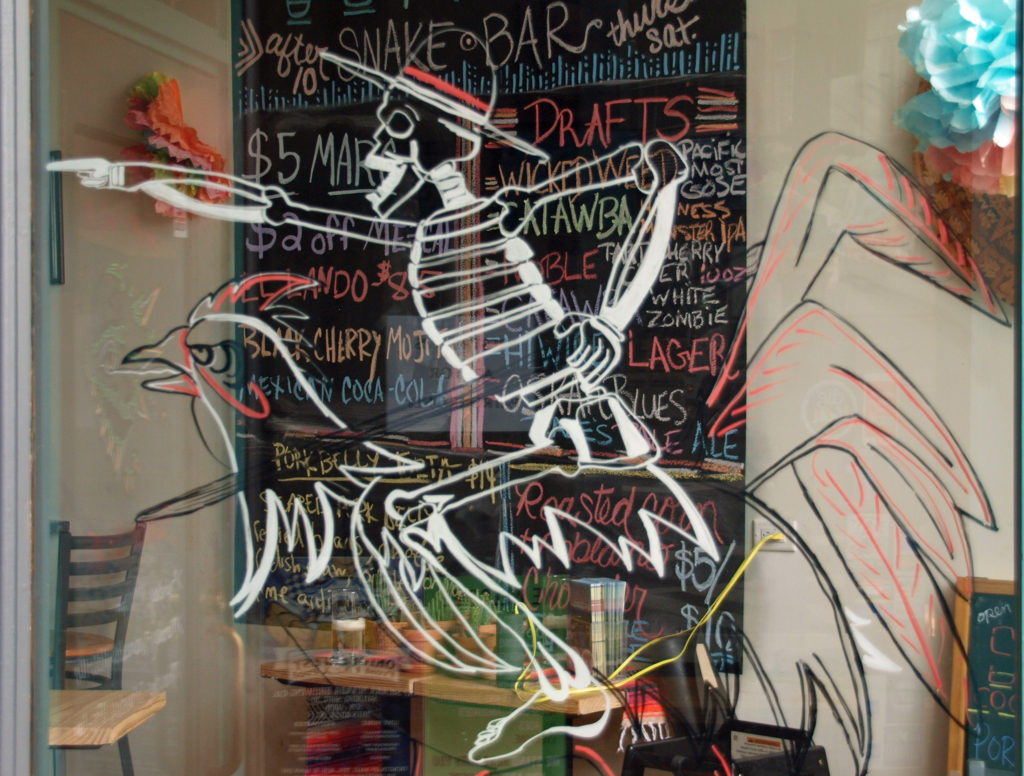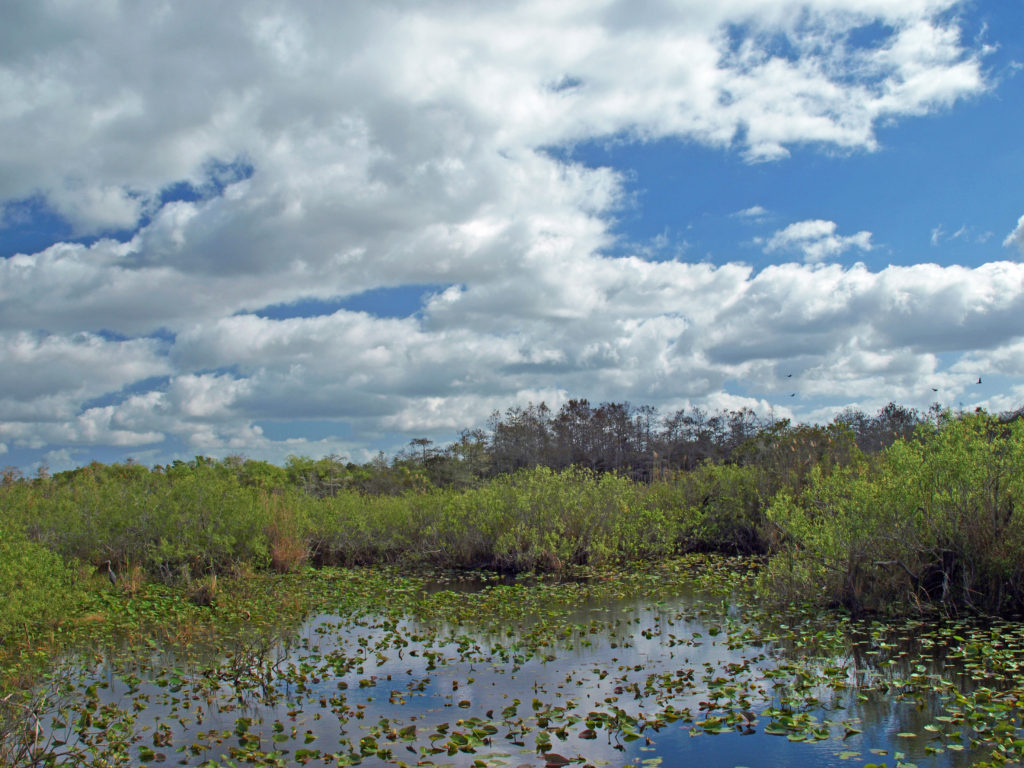
A few years ago my wife and I had the privilege of exploring Key West, the rest of the Keys, and Everglades National Park on a winter getaway.
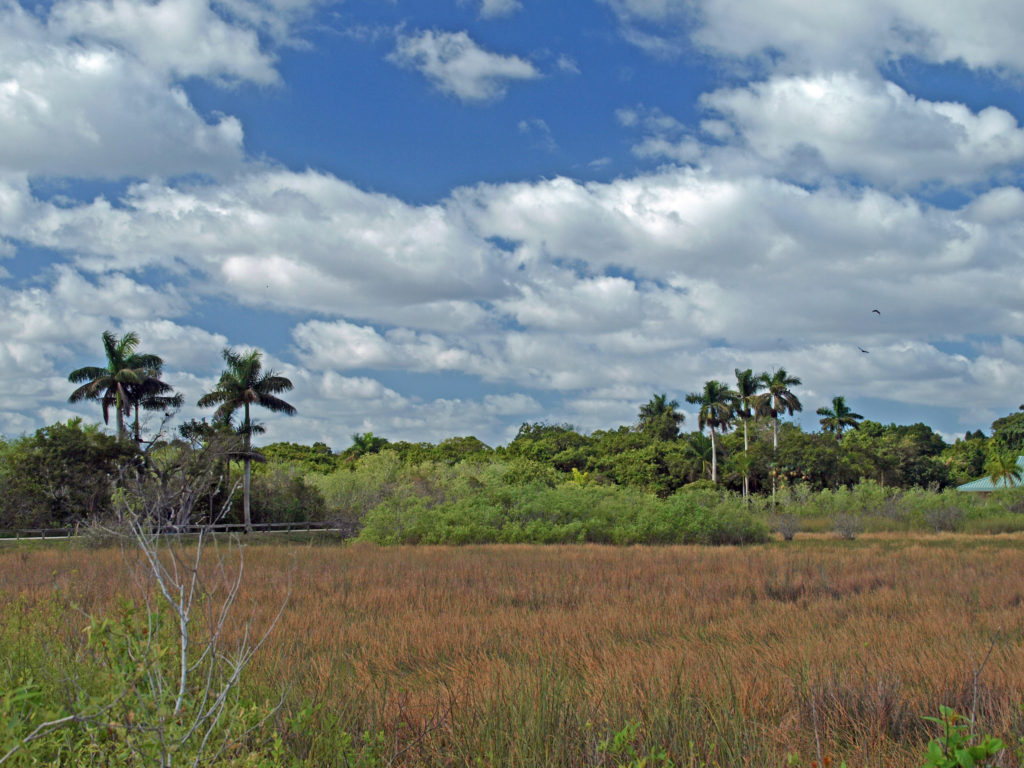
The Florida Everglades are about as far from our home in the Pacific Northwest as you can get without leaving the continent. I always envisioned the Everglades as swamp and marshland and nothing else, but it’s actually a quite diverse ecosystem. Wetlands make up much of the park, to be sure, but grassland covers a lot of it, too, with islands (called “hammocks”) of hardwoods scattered throughout. Pines dominate the higher ridges. Cypress swamps are found mainly in the northern part of the park and the adjacent Big Cypress National Preserve. And the coastal areas have both mangrove swamps and coastal prairie ecosystems.
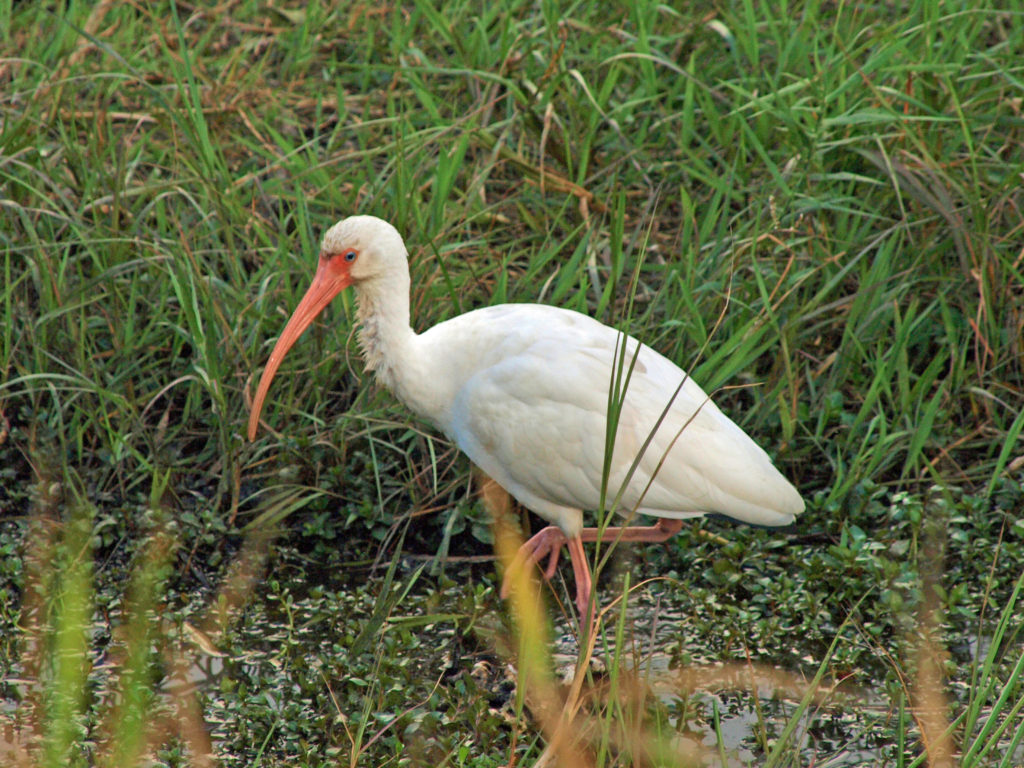
The park was created in 1947 to preserve what remained of the Everglades after nearly half of century of damming, diverting, and draining the waters of the “river of grass” that had once flowed unimpeded from Lake Okeechobee to Biscayne Bay, Florida Bay, and the Ten thousand Islands area on the Gulf Coast.
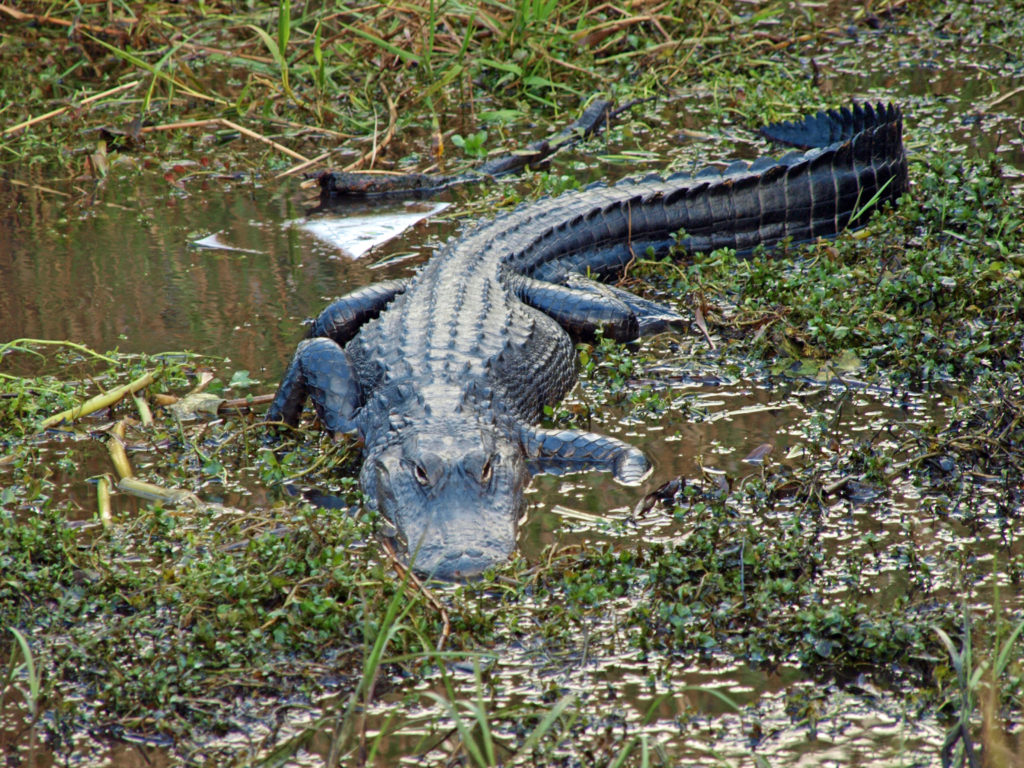 Today, the Everglades are still one of the most endangered ecosystems in the country. Diversion of water upstream of the park for use by the agricultural industry and the ever growing population of southern Florida has greatly reduced the volume of water flowing through the park, which in turn has had a significant impact on the flora and fauna of the park. Nutrient pollution and residual pesticides from agricultural runoff have also had a significant impact on the park’s ecosystem. Introduced species, such as the Burmese python, have also put stress on the system. And, since much of the Everglades is less than three feet above sea level, global warming and sea level rise threaten the very existence of the Everglades.
Today, the Everglades are still one of the most endangered ecosystems in the country. Diversion of water upstream of the park for use by the agricultural industry and the ever growing population of southern Florida has greatly reduced the volume of water flowing through the park, which in turn has had a significant impact on the flora and fauna of the park. Nutrient pollution and residual pesticides from agricultural runoff have also had a significant impact on the park’s ecosystem. Introduced species, such as the Burmese python, have also put stress on the system. And, since much of the Everglades is less than three feet above sea level, global warming and sea level rise threaten the very existence of the Everglades.
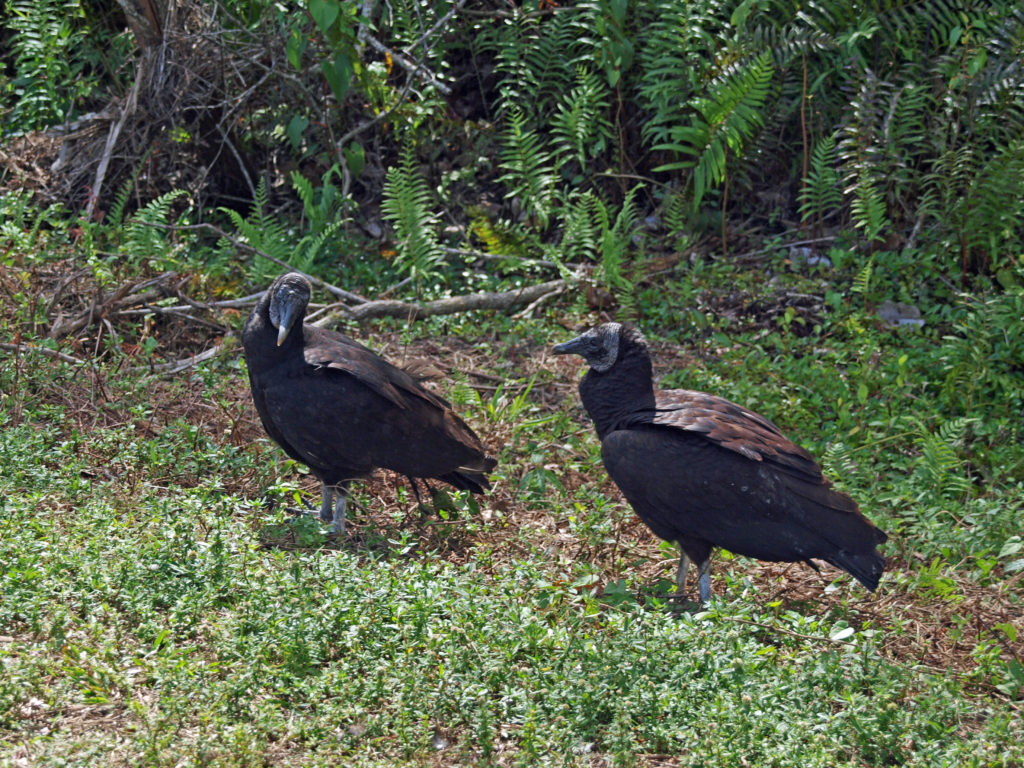
There are two main accesses to Everglades National Park. The Tamiami Trail (US Hwy 41) cuts across the northern part of park and southern part of the Big Cypress National Preserve, and gives access to the Shark Valley Visitor Center in the northern part of the park and the Gulf Coast Visitor Center in Everglades City. The southern part of the park is accessed from the Homestead and Florida City area via Florida Hwy 9336, which crosses the park and ends at the town of Flamingo on Florida Bay.
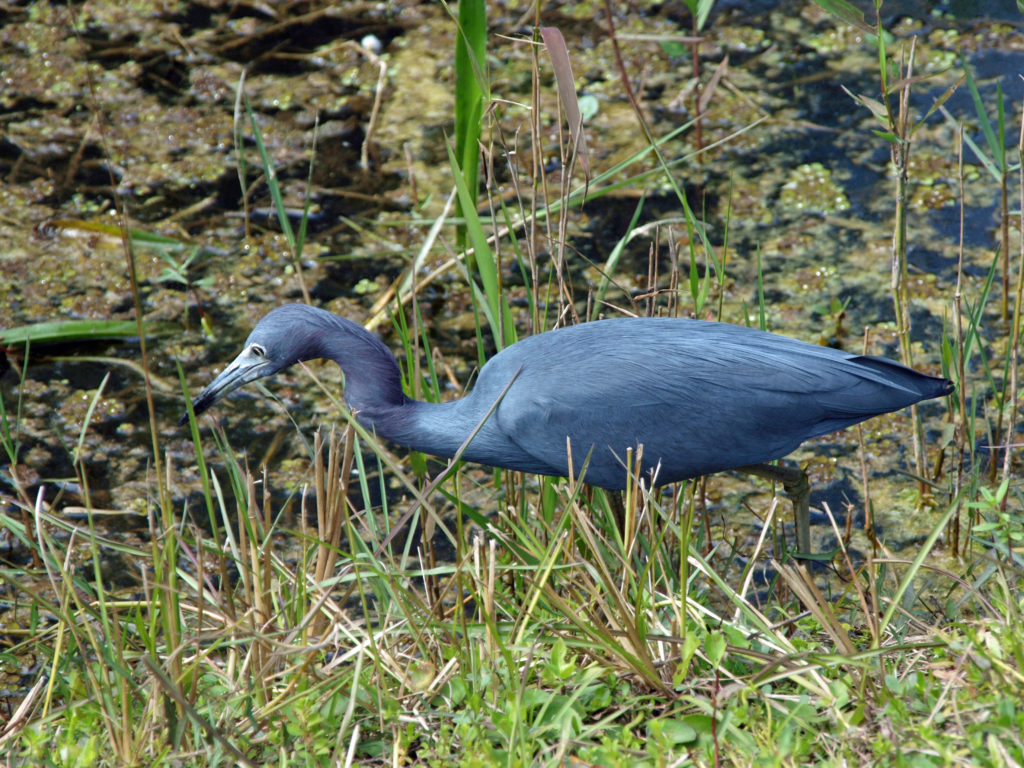
The Shark Valley and Gulf Coast parts of the park are well worth visiting, but if you only have a day to spend at the park, the southern section is more diverse and has more things to see and do than the other areas. Stop at the Ernest F. Coe Visitor Center, just inside the park boundary, to get maps and information on the park and park activities, but don’t spend a lot of time there. Instead, head to the Royal Palm Visitor Center.
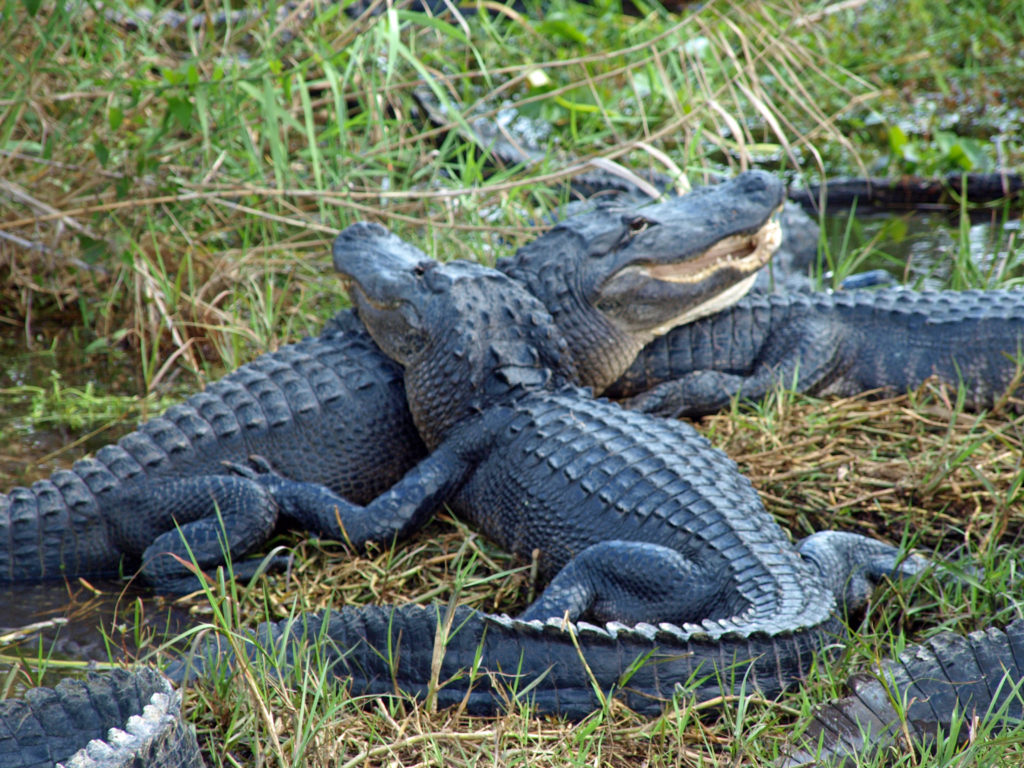
The guide books didn’t even come close to preparing us for what we found at Royal Palm. The first thing we noticed was that blue tarps covered many of the cars in the parking lot. It seems that the local Black Vultures, for some unexplained reason, are known to eat the weather stripping around car windshields. We dutifully covered our rental car with one of the park-provided tarps, though there were none of the car-eating vultures present. The visitor center is pretty much a standard issue national park center, but what’s outside will amaze you. Just outside the back door of the center is a large pond. The first thing we saw there was a large alligator, apparently asleep, only a few feet from the walkway. Yikes!
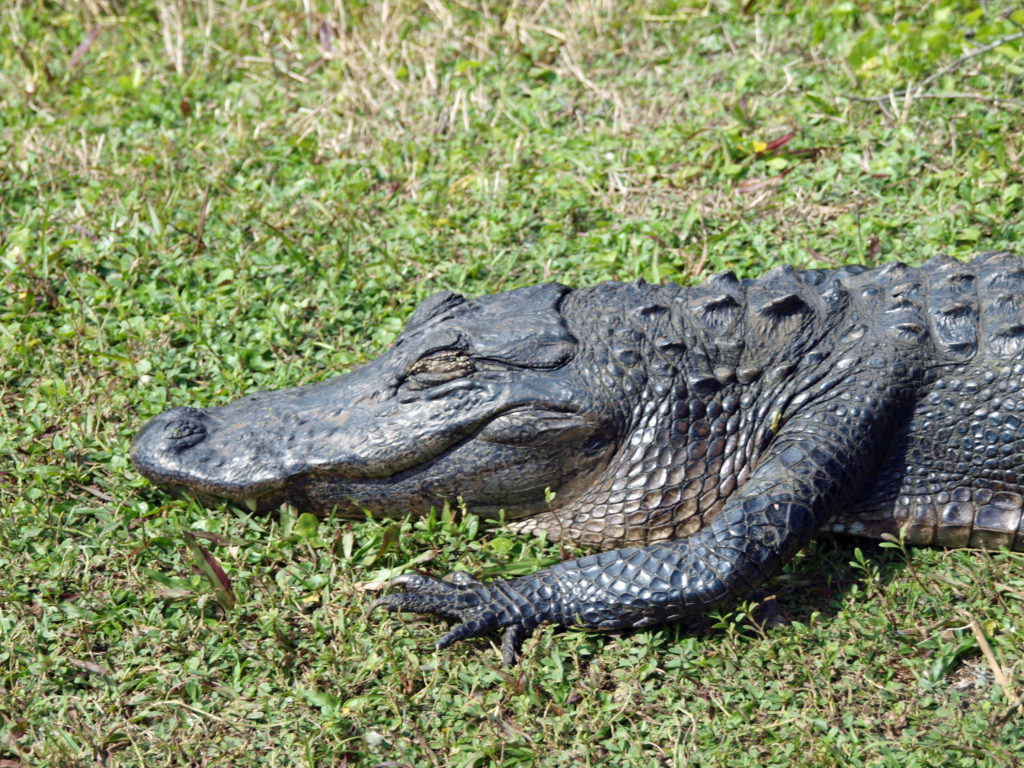
Sitting on a railing post next to the pond, a Double-crested Cormorant ignored the people walking within feet of it. Four or five Black Vultures stood a few feet off the trail looking more bored than threatening. Along the Anhinga Trail more alligators lounged within feet of the trail. One was actually laying part way onto the paved trail. We got close up views and photos of Great Blue Herons, Great Egrets, Little Blue Herons, Anhingas, White Ibis, Purple Gallinules, and many other birds along the trail. And in one water hole next to the trail, twenty or more alligators lazed together, maybe waiting for warmer weather (this was in February and it was unusually cold for south Florida). For a wildlife photographer, this place is paradise.
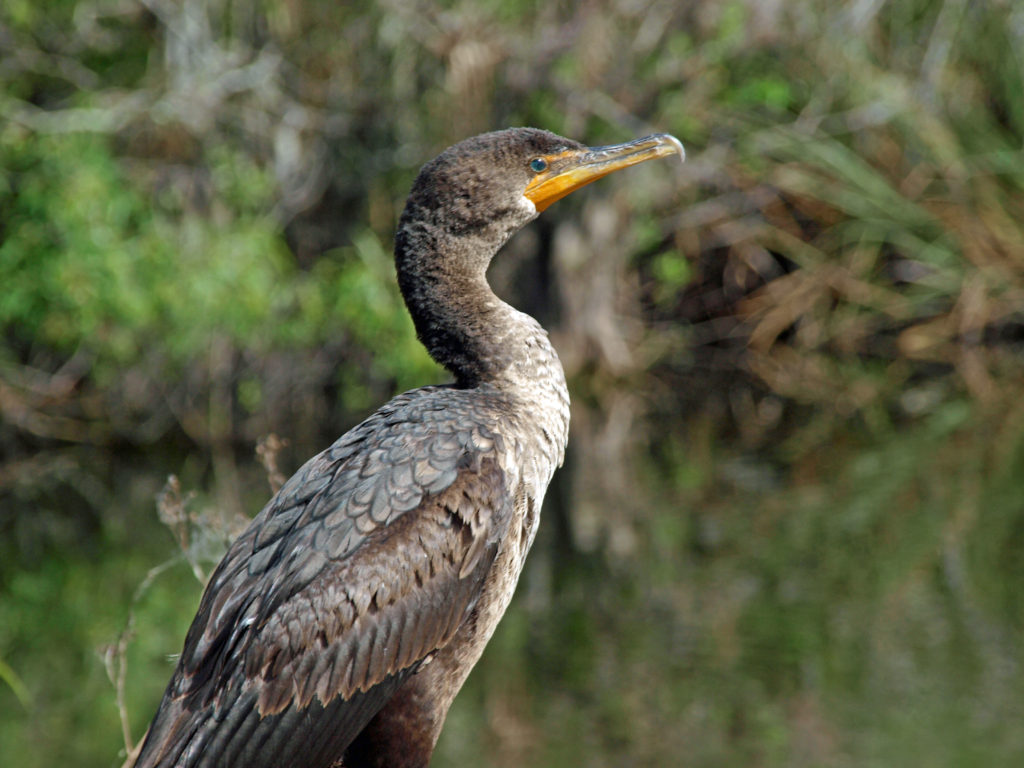
The other trail from the visitor center, the Gumbo Limbo Trail, takes you into a hardwood hammock. It’s less peopled and has fewer birds and other wildlife, but it is a nice, quiet walk and only takes a few minutes to do.
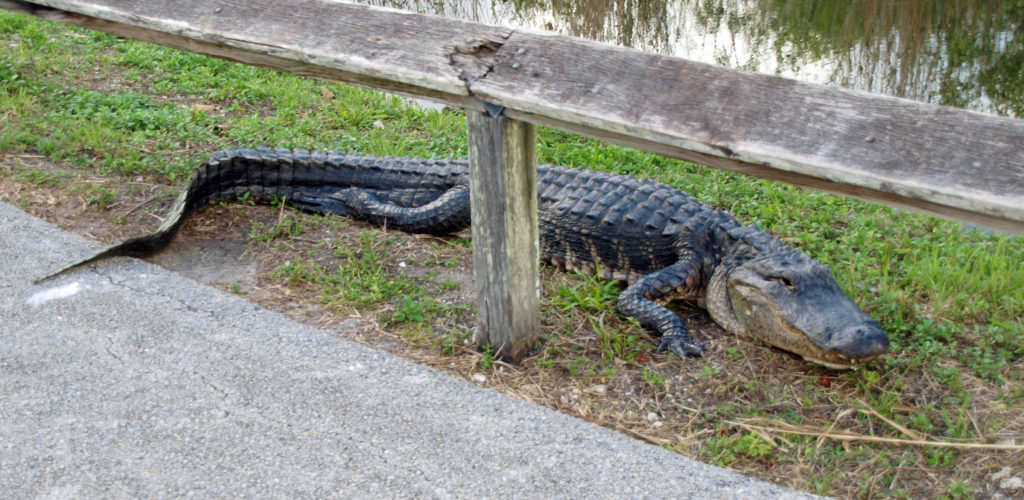
The sheer volume of birds and other wildlife at Royal Palm was astonishing, as was their total disregard for the people in their midst. No need for a long telephoto lens here.
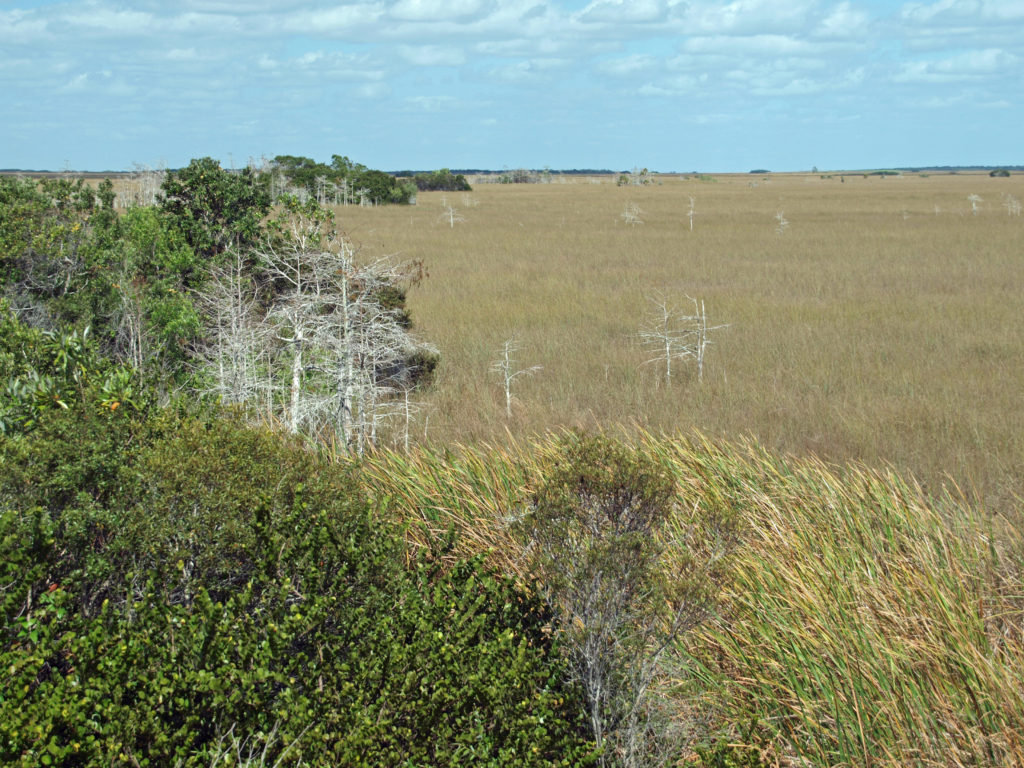 Farther along the road to Flamingo, the Long Pine Key, Pahayokey Overlook, and Mahogany Hammock stops offer short hiking trails. Canoeing and kayaking opportunities are found at Nine Mile Pond and West Lake. You’ll also find a nice picnic area at Nine Mile Pond, and another at Paroutis Pond.
Farther along the road to Flamingo, the Long Pine Key, Pahayokey Overlook, and Mahogany Hammock stops offer short hiking trails. Canoeing and kayaking opportunities are found at Nine Mile Pond and West Lake. You’ll also find a nice picnic area at Nine Mile Pond, and another at Paroutis Pond.
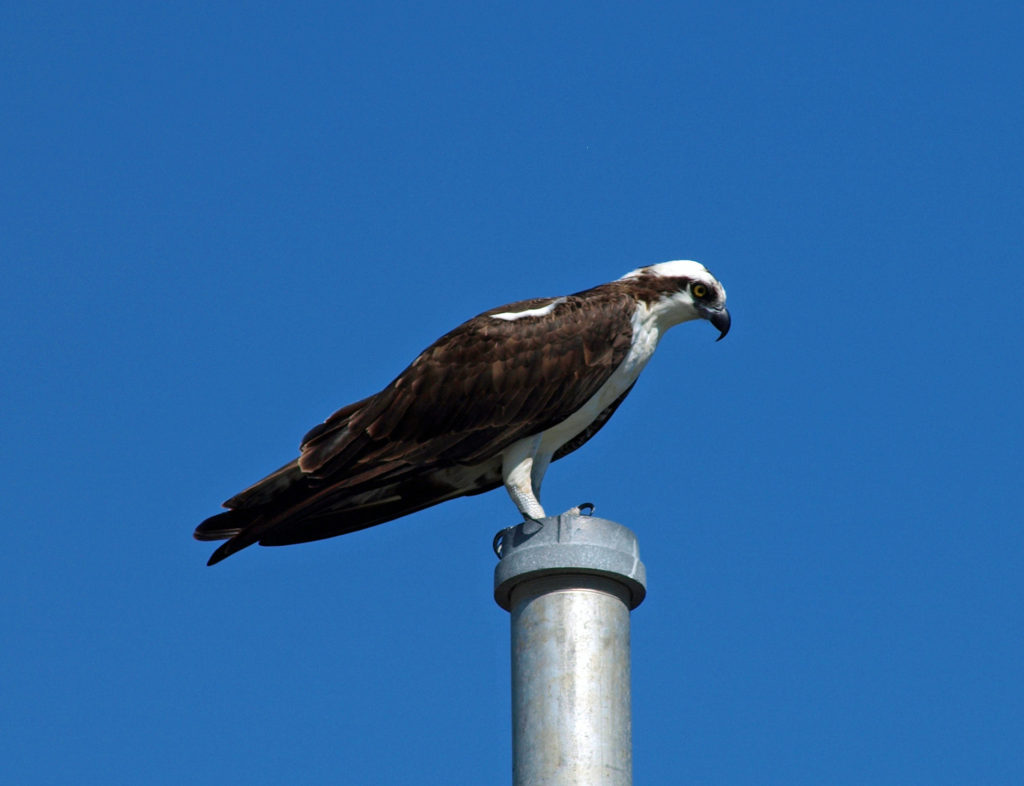
At Flamingo, get information on local area bird watching opportunities and check for ranger-led activities at the Flamingo Visitor Center. The center also has a small cafe where you can get sandwiches or a pizza. You can stock up on supplies at the Flamingo Marina Store next door. Manatees can often be found hanging out in the marina. A pair of Ospreys had built a nest on top of a pole at the marina when we were there, also. And you might catch a glimpse of the rare American Crocodile there. Ask at the visitor center if there have been an recent sightings and how to tell a crocodile from an alligator. The marina offers boat, canoe, and kayak rentals, and a 50 minute tour of the coastal area aboard a 30 passenger boat.
 We had planned to take an air boat tour the next day in the Shark Valley area along the Tamiami Trail, but there was rain in the forecast for that day, and the air boats apparently don’t run in the rain. So, it was on to Plan B. That took us to the Shark Valley Visitor Center and a naturalist led tram ride to an observation tower about seven miles to the south. You can also rent bicycles at the visitor center, and we probably would have done that if the weather had been less threatening. But the two hour tram tour was informative and entertaining, and the ranger stopped at every available photo op.
We had planned to take an air boat tour the next day in the Shark Valley area along the Tamiami Trail, but there was rain in the forecast for that day, and the air boats apparently don’t run in the rain. So, it was on to Plan B. That took us to the Shark Valley Visitor Center and a naturalist led tram ride to an observation tower about seven miles to the south. You can also rent bicycles at the visitor center, and we probably would have done that if the weather had been less threatening. But the two hour tram tour was informative and entertaining, and the ranger stopped at every available photo op.
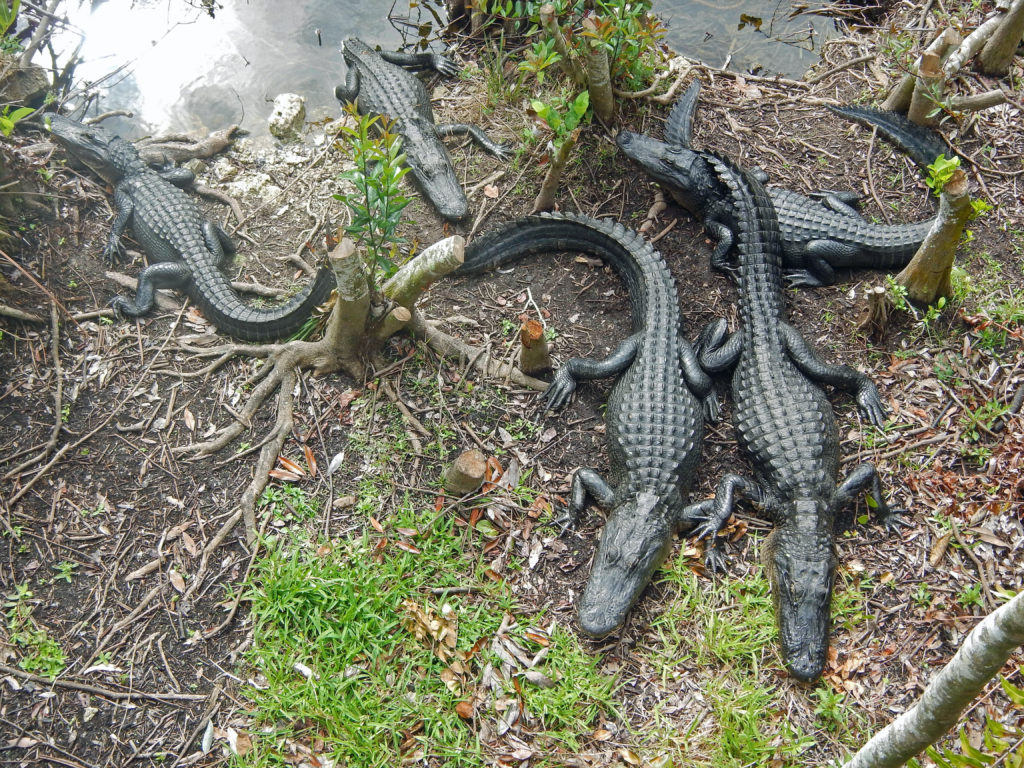
We saw many more alligators at Shark Valley, specially around the observation tower, and many, many birds, including Wood Storks, Roseate Spoonbills, and Red-shouldered Hawks. No sharks, though. The name Shark Valley comes from the Shark River Slough that flows through the valley. Some sharks do come upstream to give birth in the slough, but not in the area of the visitor center.
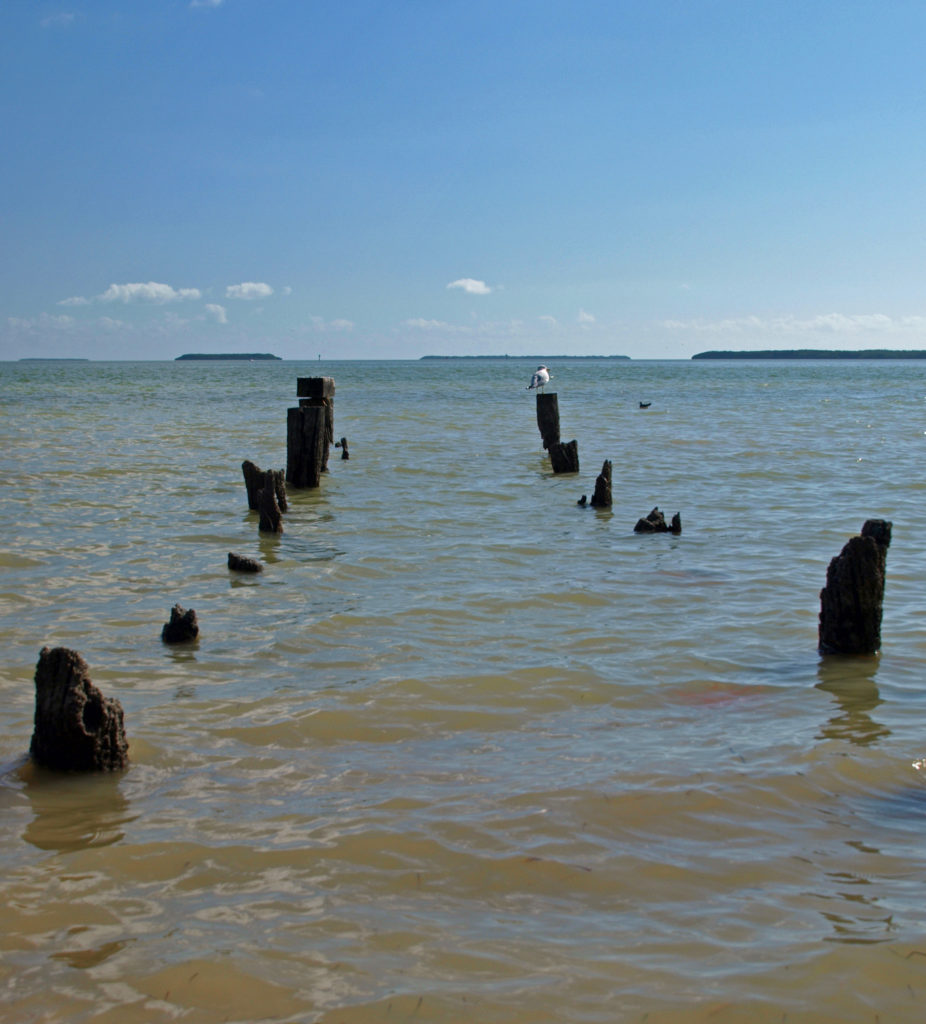
We continued west from Shark Valley to Everglades City and the Gulf Coast Visitor Center. This is the jumping off point for exploring the Ten Thousand Islands section of the gulf coast, and for paddling the 99 mile long Wilderness Waterway Trail. Naturalist-led boat tours can be arranged at the visitor center, and rangers lead bike and canoe tours between Christmas and Easter.
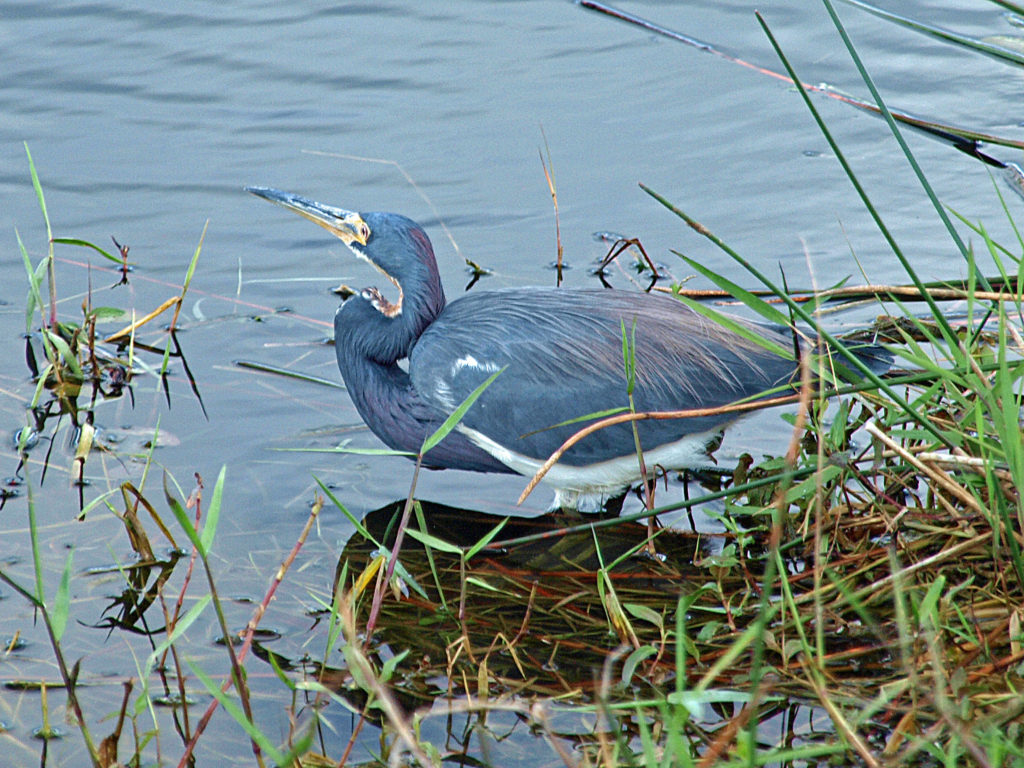
Anyone who has read Peter Matthiessen’s historical novel Killing Mister Watson will probably want to continue on past Everglades City to Chokoloskee. The book tells the story of Edgar J. Watson, a notorious, and probably murderous, real life character. Watson had never been convicted, but was suspected in many disappearances, and greatly feared. In 1910, on the beach next to the Smallwood Store in Chokoloskee, more than twenty men from the local area gunned him down, claiming self defense. None of the men involved were ever charged with his killing. The Smallwood Store still stands, though it is a museum now.
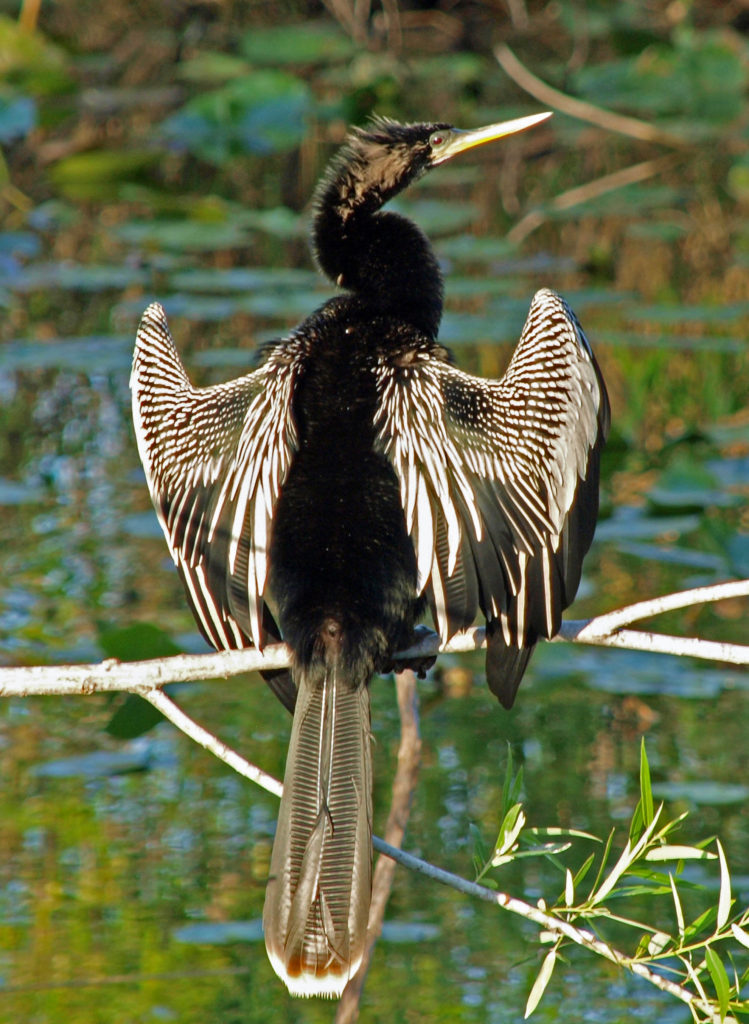
If you’re a birder, wildlife photographer, nature lover, or just someone that likes to see places that are different from where you live, the Everglades will thrill you.
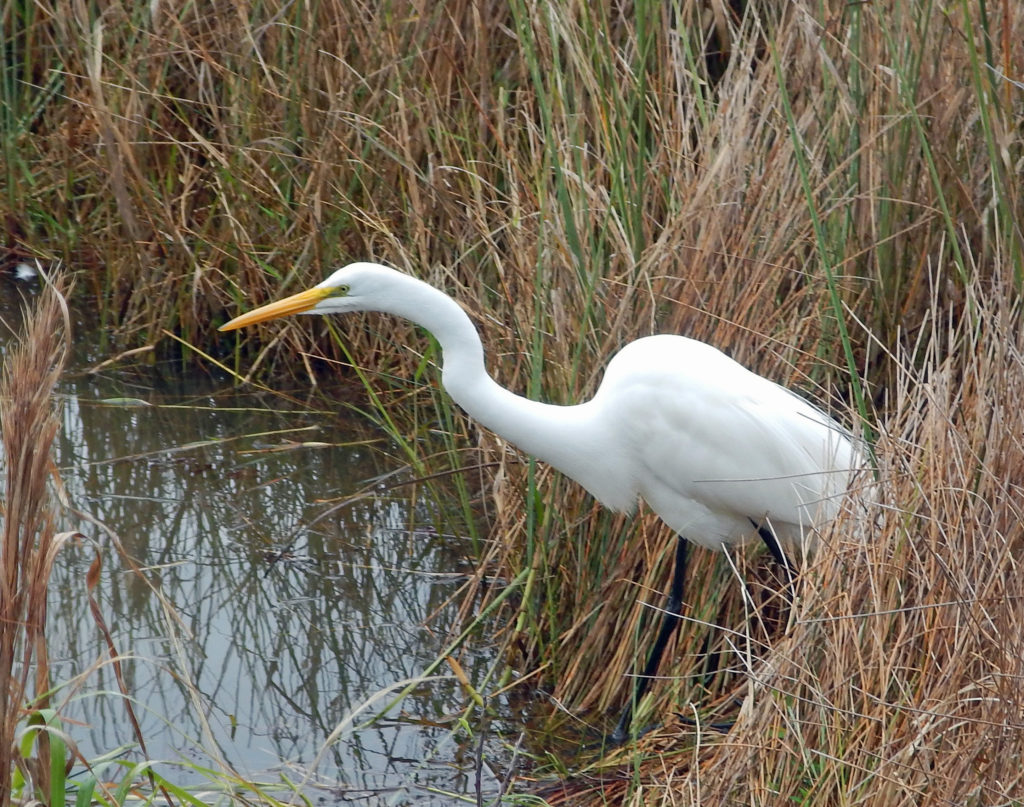
For more information about the park and the Everglades, go to the park website. And if you plan to visit Everglades National Park, no visit to south Florida is complete without paying the Florida Keys and Key West a visit.
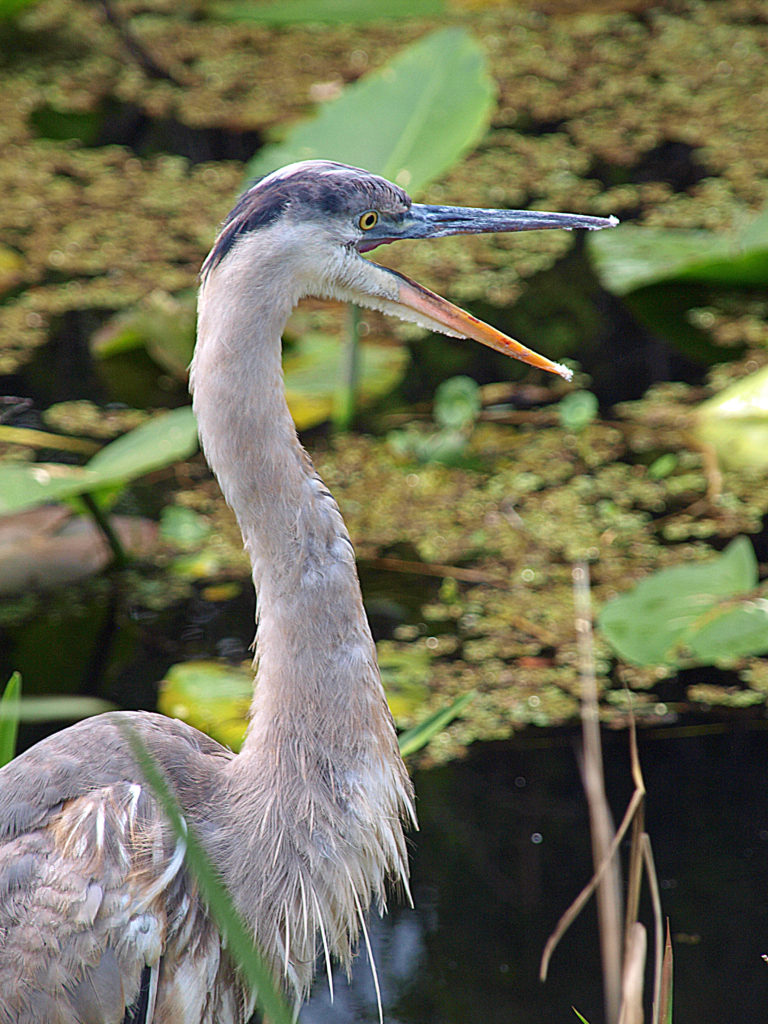
Originally posted December 4, 2018 by Alan K. Lee. Most recently updated February 27, 2024.
All photos © Alan K. Lee

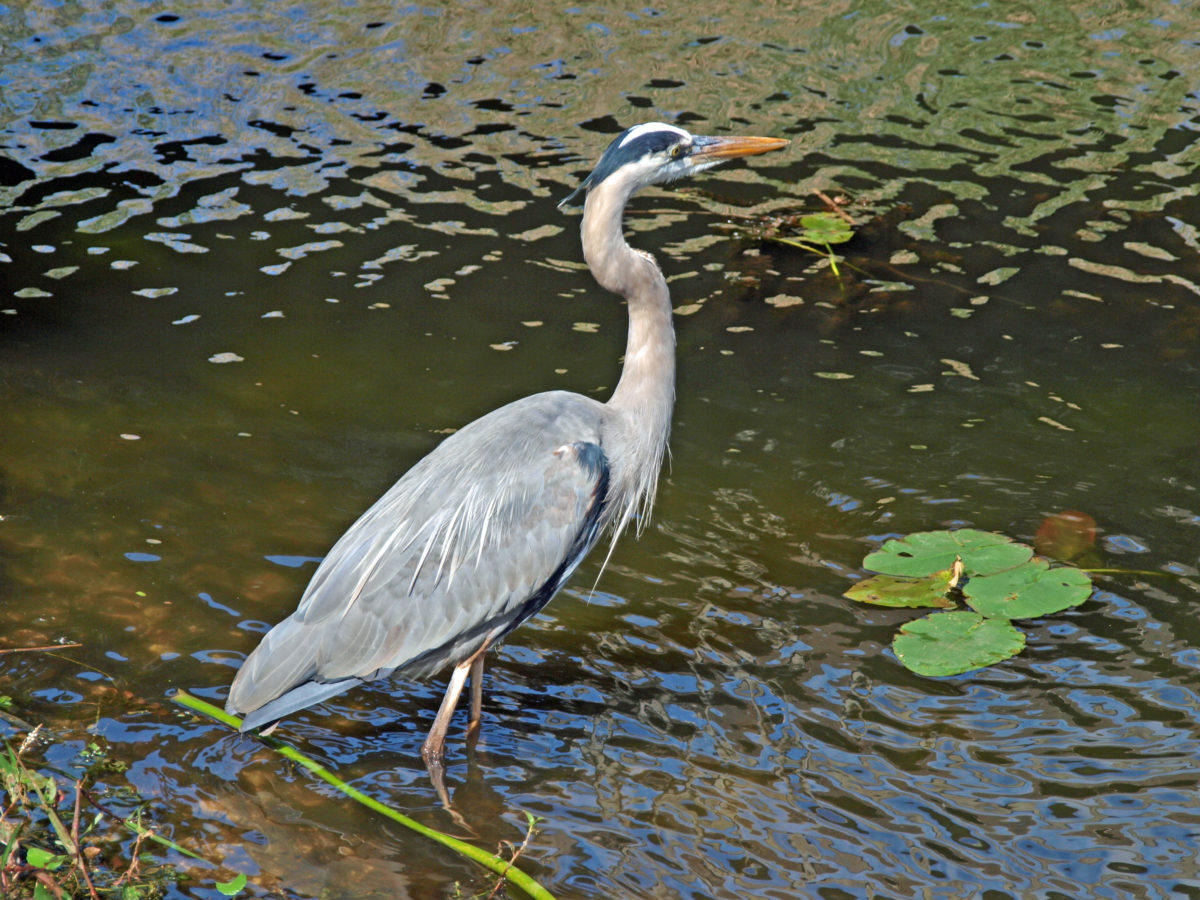
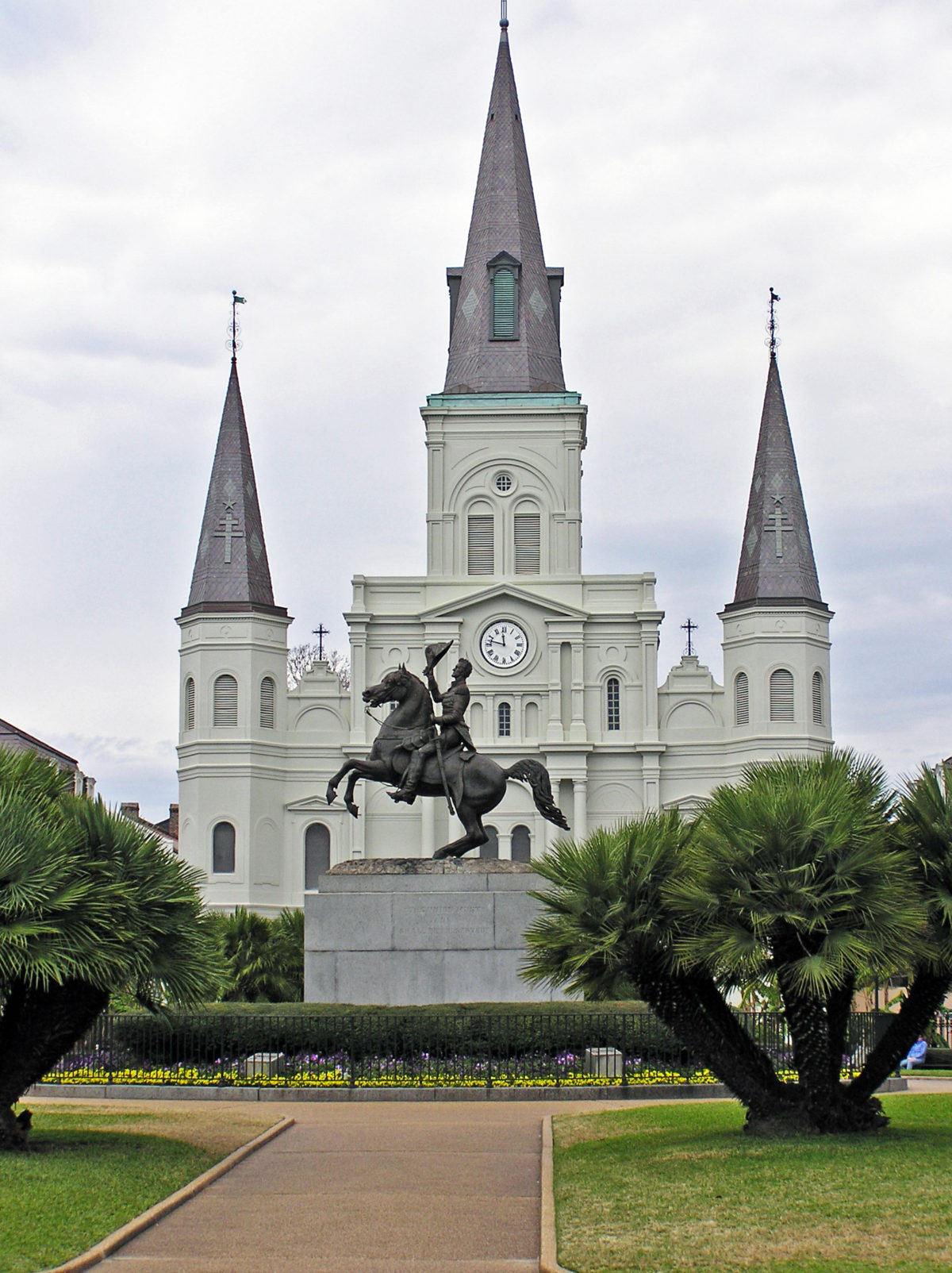
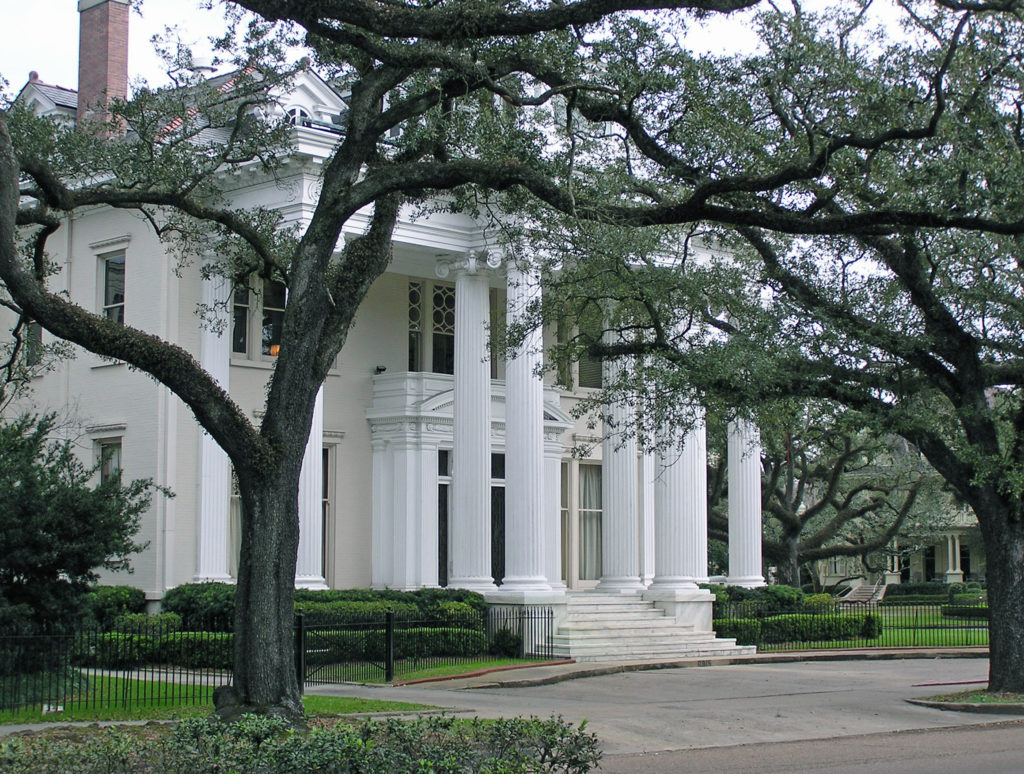
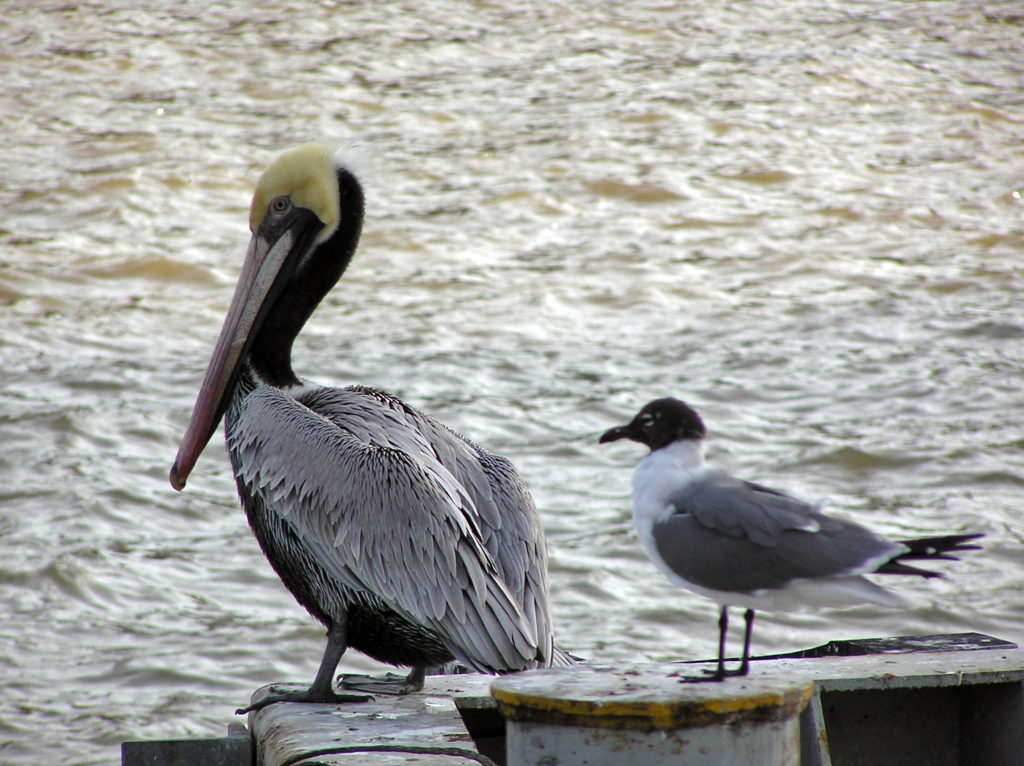
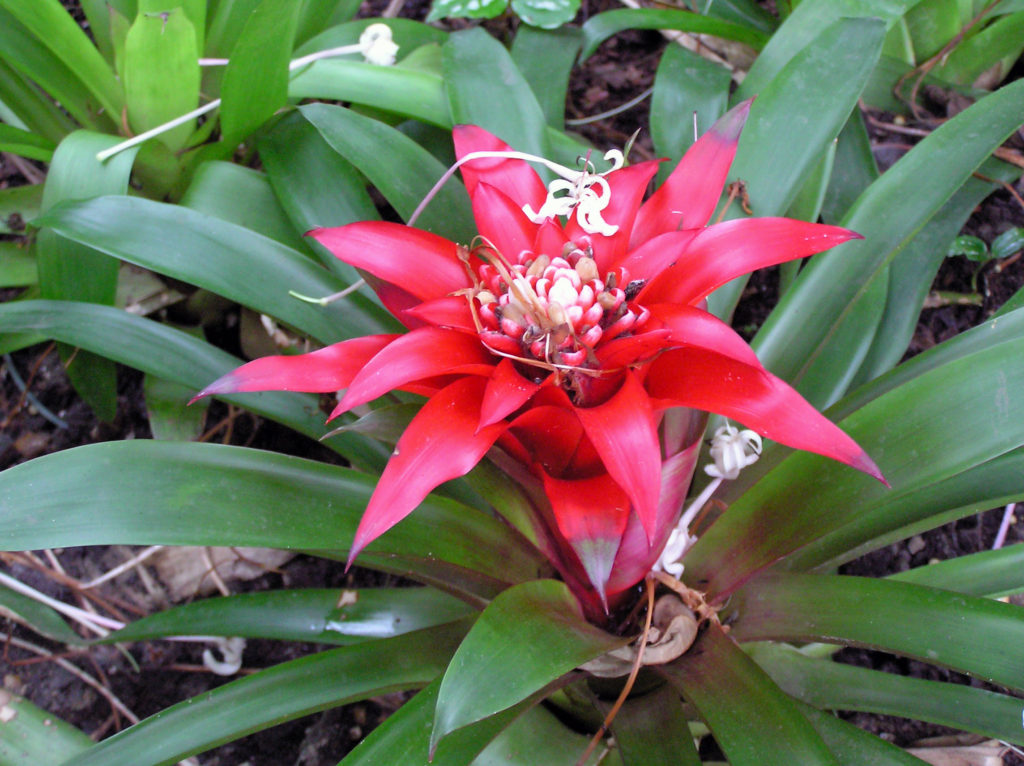
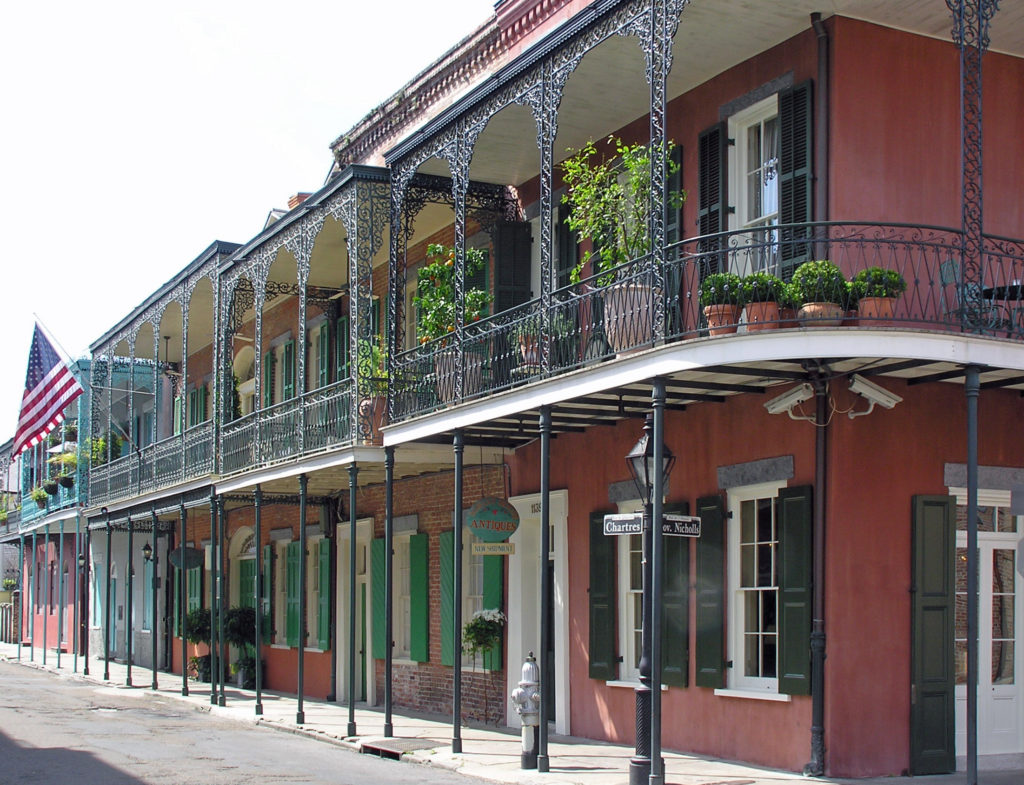
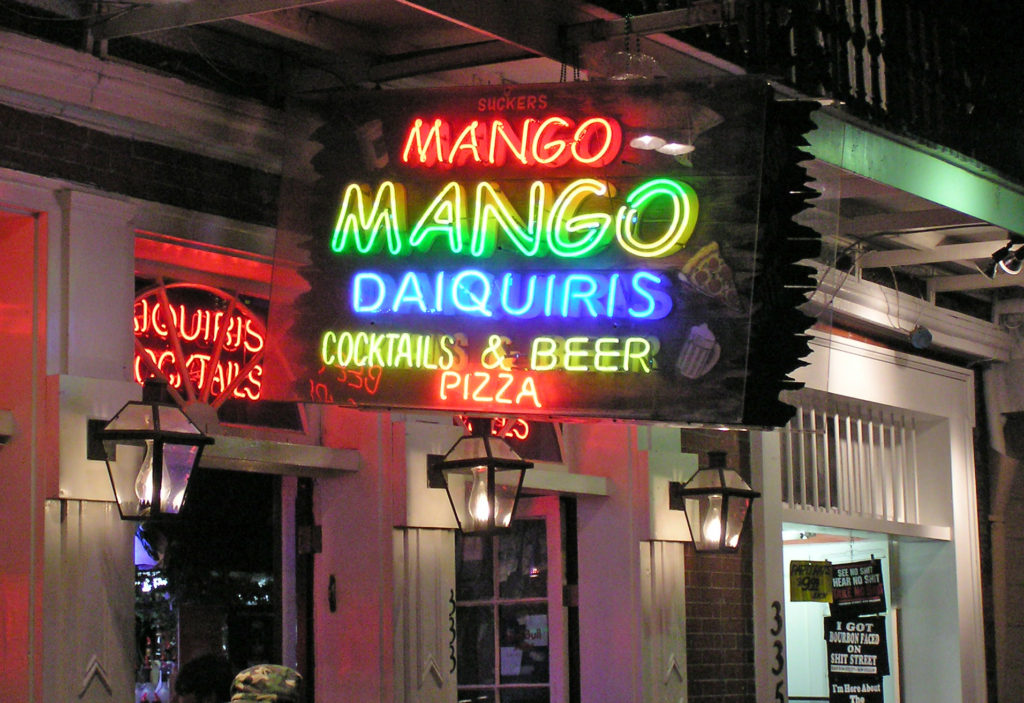
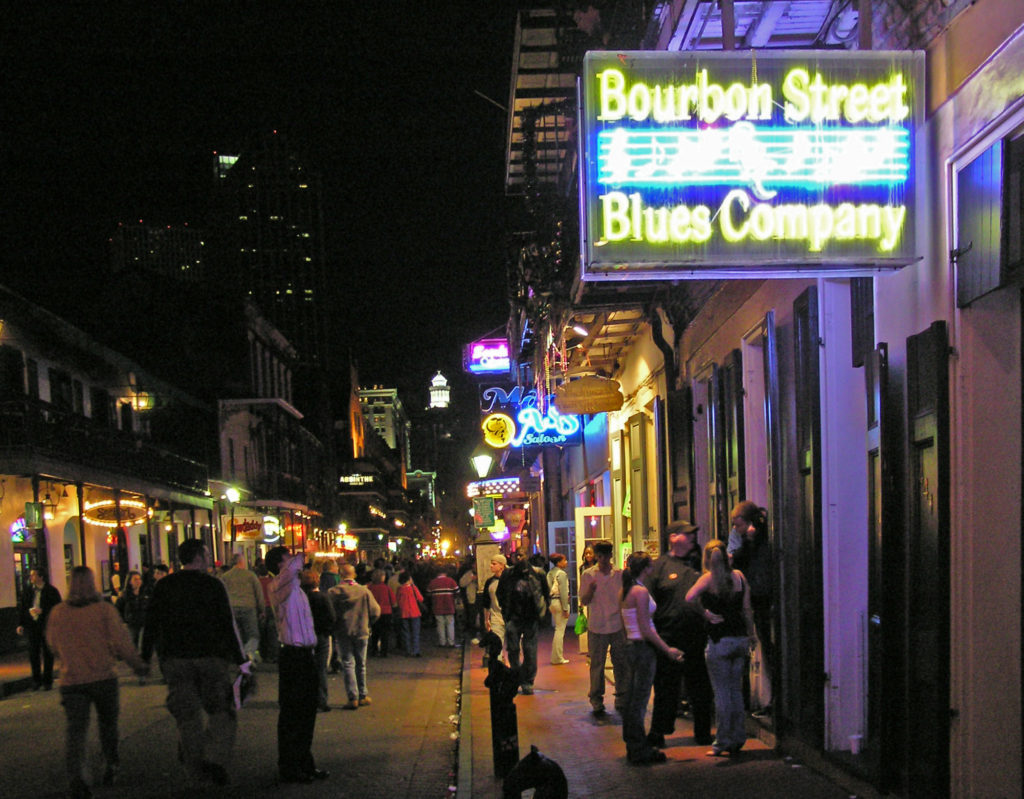
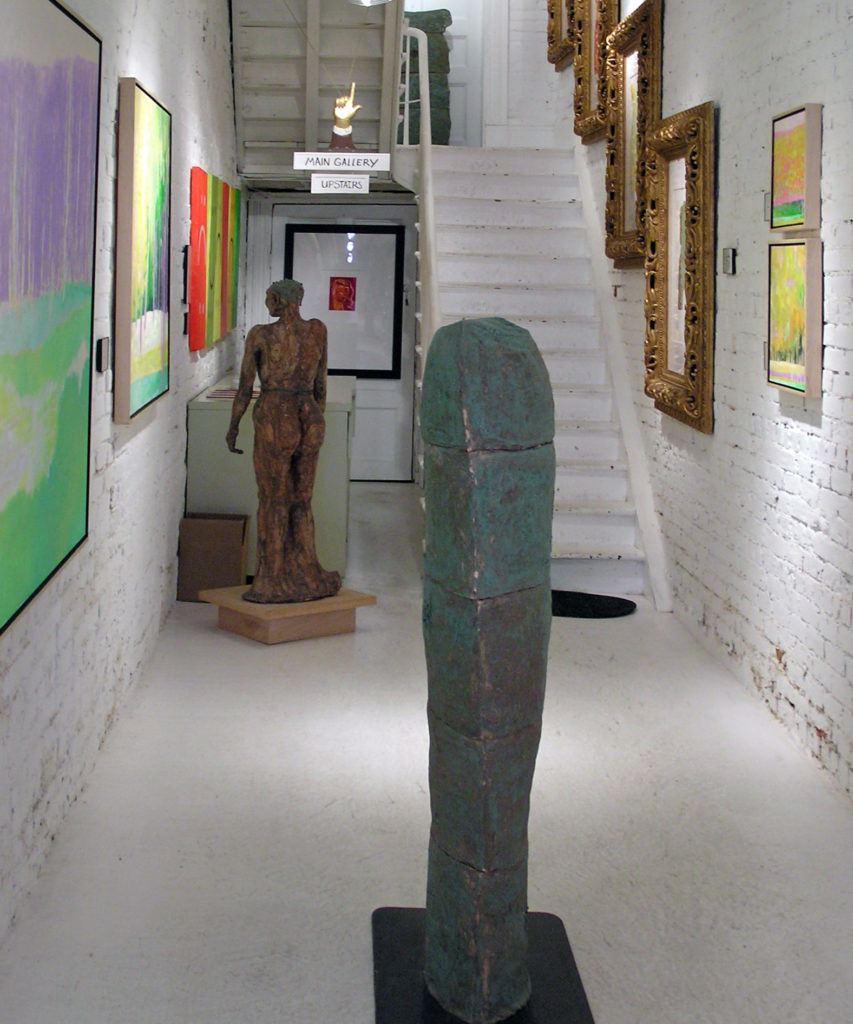 So, how to experience the real New Orleans? Well, you probably have to spend a year or two there to really get to know the city. It’s a complex place. But if you don’t have that kind of time, my first recommendation would be to find a place to stay in the French Quarter. It’s the historic center of the city and the city’s cultural heart. Most of what you’ll probably want to see and do you’ll find either in French Quarter itself or close by.
So, how to experience the real New Orleans? Well, you probably have to spend a year or two there to really get to know the city. It’s a complex place. But if you don’t have that kind of time, my first recommendation would be to find a place to stay in the French Quarter. It’s the historic center of the city and the city’s cultural heart. Most of what you’ll probably want to see and do you’ll find either in French Quarter itself or close by.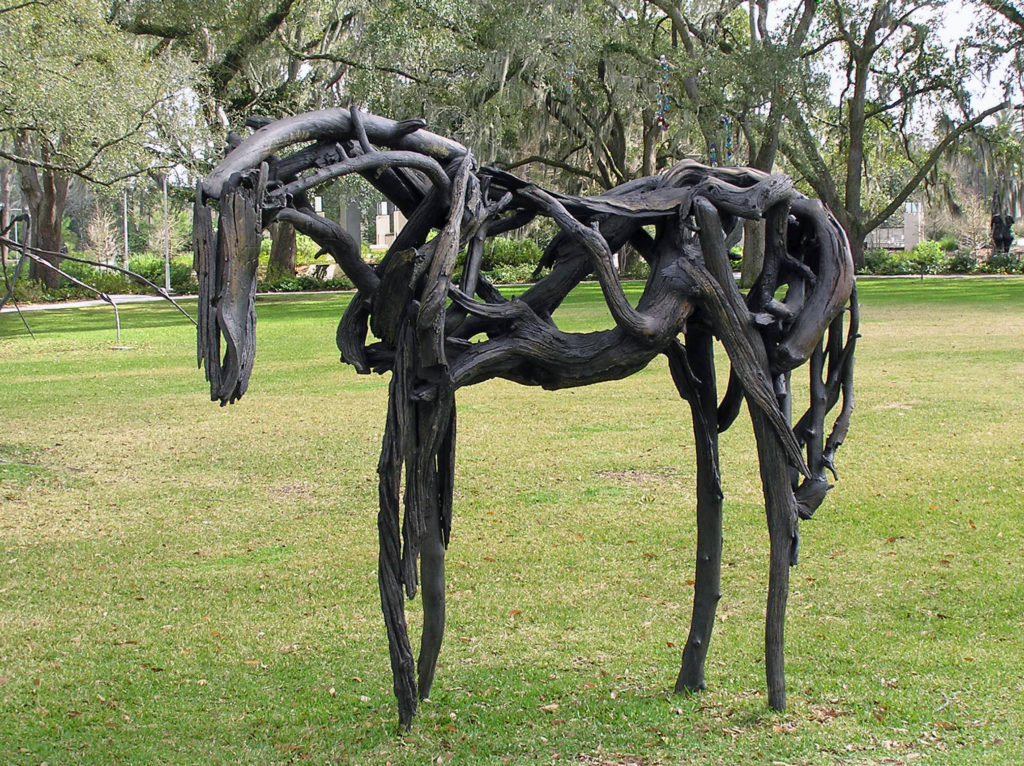 Since my wife and I are both art lovers, another thing that we always do in a new city is spend at least some time exploring the local arts scene. Sometimes that just entails visiting local museums and art galleries. But we also seek out local artists and art related events when we can. The
Since my wife and I are both art lovers, another thing that we always do in a new city is spend at least some time exploring the local arts scene. Sometimes that just entails visiting local museums and art galleries. But we also seek out local artists and art related events when we can. The 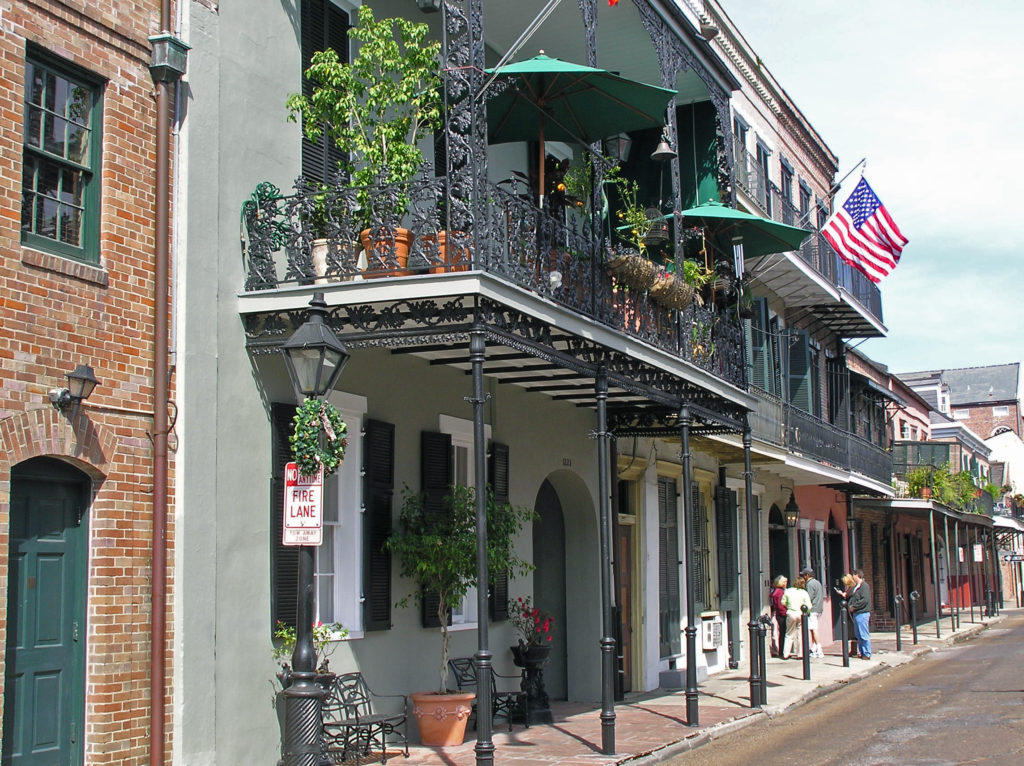
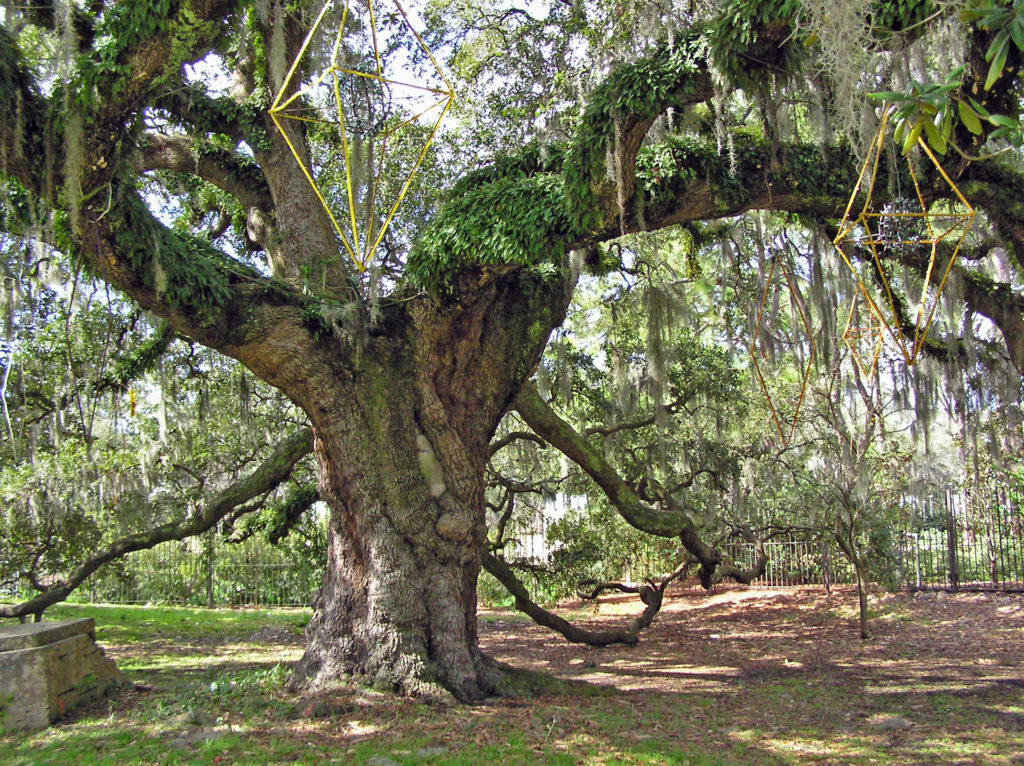
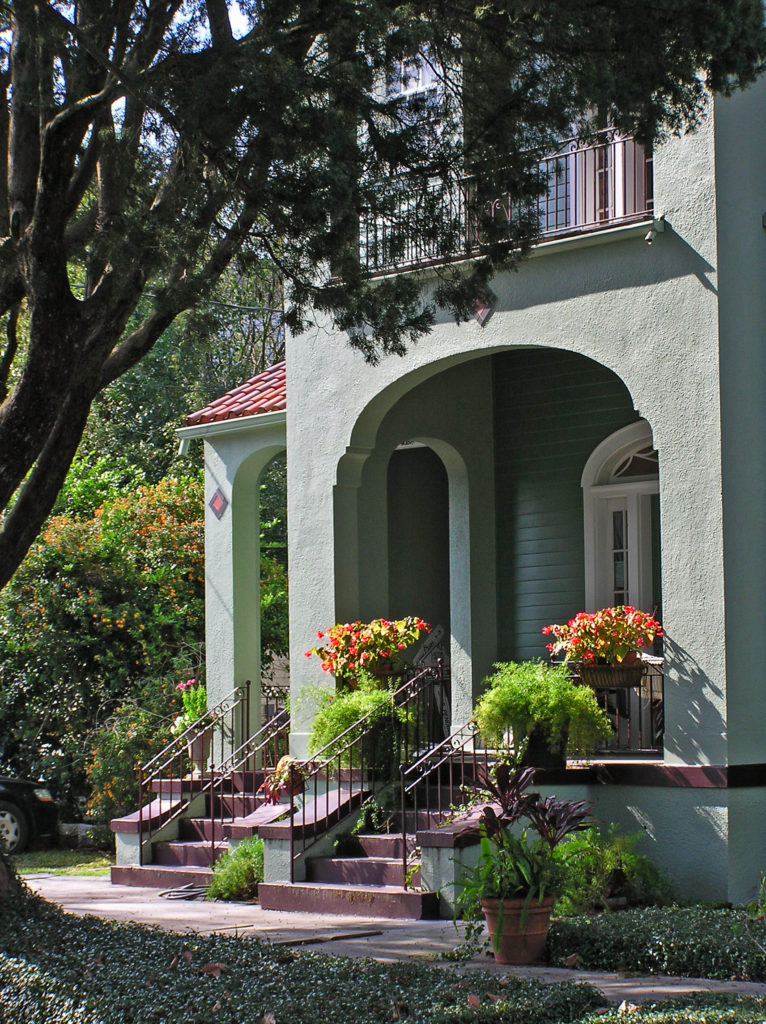
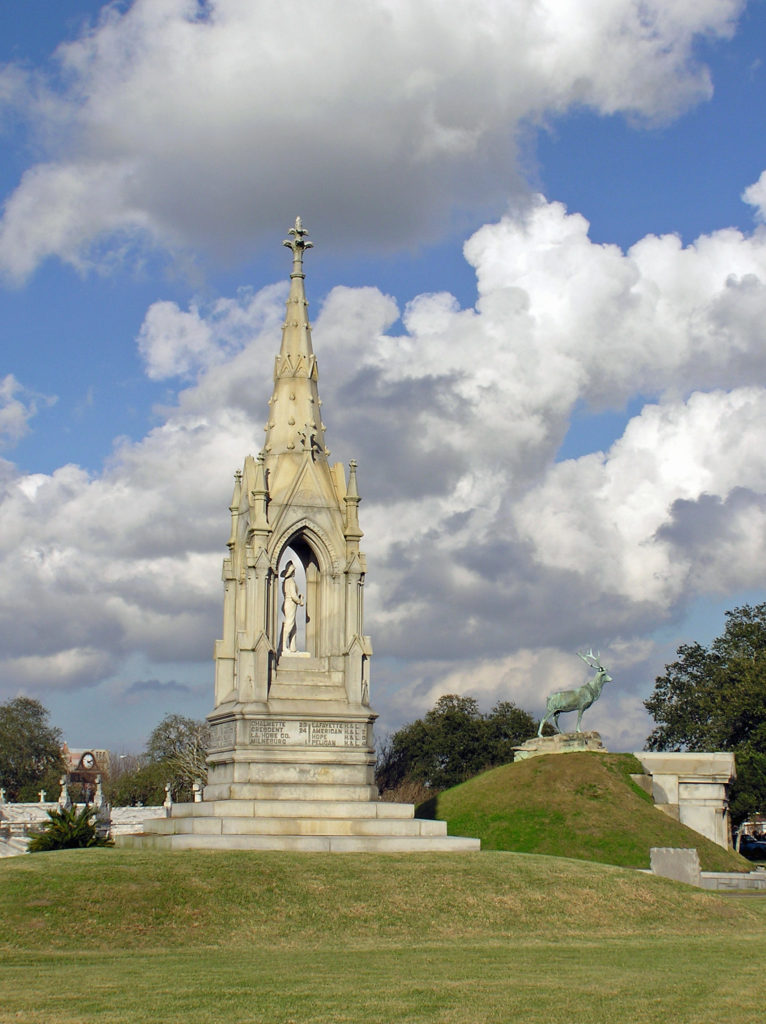 Touring one of the city’s many cemeteries turned out to be one of the more interesting things we did on our visit. Because the land New Orleans is built on was originally a swamp, and much of it is below sea level, the dead are not buried in the ground, but are interred in above ground crypts or tombs.
Touring one of the city’s many cemeteries turned out to be one of the more interesting things we did on our visit. Because the land New Orleans is built on was originally a swamp, and much of it is below sea level, the dead are not buried in the ground, but are interred in above ground crypts or tombs.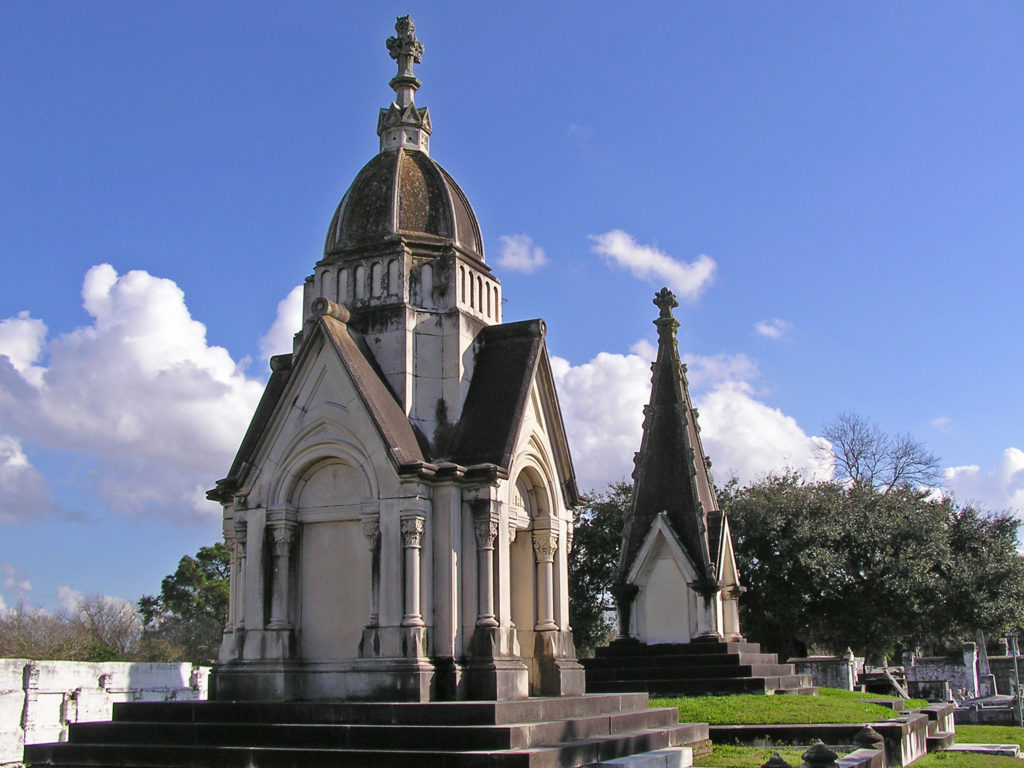 When we were there, we were warned that some of the cemeteries were dangerous places to visit and should be avoided. That may have changed, but check before you venture into any of the city’s cemeteries. There are organized cemetery tours that you can take, but we preferred to go on our own. One of the cemeteries that was said to be safe, and the one we visited, was St. Patrick Cemetery No. 1, on Canal Street near the end of the streetcar line.
When we were there, we were warned that some of the cemeteries were dangerous places to visit and should be avoided. That may have changed, but check before you venture into any of the city’s cemeteries. There are organized cemetery tours that you can take, but we preferred to go on our own. One of the cemeteries that was said to be safe, and the one we visited, was St. Patrick Cemetery No. 1, on Canal Street near the end of the streetcar line.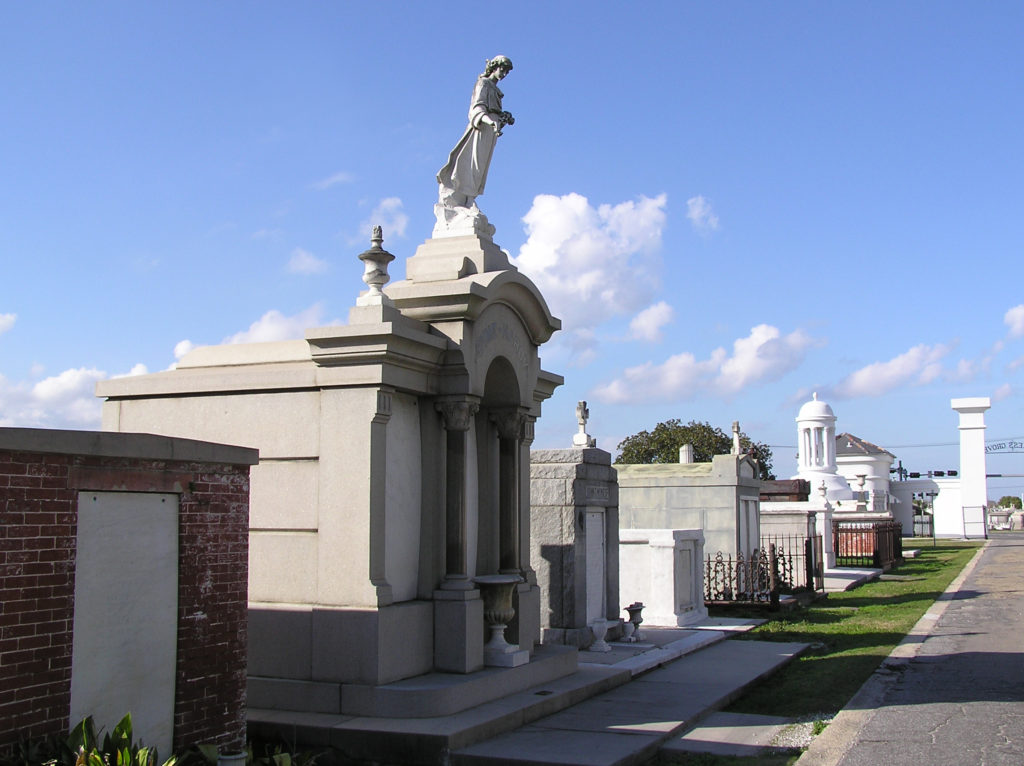 Many of the tombs there are large, elaborate, and impressive, holding the remains of many generations of the same family. The larger and more ornate ones are generally well kept up, but many of the others have not been maintained and are crumbling. Many are just ruins, empty and abandoned. One has to wonder what became of the bodies.
Many of the tombs there are large, elaborate, and impressive, holding the remains of many generations of the same family. The larger and more ornate ones are generally well kept up, but many of the others have not been maintained and are crumbling. Many are just ruins, empty and abandoned. One has to wonder what became of the bodies.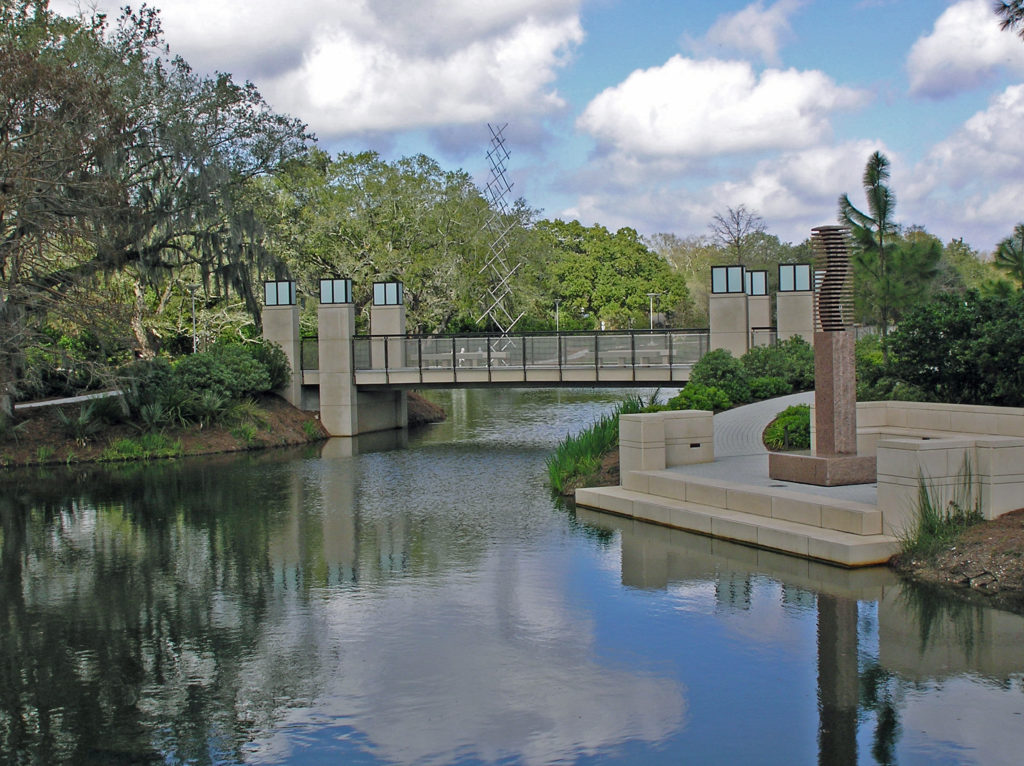
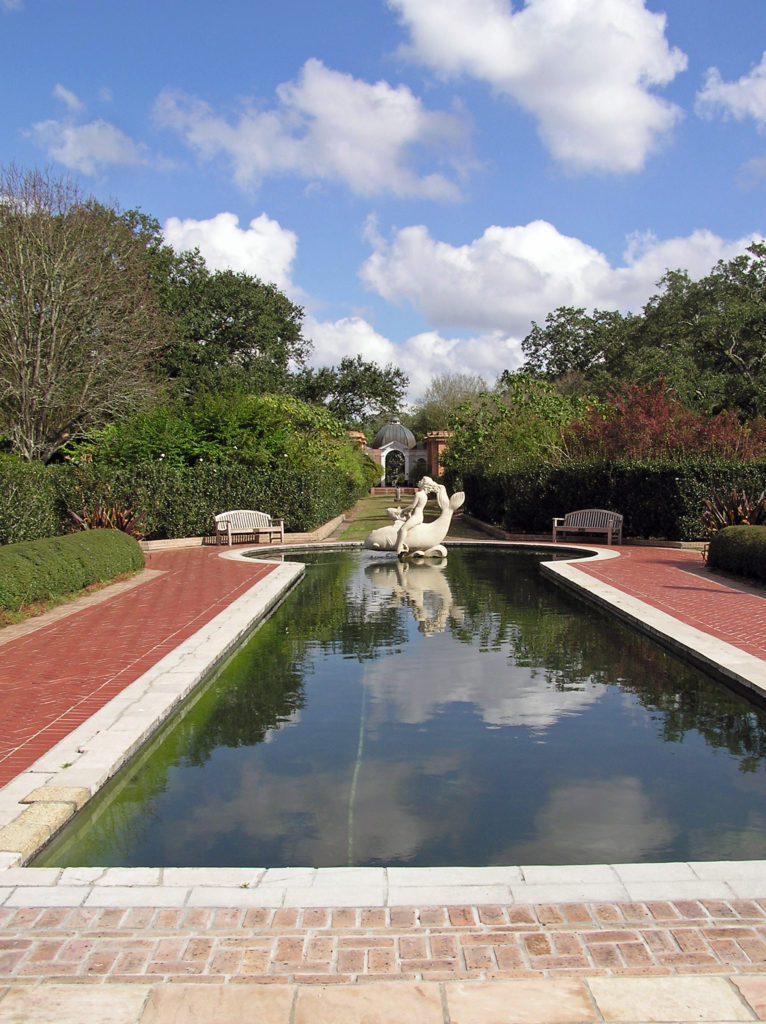
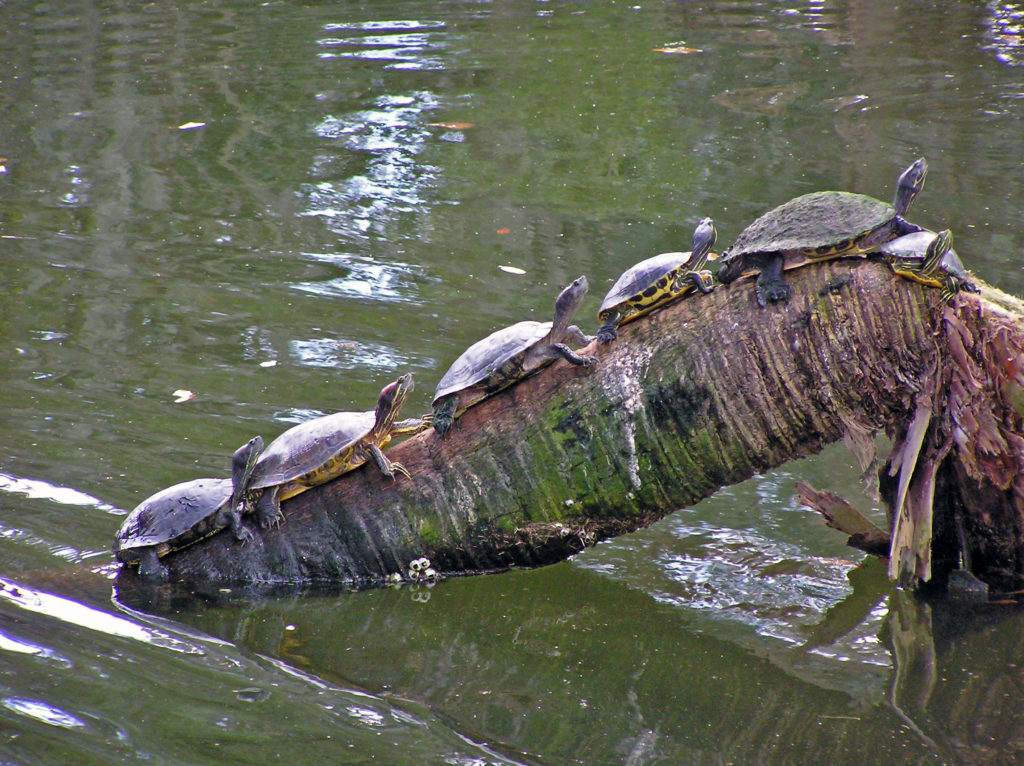
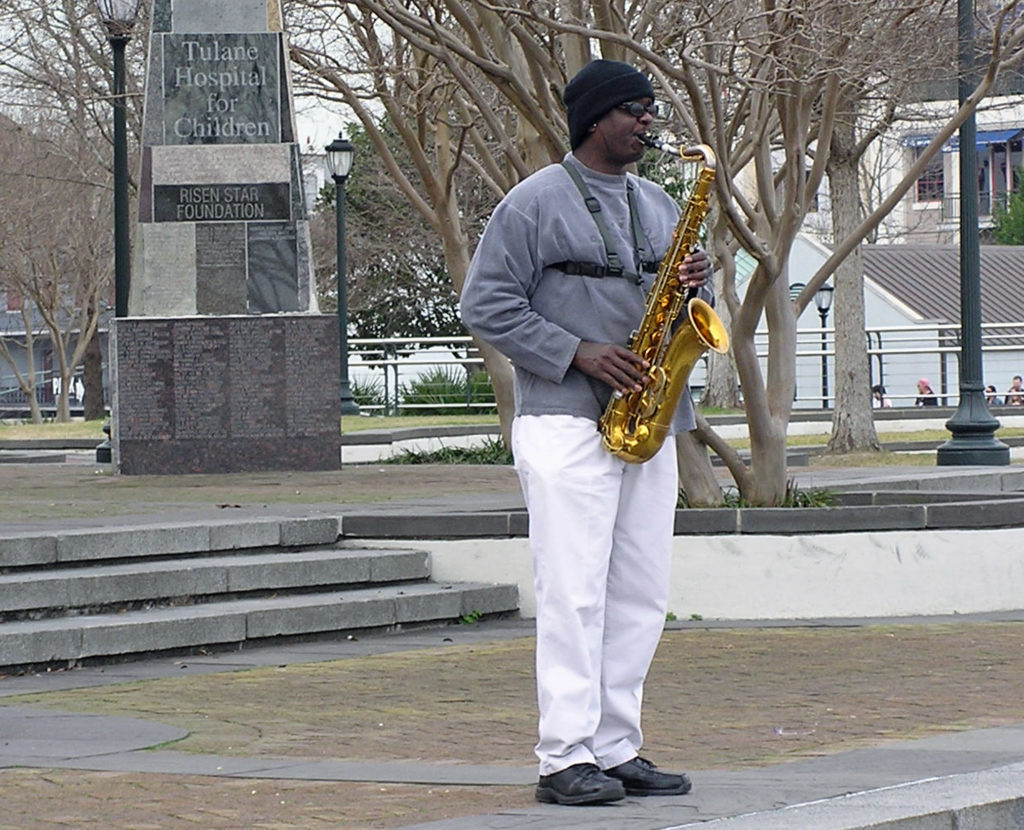
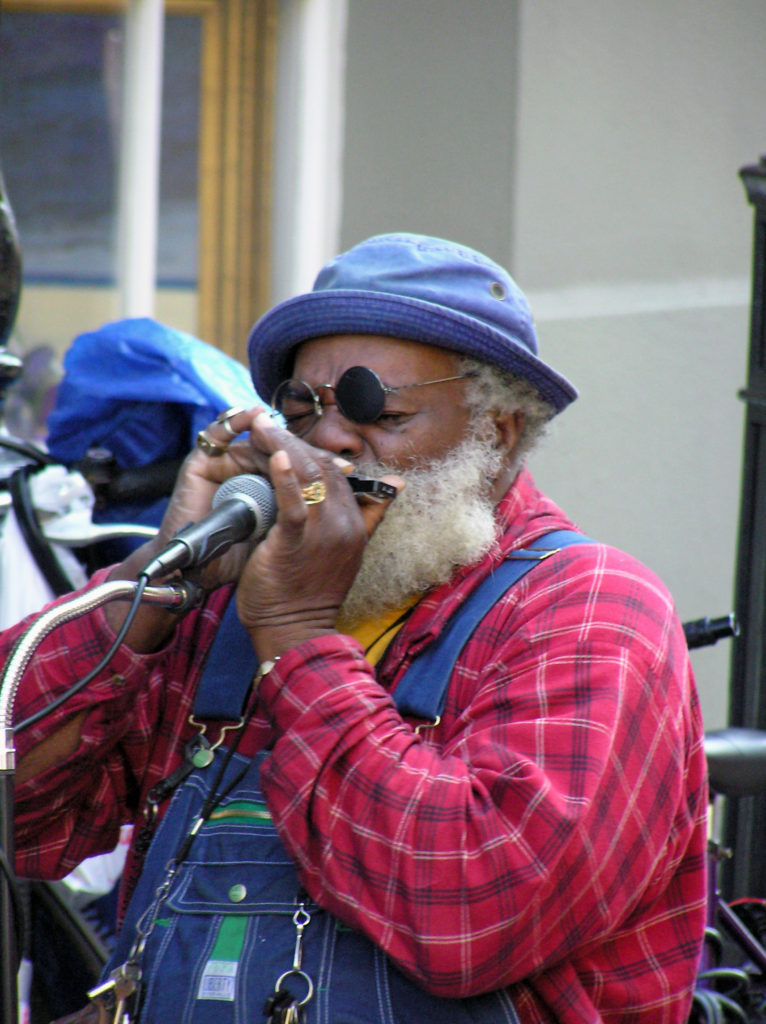 Music is an essential component of the spirit of the Big Easy. Whether it’s traditional Cajun fiddle tunes, blues, jazz, swamp rock, zydeco, country, or a fusion of some or all of those genres, music permeates the city. Street performers are a common sight in the French Quarter any time of the day or night. And there are probably hundreds of clubs throughout the city offering live performances late into the night, every night. Take in as much of the music as you can while you’re there because it’s such a vital component of the city’s spirit.
Music is an essential component of the spirit of the Big Easy. Whether it’s traditional Cajun fiddle tunes, blues, jazz, swamp rock, zydeco, country, or a fusion of some or all of those genres, music permeates the city. Street performers are a common sight in the French Quarter any time of the day or night. And there are probably hundreds of clubs throughout the city offering live performances late into the night, every night. Take in as much of the music as you can while you’re there because it’s such a vital component of the city’s spirit.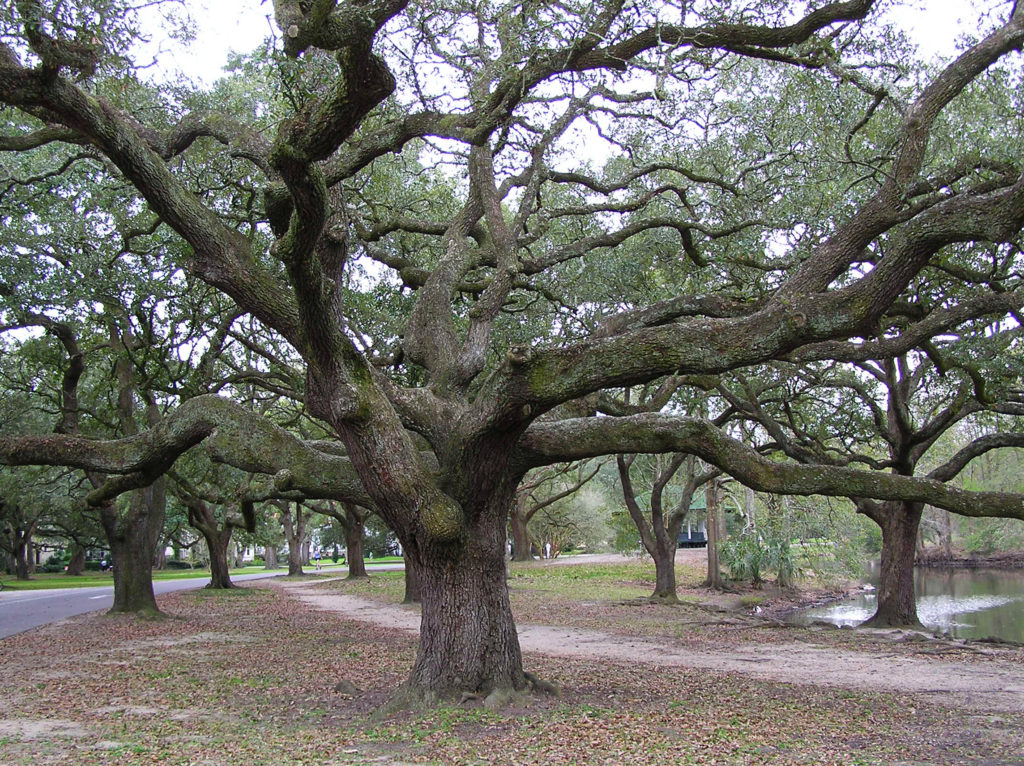
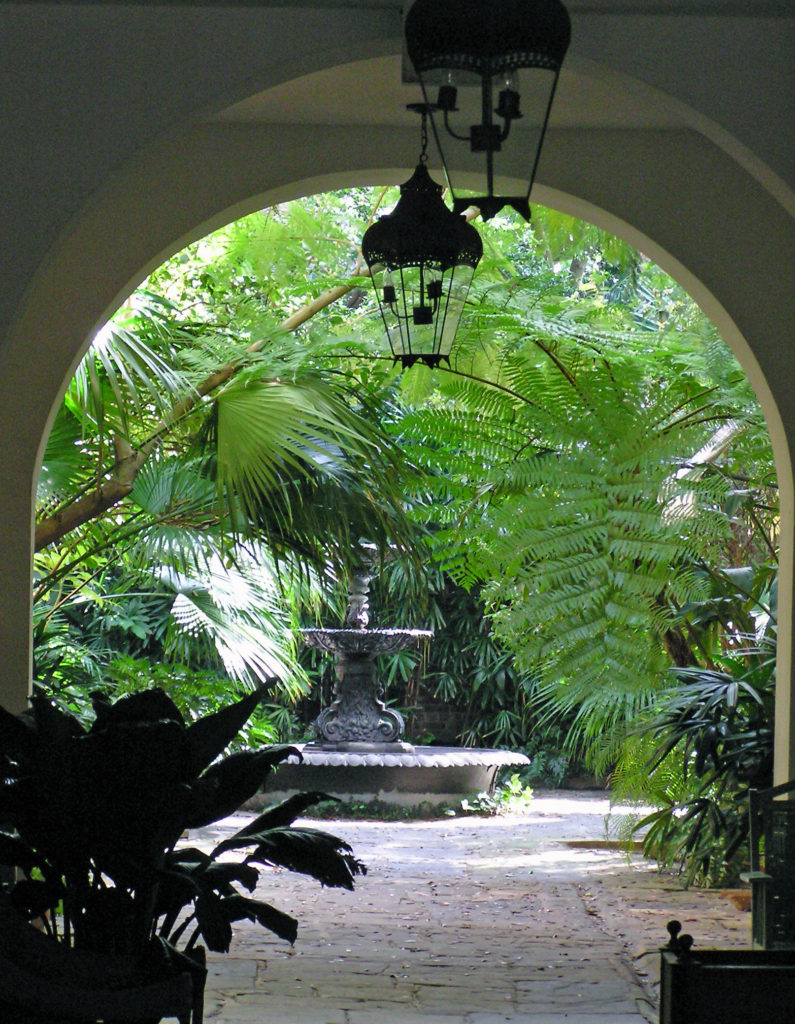
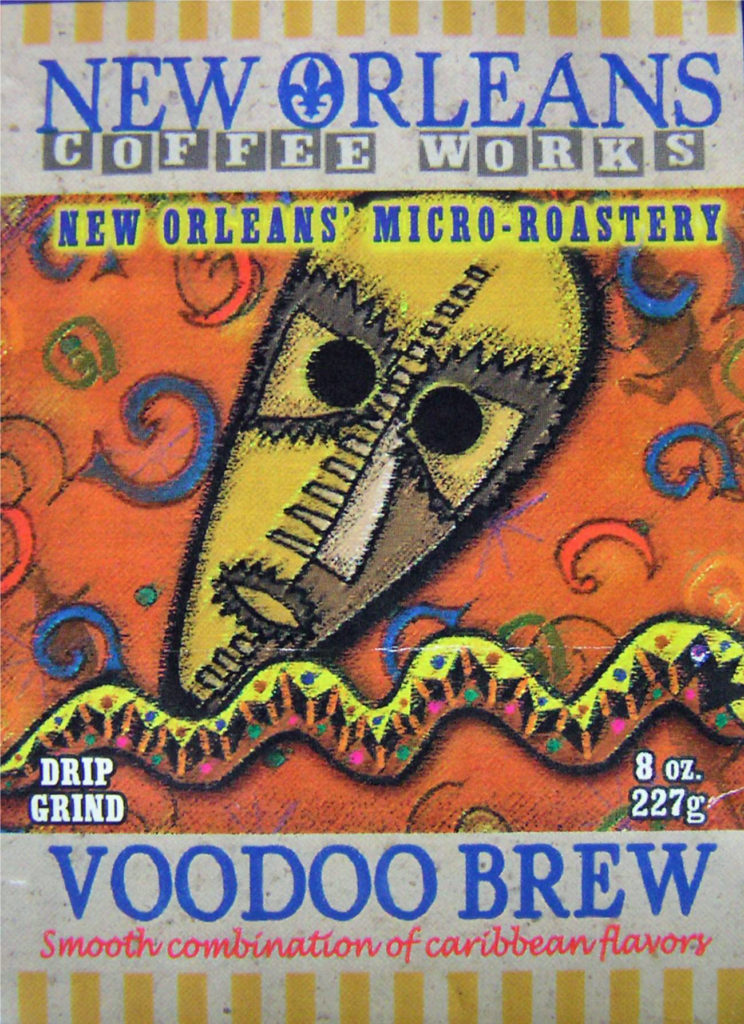
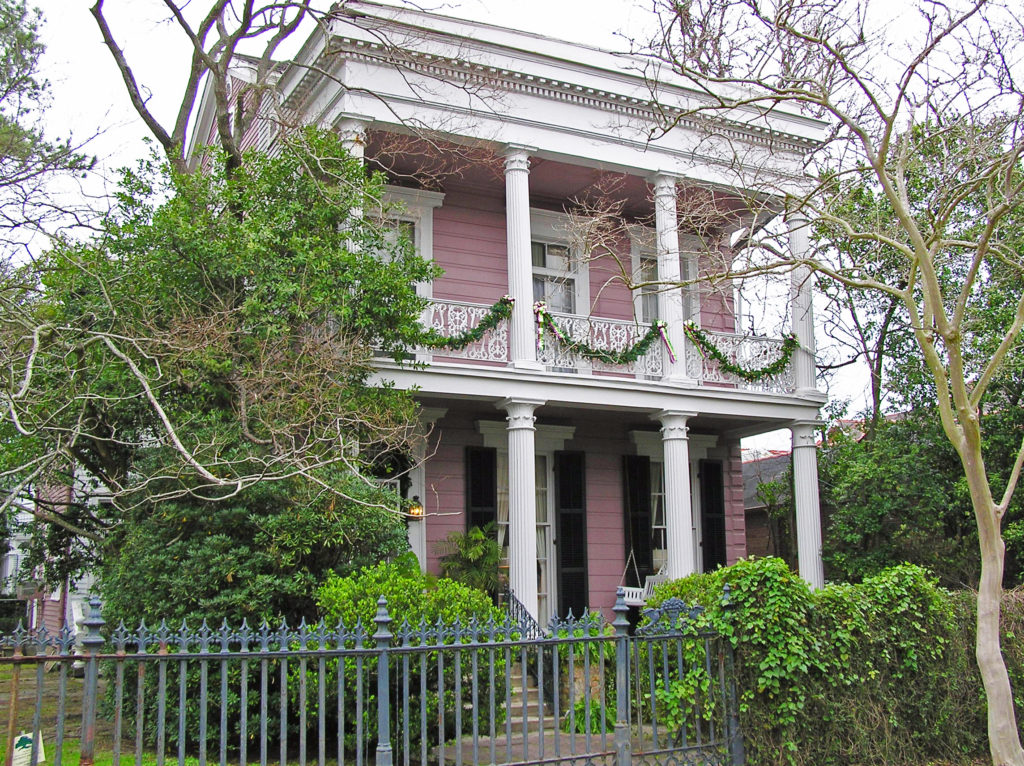
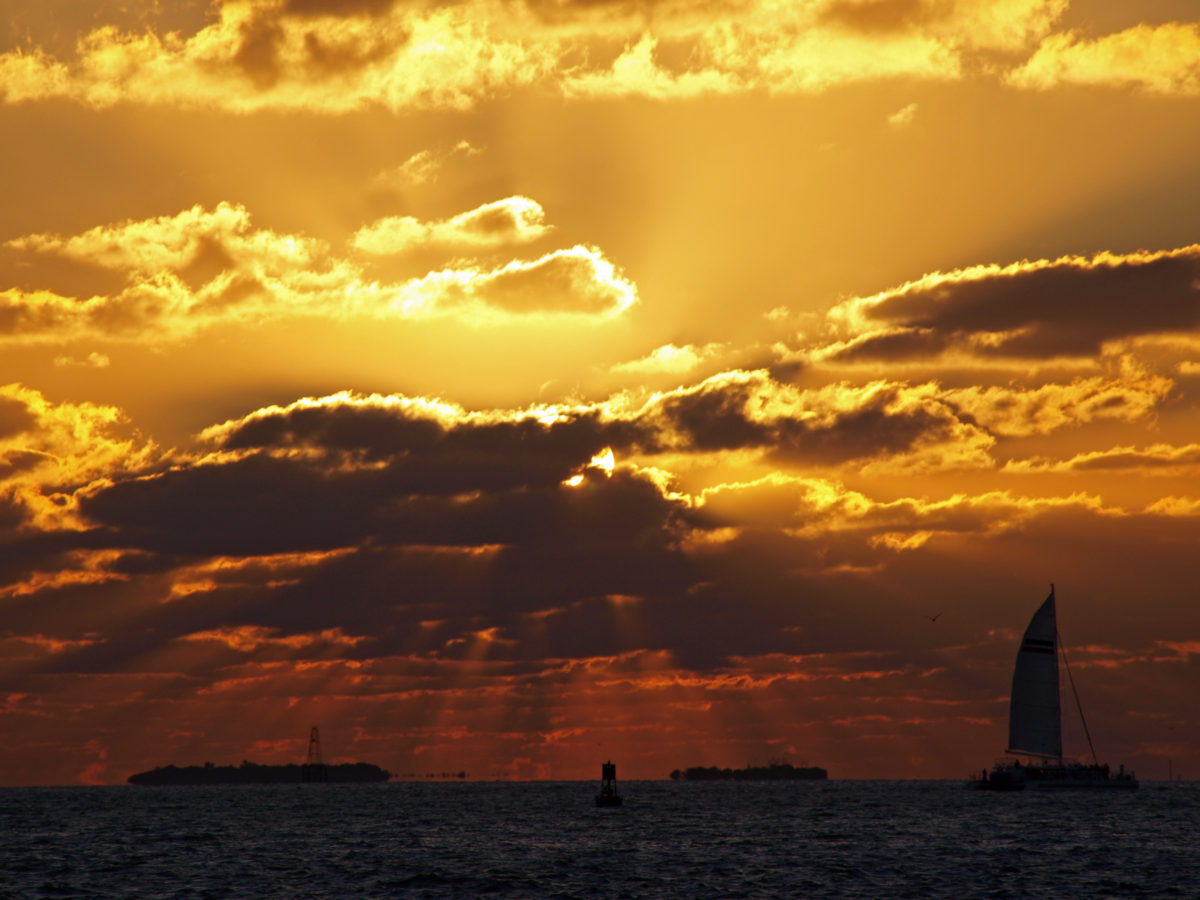
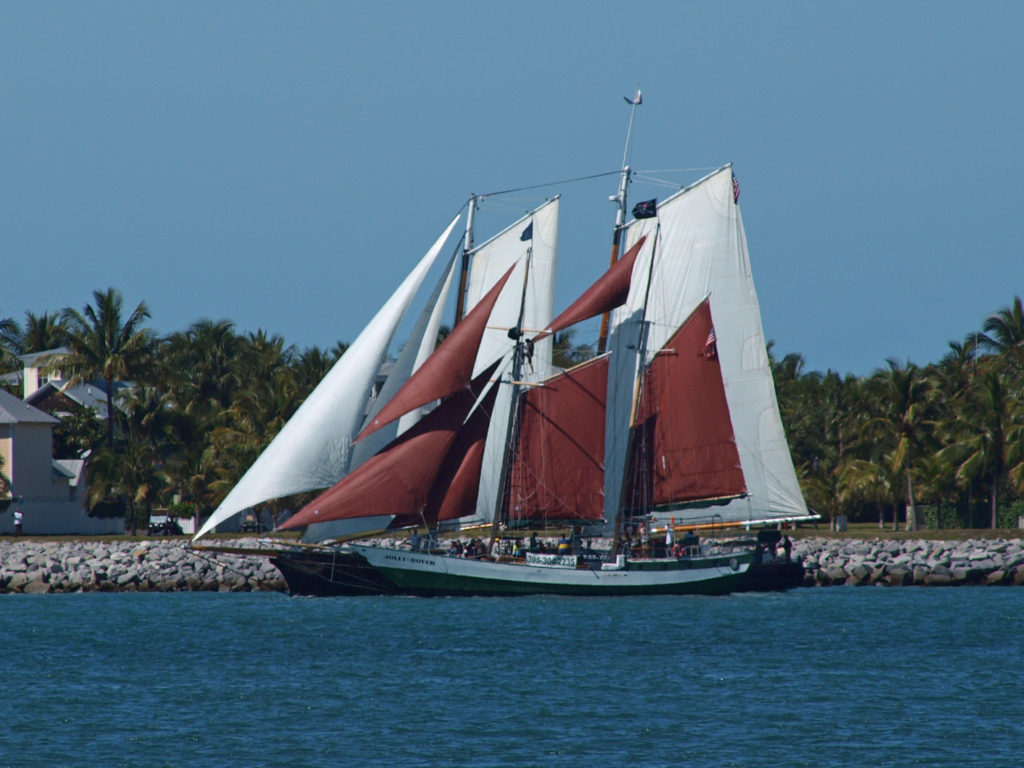 The following was originally posted on this site a couple of years ago. I checked all of the links, but things can change, so check the
The following was originally posted on this site a couple of years ago. I checked all of the links, but things can change, so check the 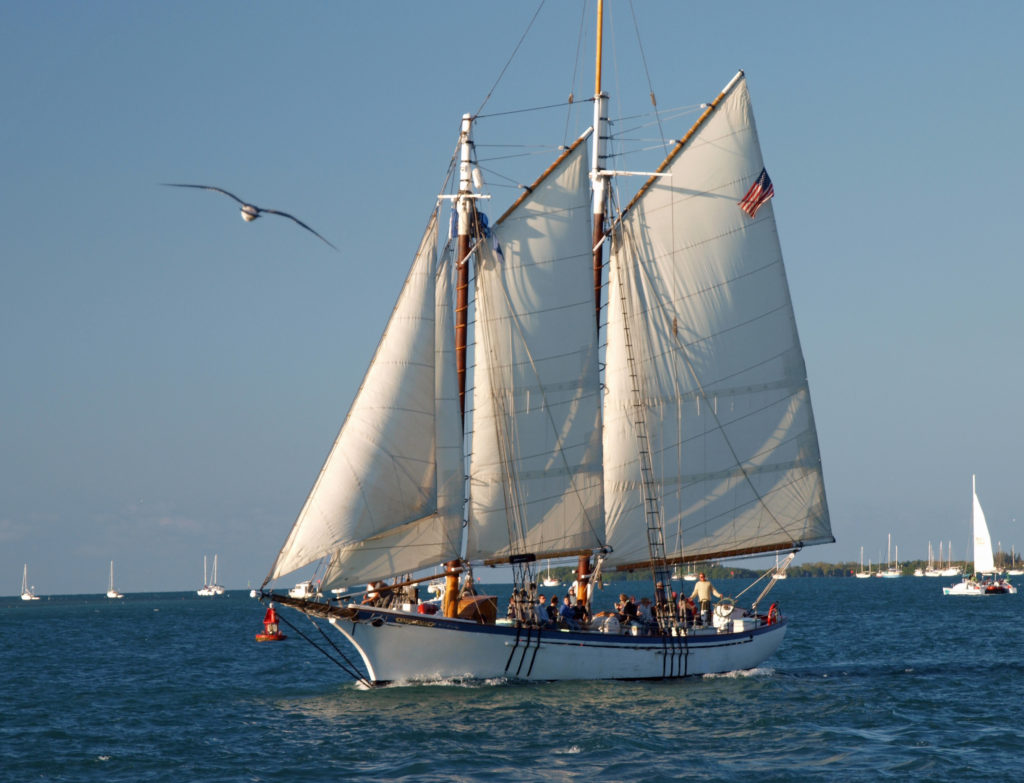
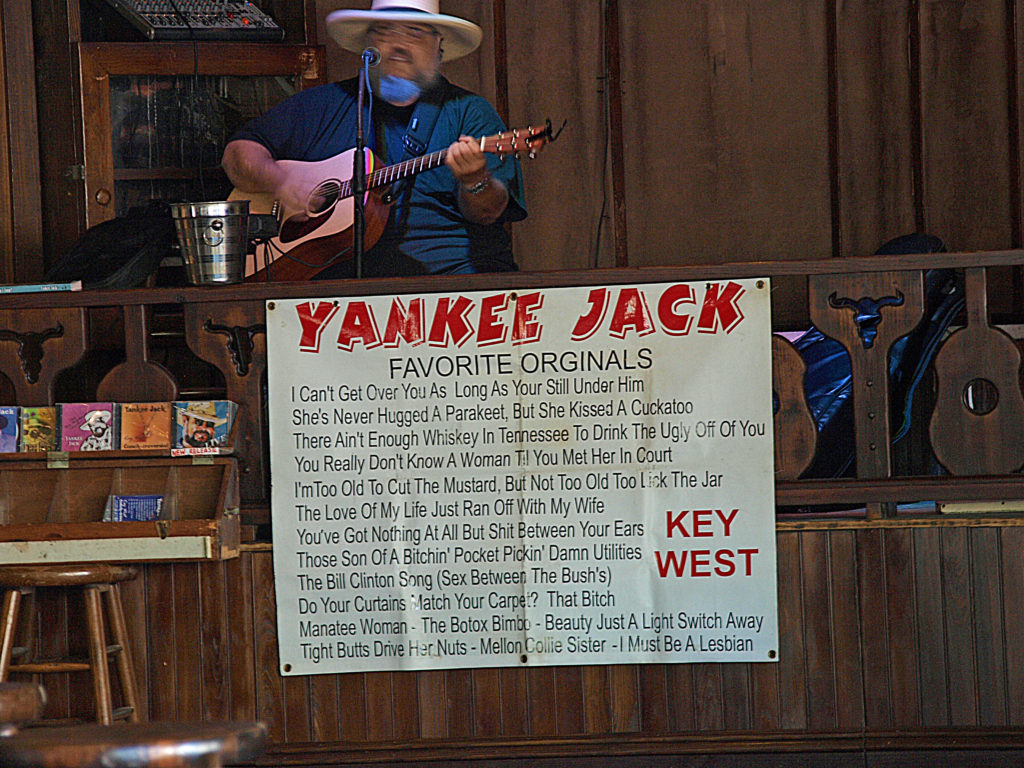
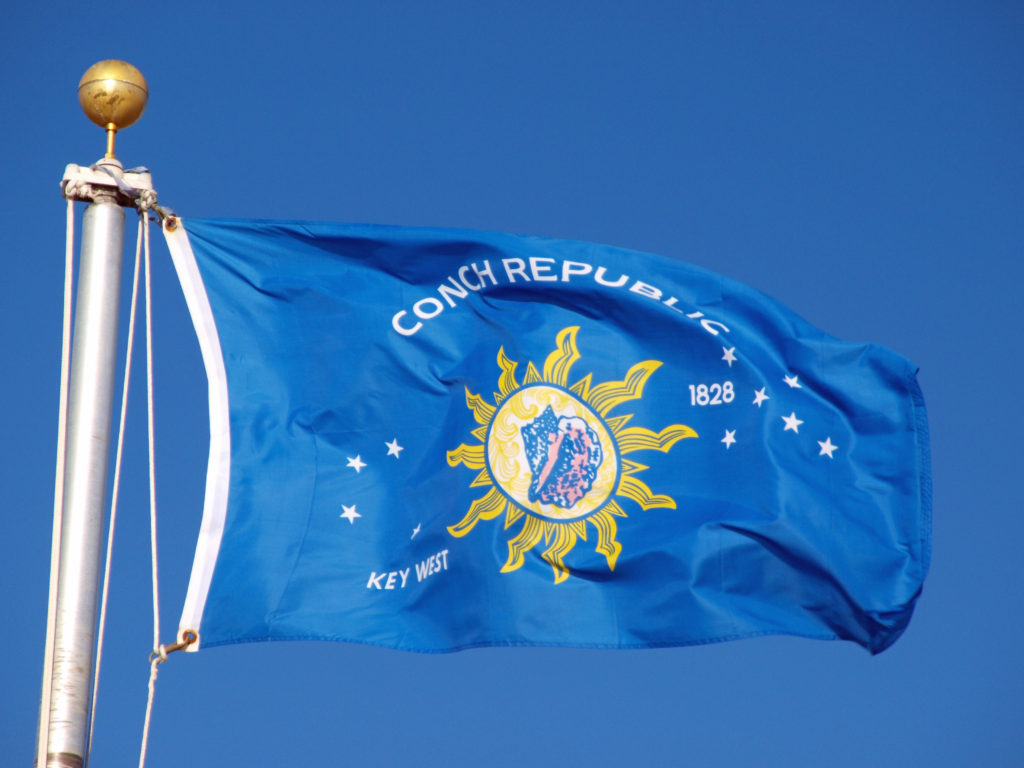
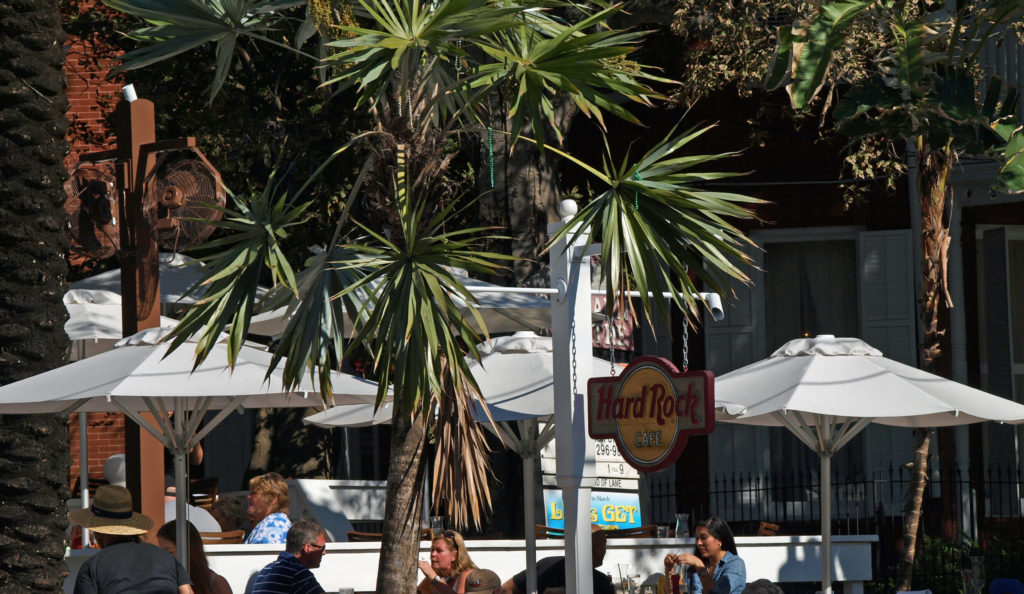
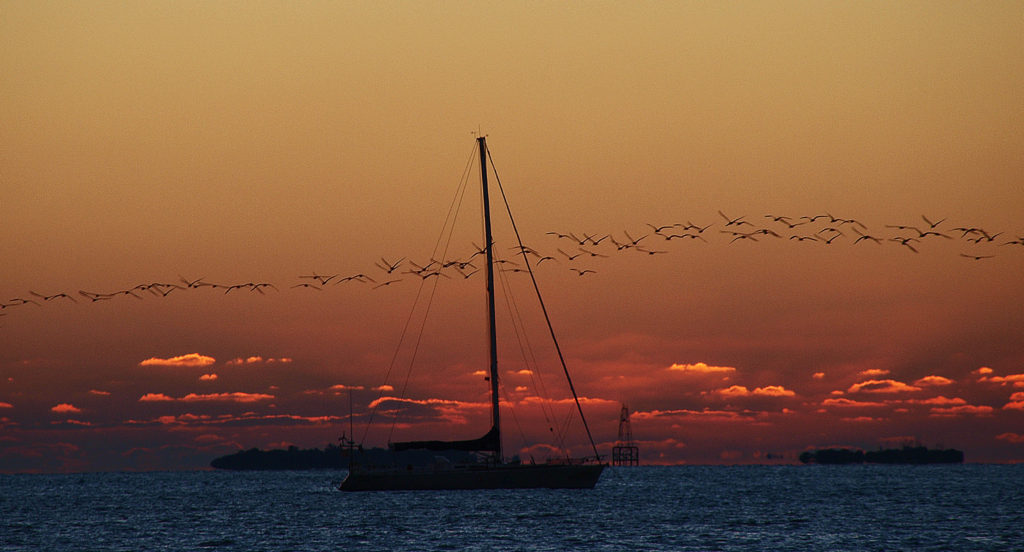
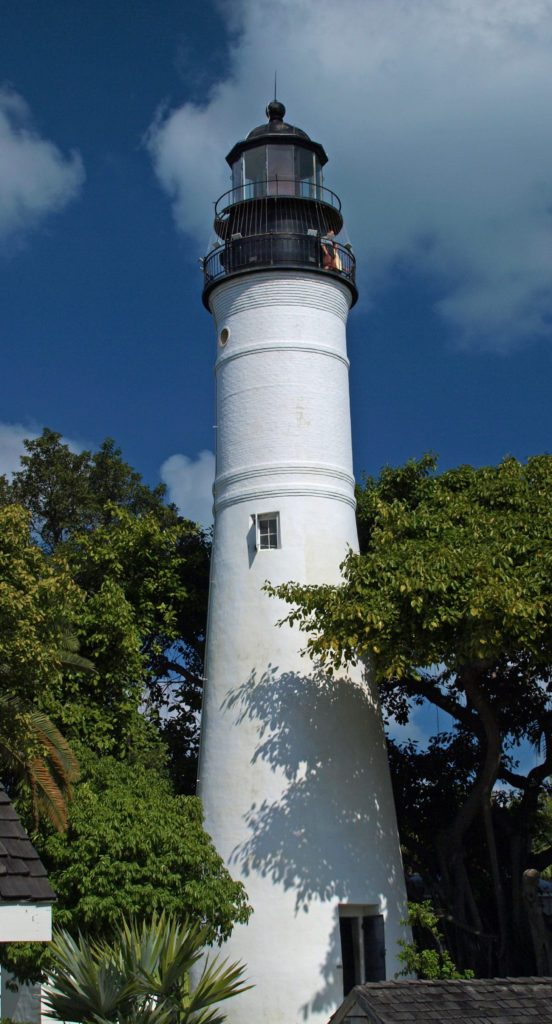
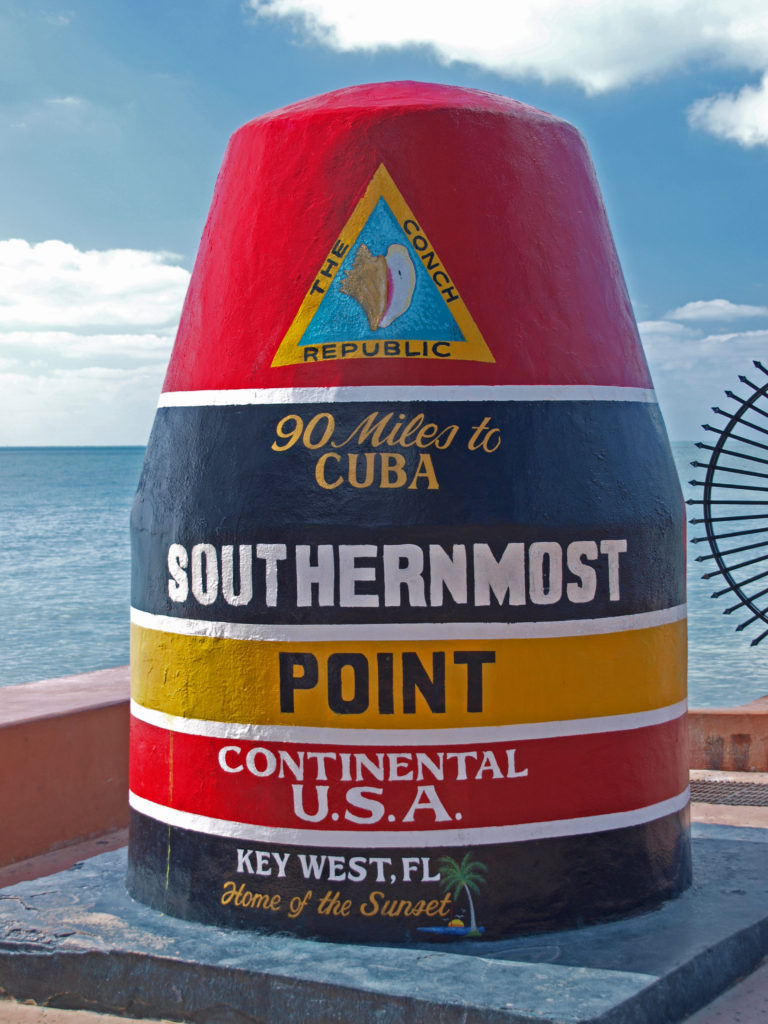
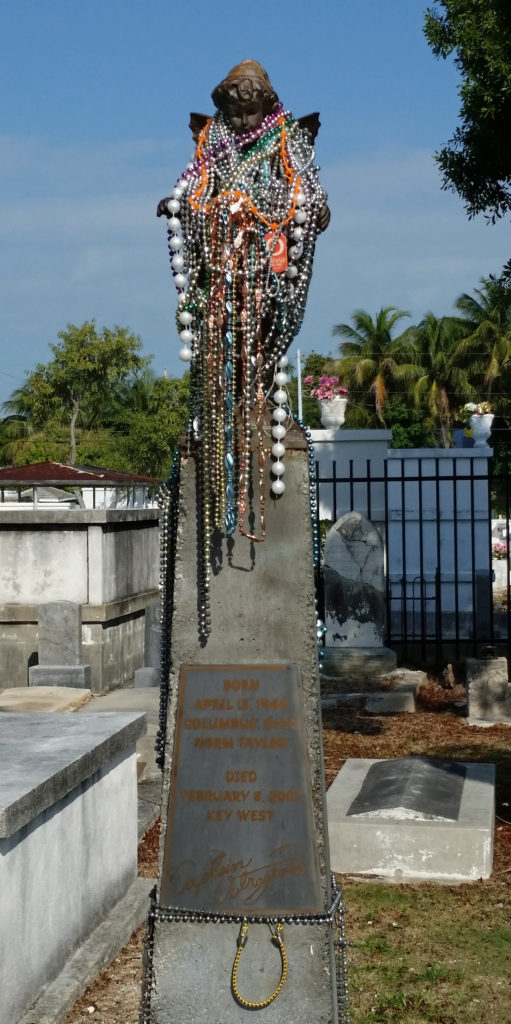 If you just want to hang out at the beach, Fort Zach Park has a nice swimming beach (with an adjacent bar). South Beach at the end of Duval Street also has a beach bar and grill. Higgs Beach is four or five blocks east and has a nice beach for sunbathing and swimming. And across the street, Astro City Playground is a fun place for kids to play. To the east of Higgs Beach are C.B. Harvey Memorial Rest Beach (no bar or other amenities) and Smathers Beach. Dog Beach, a couple of blocks east of South Beach, is literally for the dogs – a dog friendly, off leash park.
If you just want to hang out at the beach, Fort Zach Park has a nice swimming beach (with an adjacent bar). South Beach at the end of Duval Street also has a beach bar and grill. Higgs Beach is four or five blocks east and has a nice beach for sunbathing and swimming. And across the street, Astro City Playground is a fun place for kids to play. To the east of Higgs Beach are C.B. Harvey Memorial Rest Beach (no bar or other amenities) and Smathers Beach. Dog Beach, a couple of blocks east of South Beach, is literally for the dogs – a dog friendly, off leash park.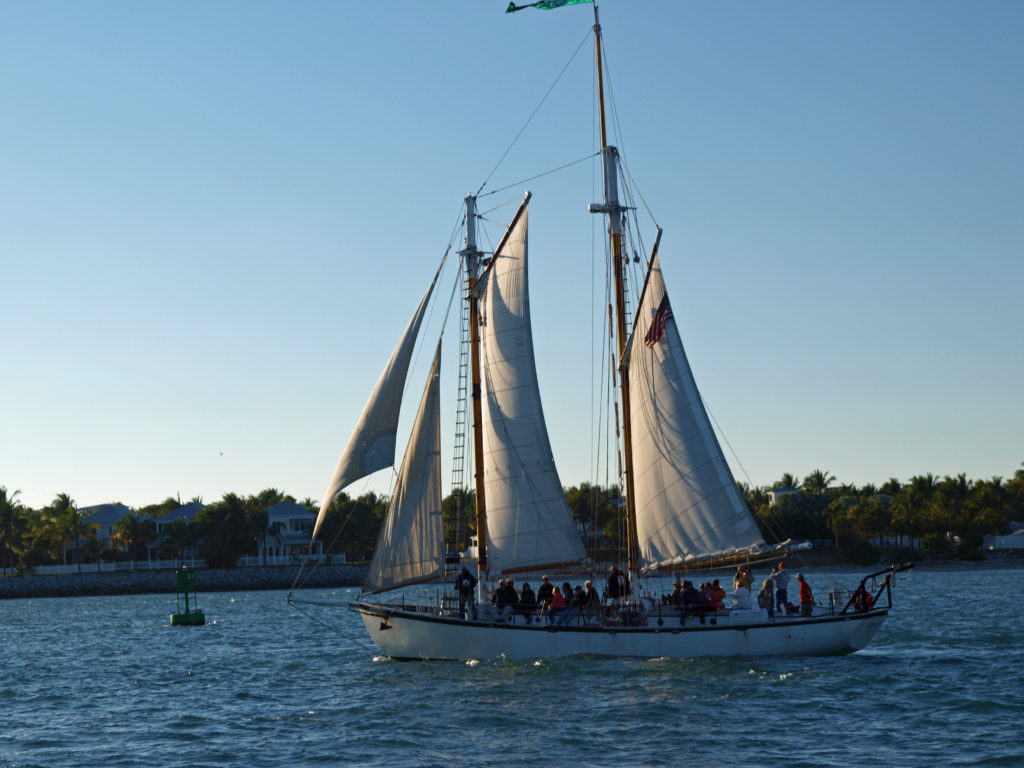
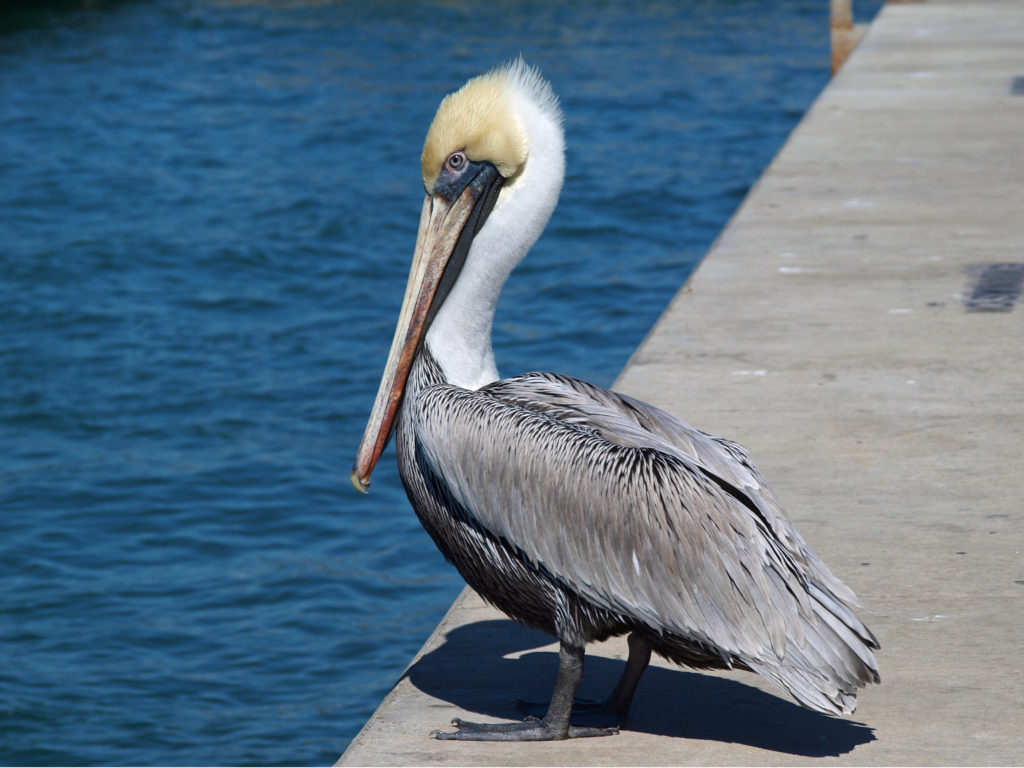
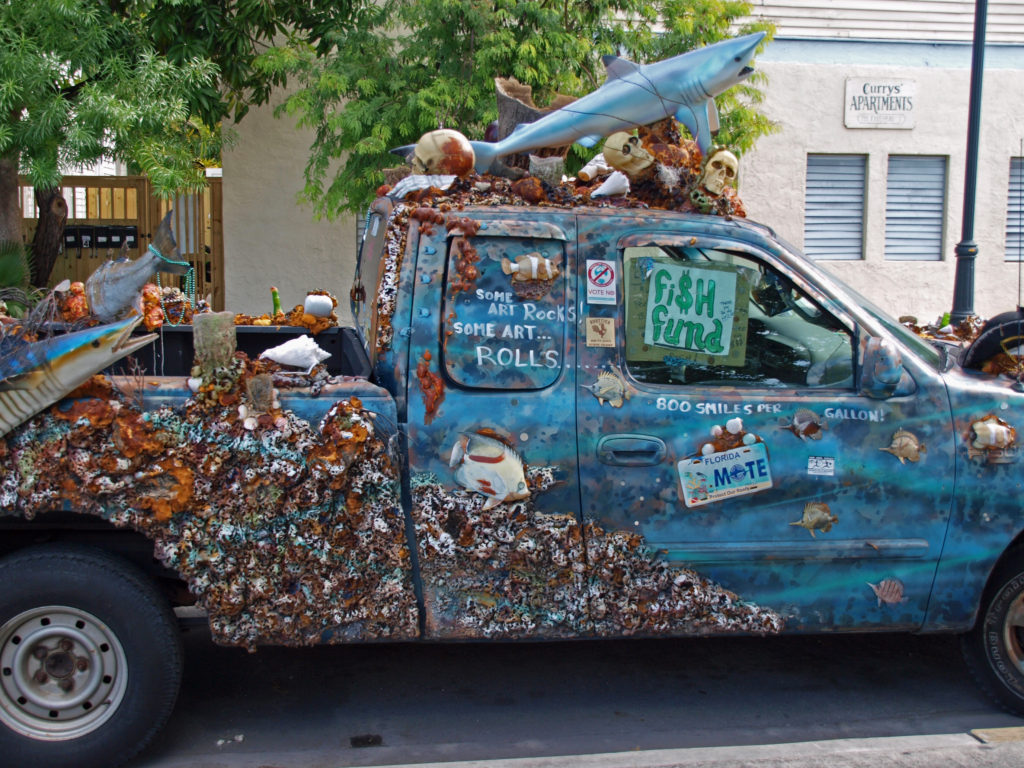
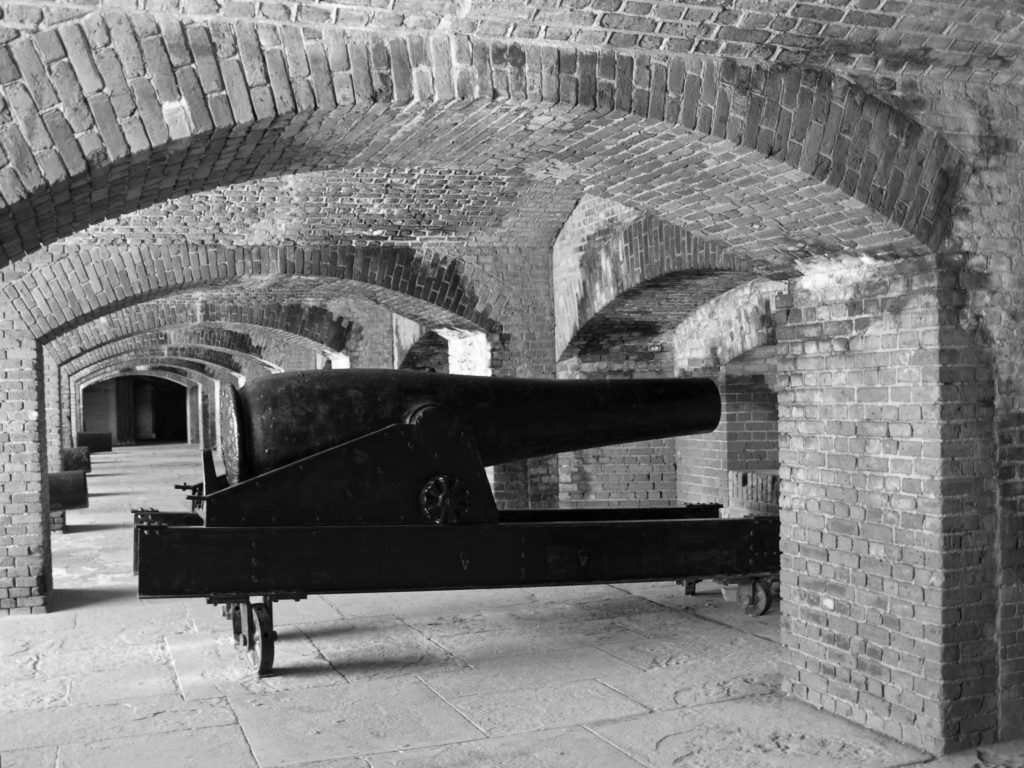
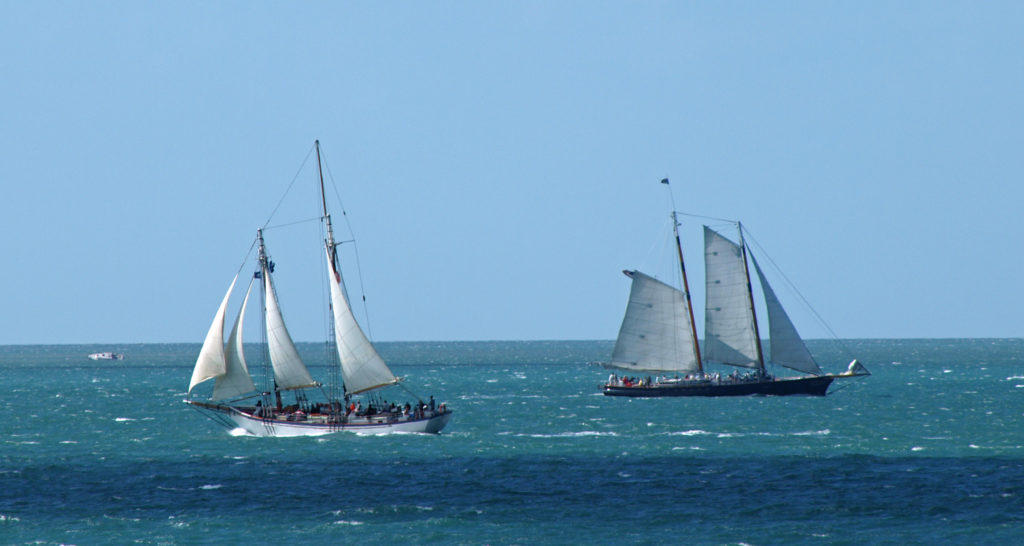
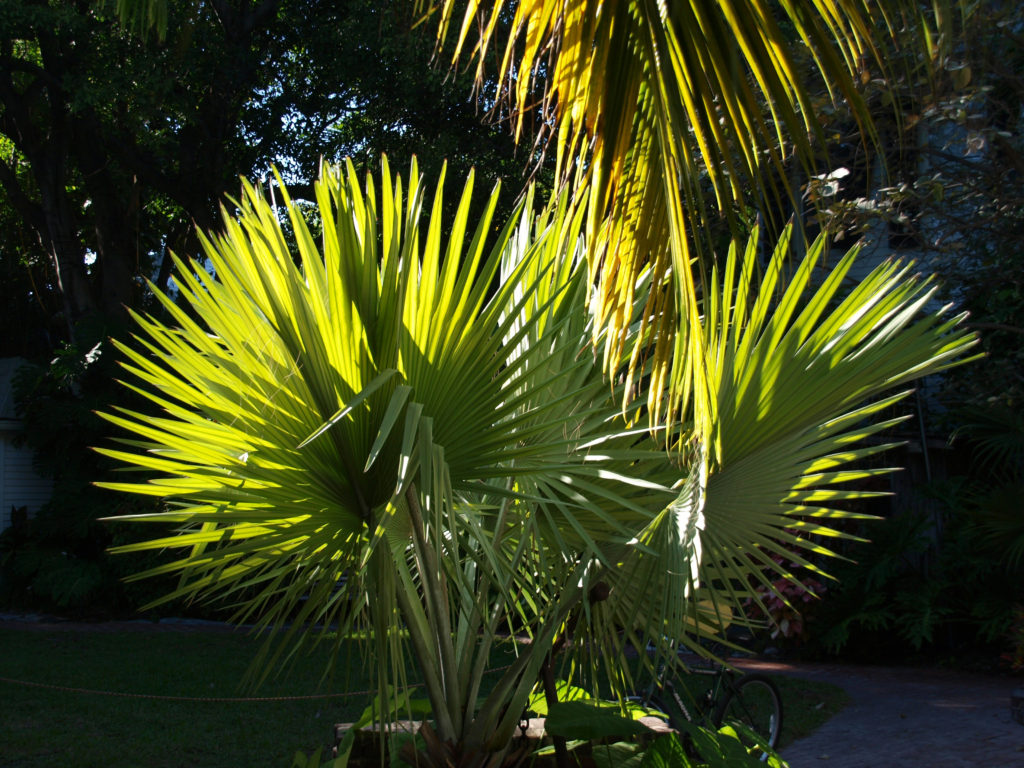
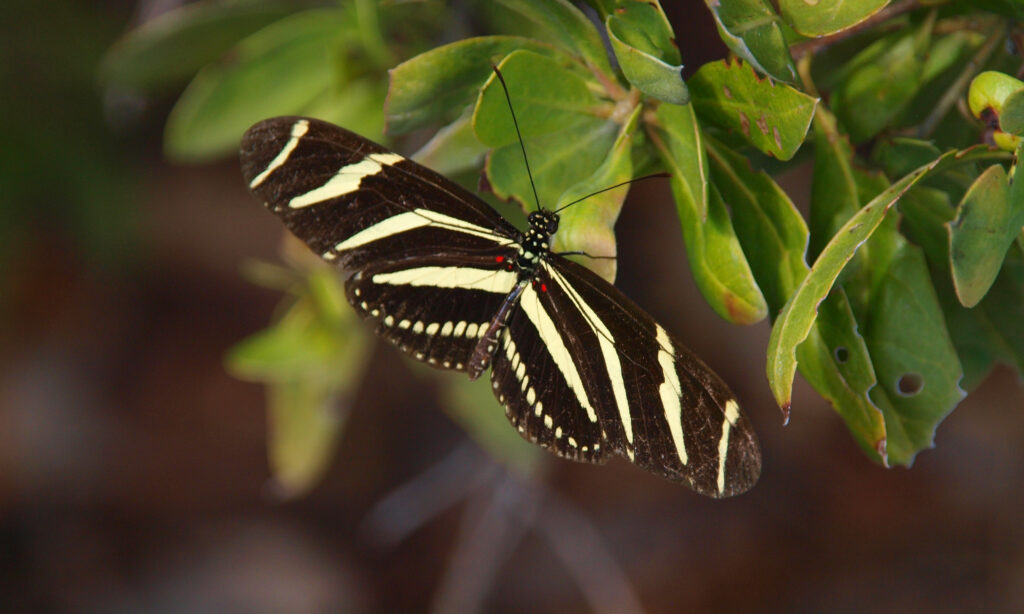
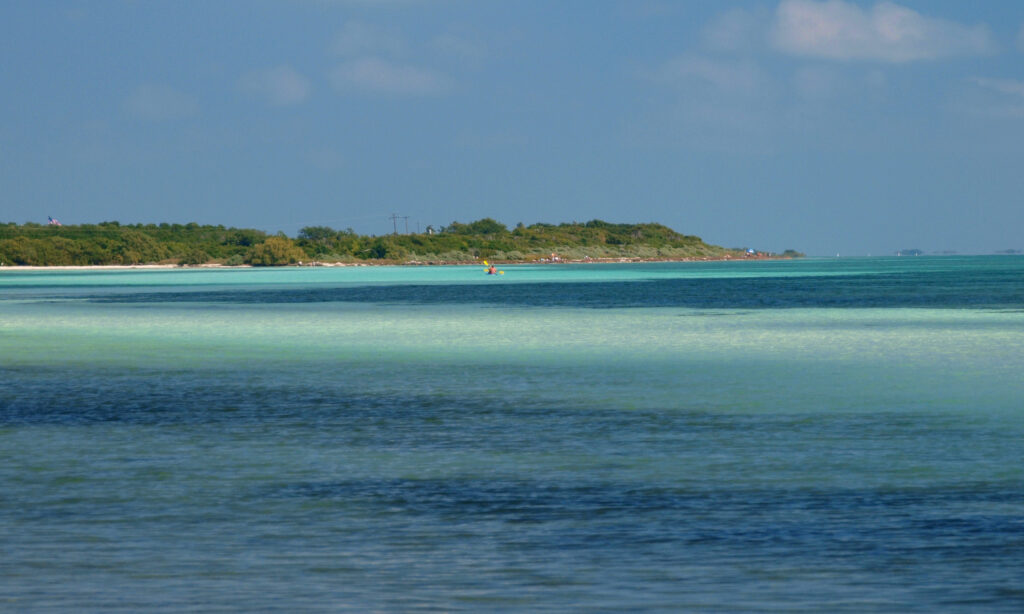
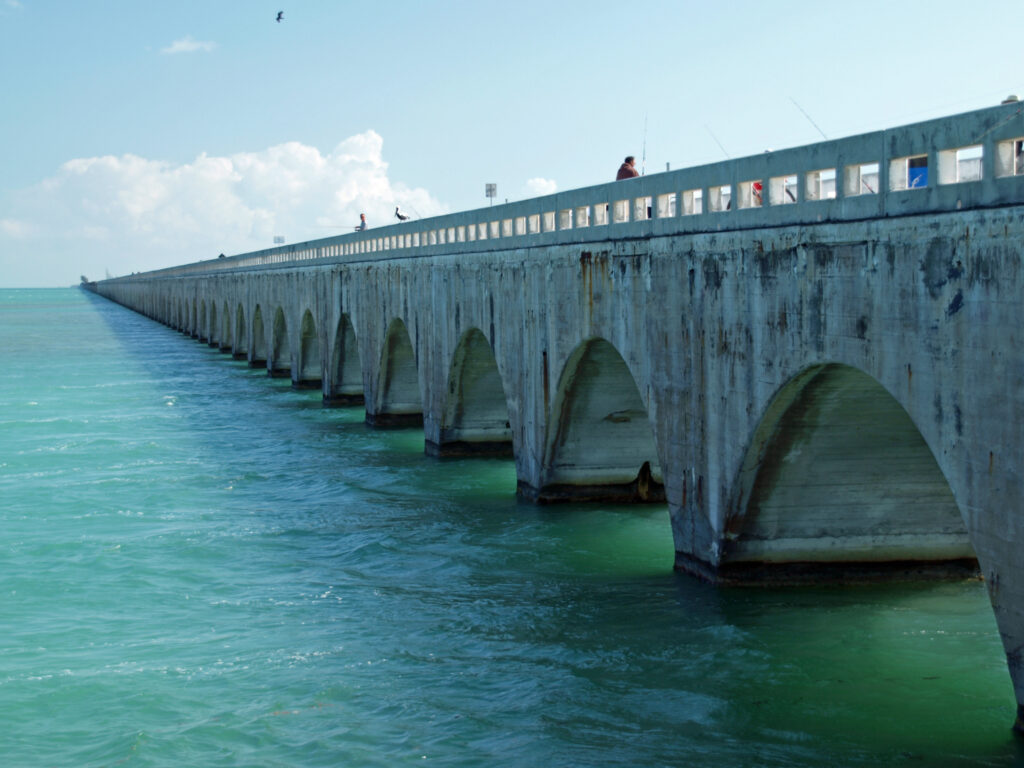
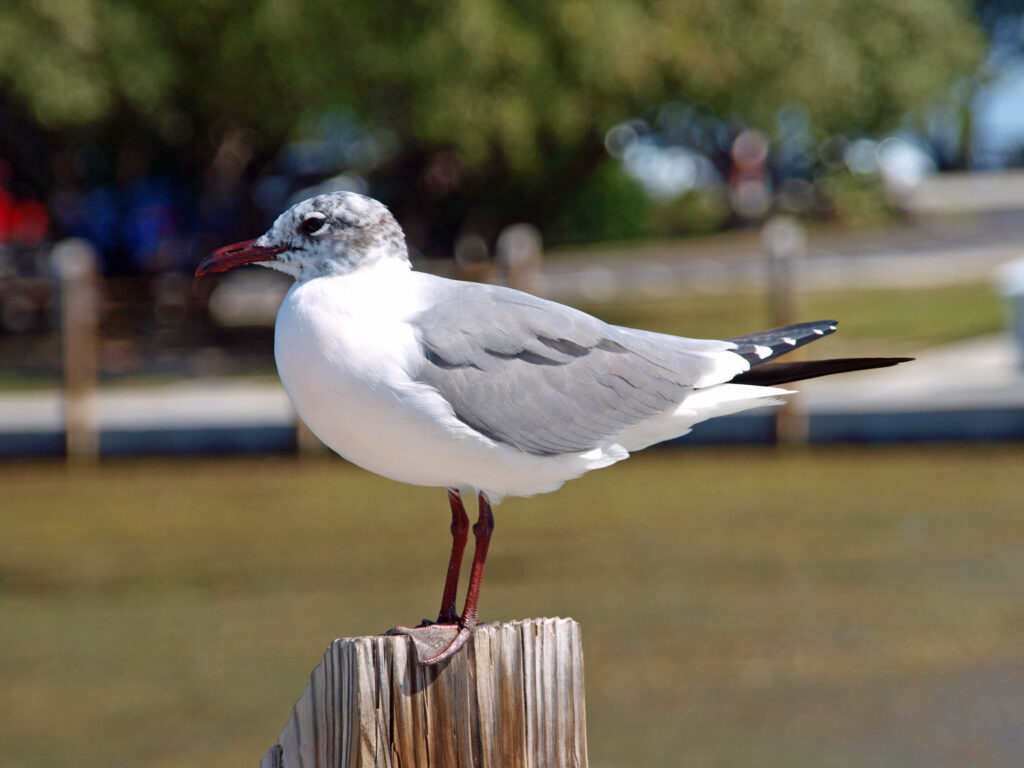
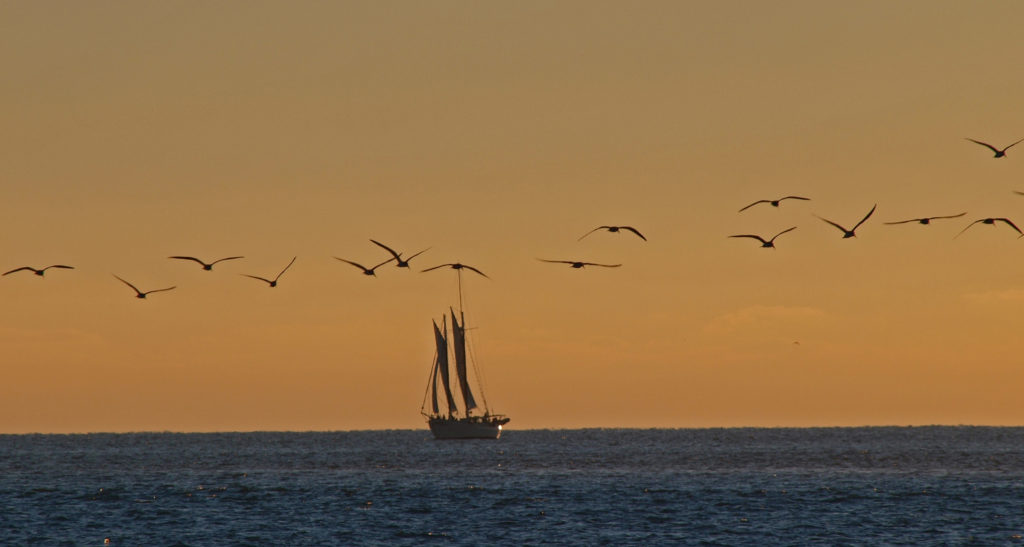
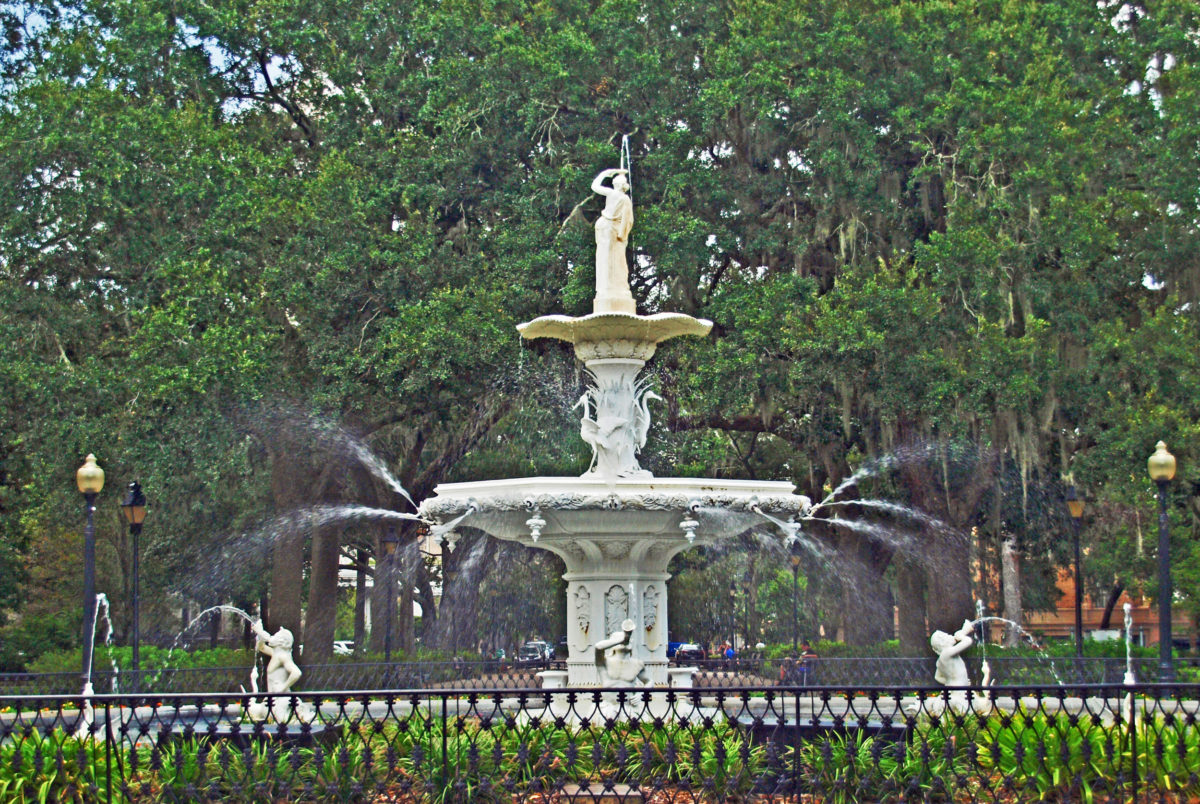
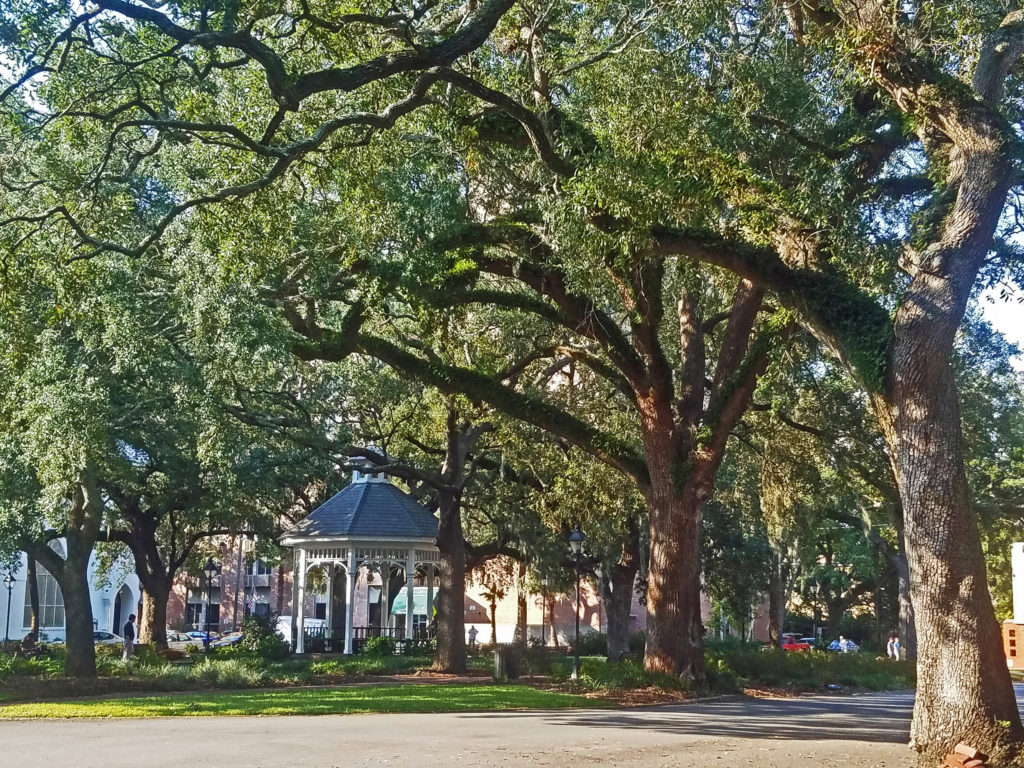
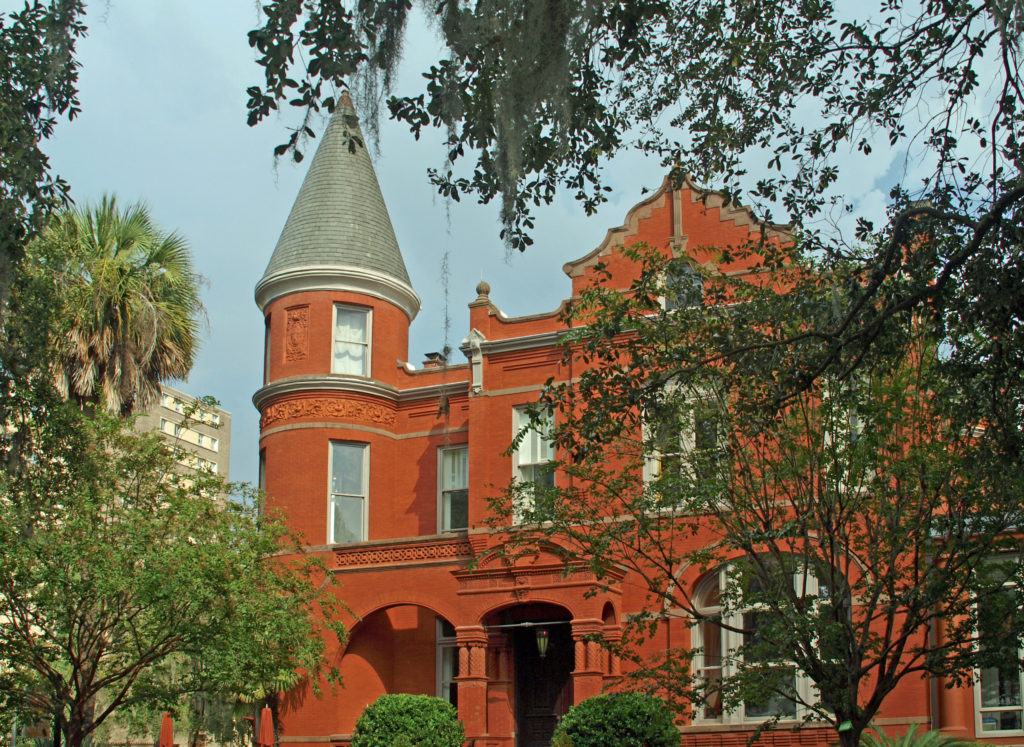
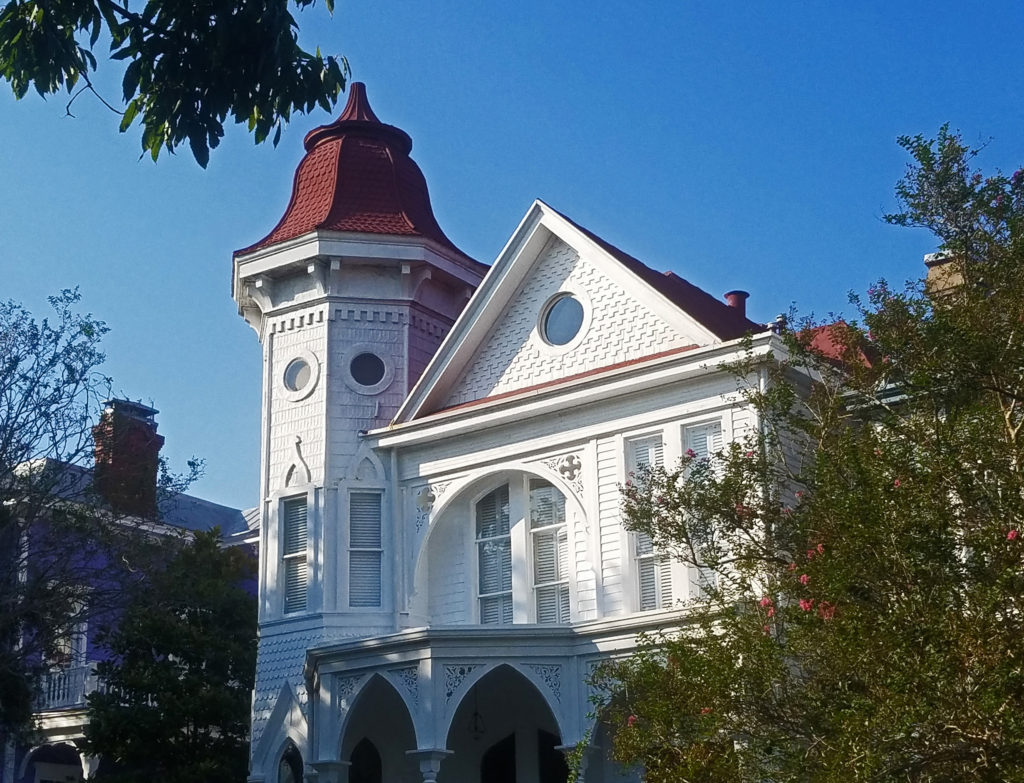 Savannah is an old city, founded in 1733. It was the first European settlement in Georgia, and the city’s history is an important aspect of its spirit and culture. Walking around in the Historic District, it’s not hard to envision yourself in another, long past, era.
Savannah is an old city, founded in 1733. It was the first European settlement in Georgia, and the city’s history is an important aspect of its spirit and culture. Walking around in the Historic District, it’s not hard to envision yourself in another, long past, era.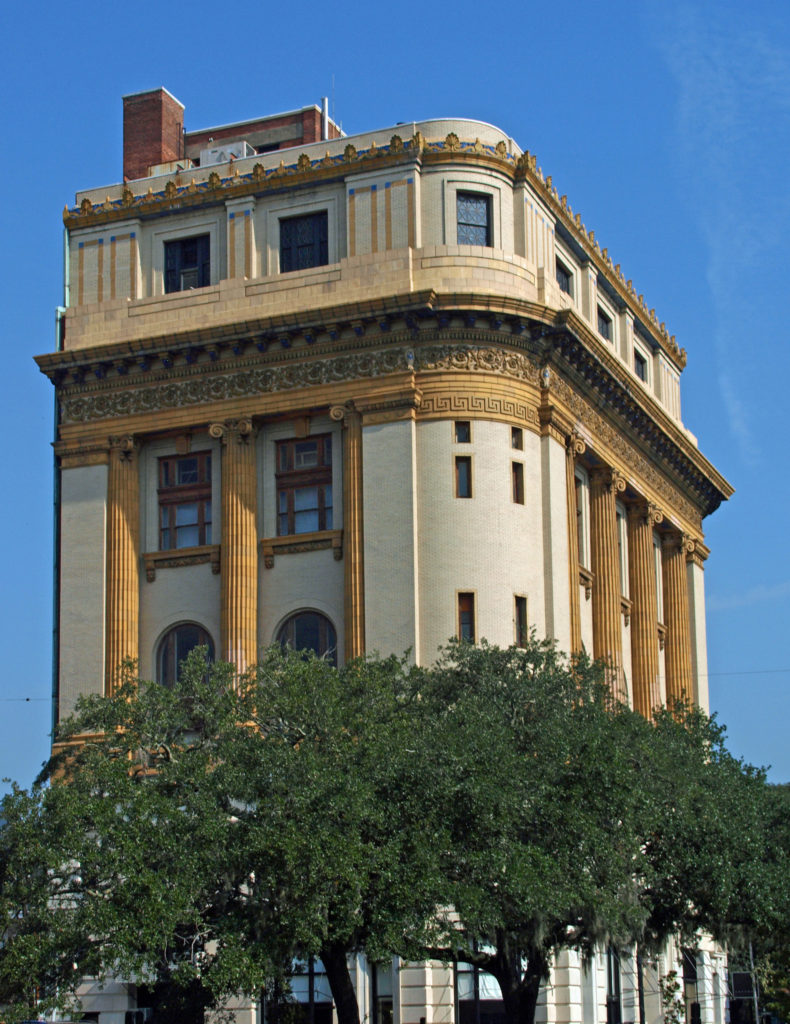 The entire Historic District was named a National Historic Landmark in 1966. The
The entire Historic District was named a National Historic Landmark in 1966. The 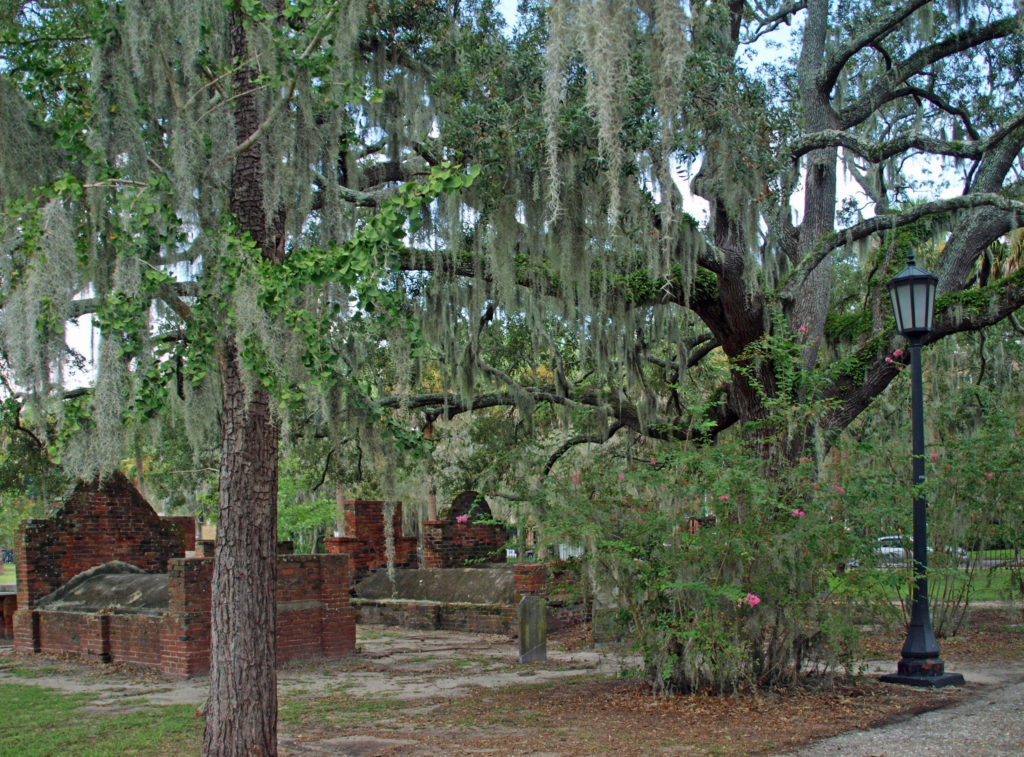
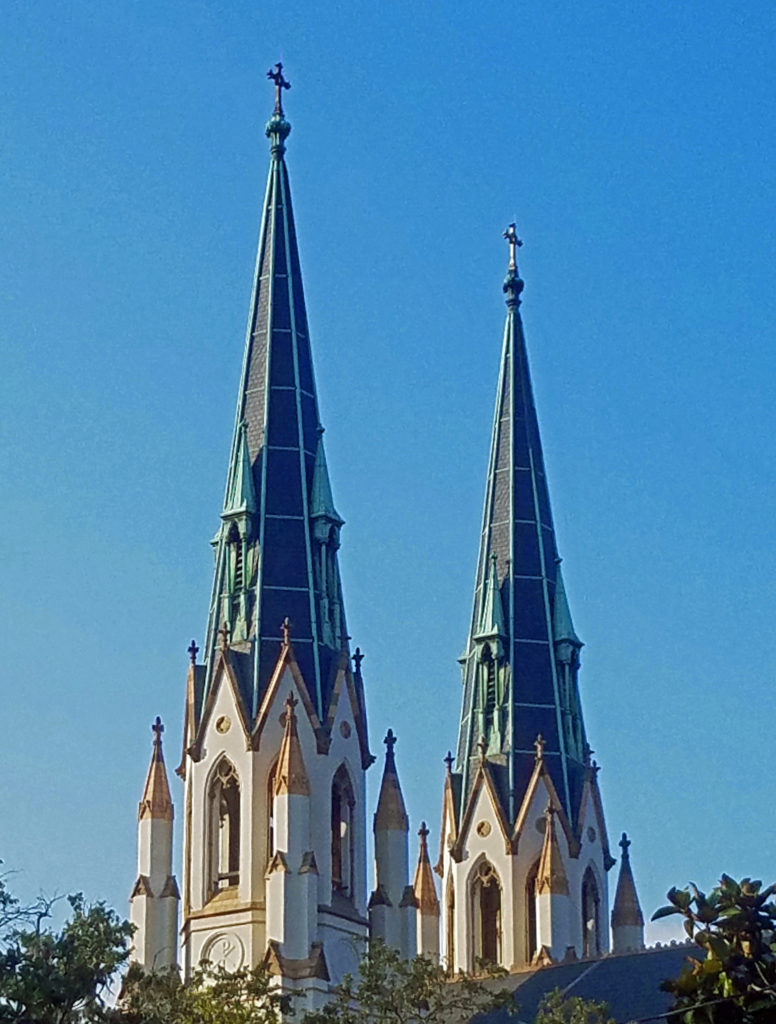 Savannah is a very walkable city. Guided walking tours of the Historic District are available for about $25 per person. There are also guided bike tours and public carriage tours available at similar rates. Private carriage tours run $100-125 for two people. Hop-on/hop-off trolley tours run $30-35 per person. Ghost tours are also a popular option for visitors.
Savannah is a very walkable city. Guided walking tours of the Historic District are available for about $25 per person. There are also guided bike tours and public carriage tours available at similar rates. Private carriage tours run $100-125 for two people. Hop-on/hop-off trolley tours run $30-35 per person. Ghost tours are also a popular option for visitors.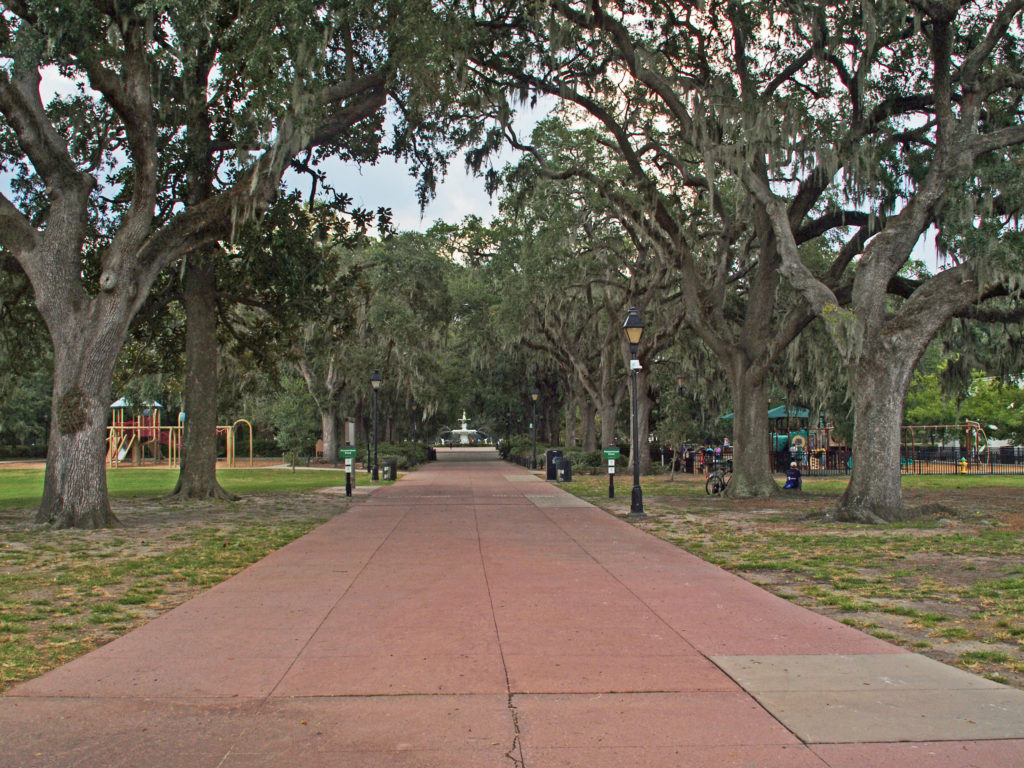 We opted to wander around on our own (but probably missed out on a lot of interesting information about the city). A good place to start a walking tour of your own is Forsyth Park, a 30 acre park at the south end of the Historic District. Its most notable feature is the Forsyth Fountain, but there is a lot more there to see. Enjoy the park’s gardens, paths, monuments, and the fountain, then head north toward the river and take in some (or all) of the 22 Squares and innumerable historic buildings, churches, and Victorian houses.
We opted to wander around on our own (but probably missed out on a lot of interesting information about the city). A good place to start a walking tour of your own is Forsyth Park, a 30 acre park at the south end of the Historic District. Its most notable feature is the Forsyth Fountain, but there is a lot more there to see. Enjoy the park’s gardens, paths, monuments, and the fountain, then head north toward the river and take in some (or all) of the 22 Squares and innumerable historic buildings, churches, and Victorian houses. Some of the more interesting structures in the Historic District include The Pirate’s House, mentioned in Robert Louis Stevenson’s Treasure Island, the city’s oldest building and now a popular restaurant, and The Olde Pink House, another of the city’s oldest structures and also a highly regarded restaurant. Not quite as old, but equally interesting, the Mercer House (officially the Mercer-Williams House Museum) was the site of the 1980s killing of a male prostitute that inspired the book (and movie) Midnight In the Garden of Good and Evil.
Some of the more interesting structures in the Historic District include The Pirate’s House, mentioned in Robert Louis Stevenson’s Treasure Island, the city’s oldest building and now a popular restaurant, and The Olde Pink House, another of the city’s oldest structures and also a highly regarded restaurant. Not quite as old, but equally interesting, the Mercer House (officially the Mercer-Williams House Museum) was the site of the 1980s killing of a male prostitute that inspired the book (and movie) Midnight In the Garden of Good and Evil.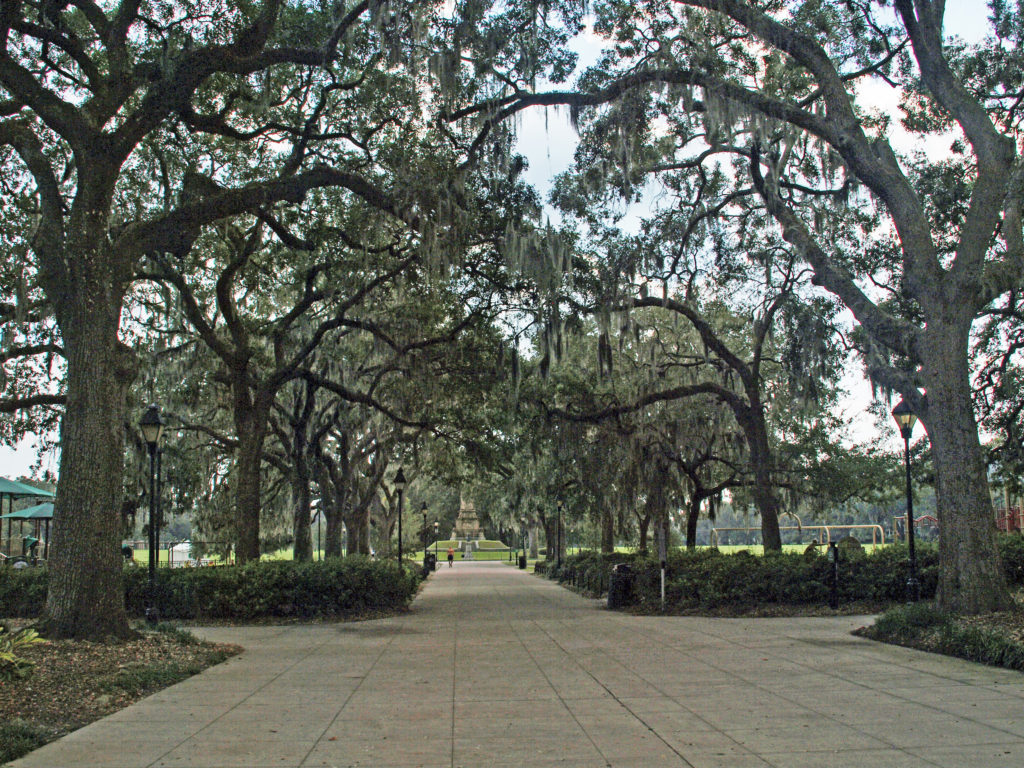
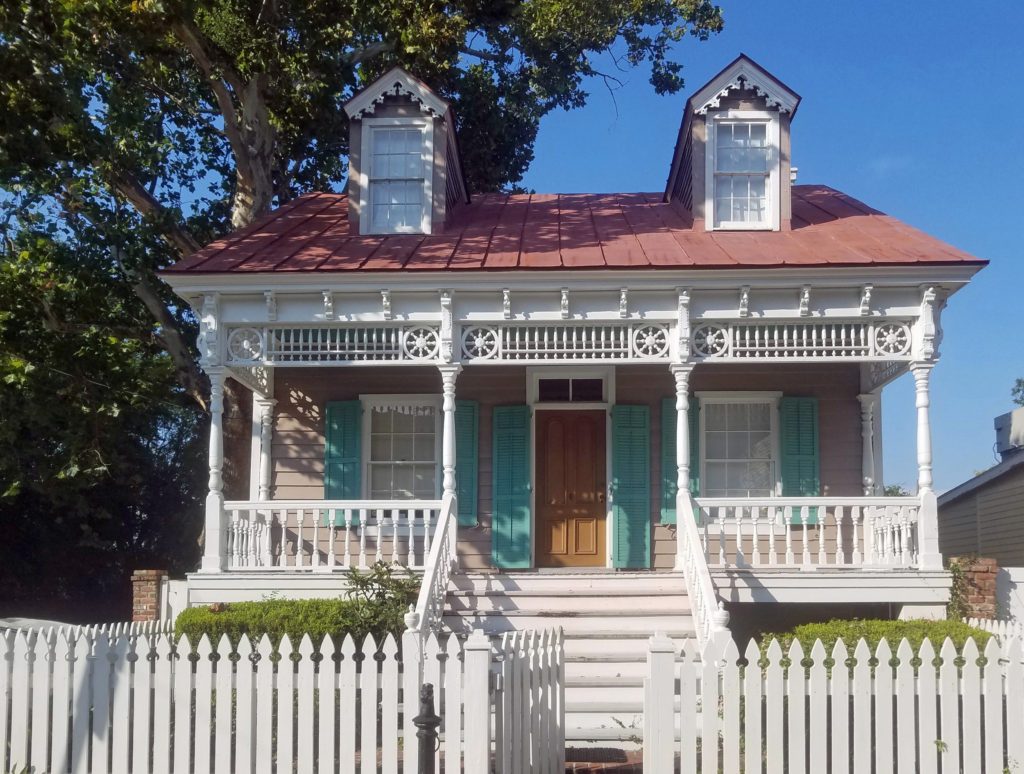 Near the north end of the Historic District,
Near the north end of the Historic District, 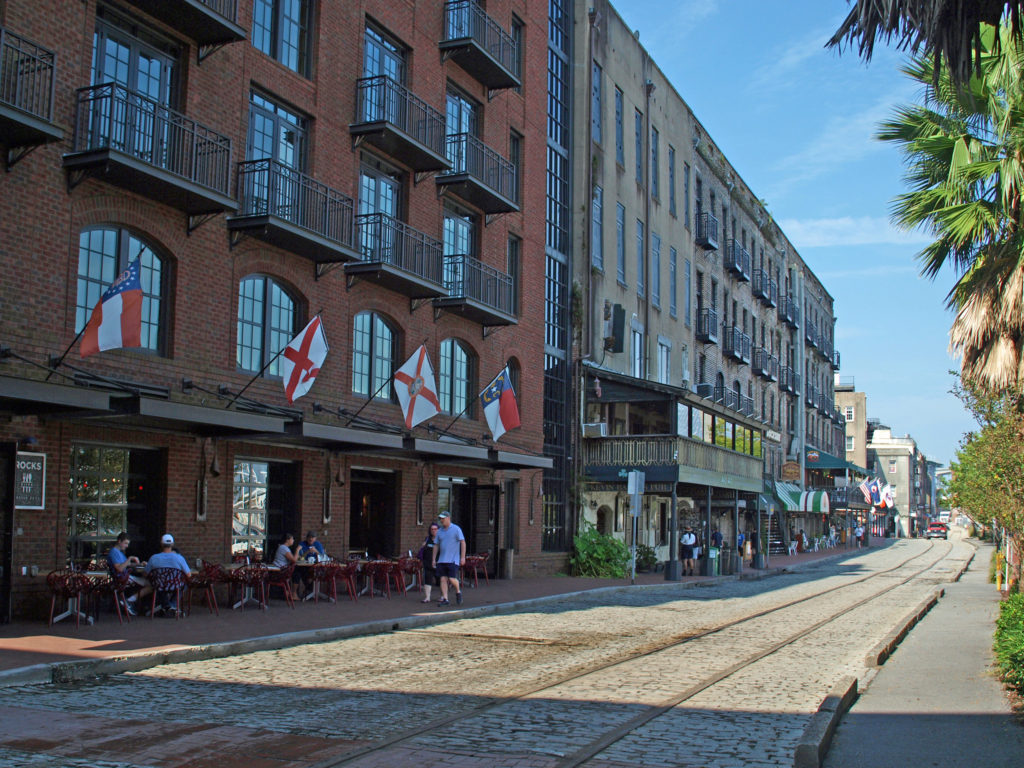 The buildings along River Street were once cotton warehouses. Today they house shops, restaurants, bars, and art galleries. River Street has its share of tacky gift shops, but it also has some interesting boutiques, antique shops, and art galleries. Among the many restaurants are Vic’s On the River, Huey’s, The Shrimp Factory, and Joe’s Crab Shack. If you need a frozen daiquiri refill, there’s another Wet Willie’s on River Street.
The buildings along River Street were once cotton warehouses. Today they house shops, restaurants, bars, and art galleries. River Street has its share of tacky gift shops, but it also has some interesting boutiques, antique shops, and art galleries. Among the many restaurants are Vic’s On the River, Huey’s, The Shrimp Factory, and Joe’s Crab Shack. If you need a frozen daiquiri refill, there’s another Wet Willie’s on River Street.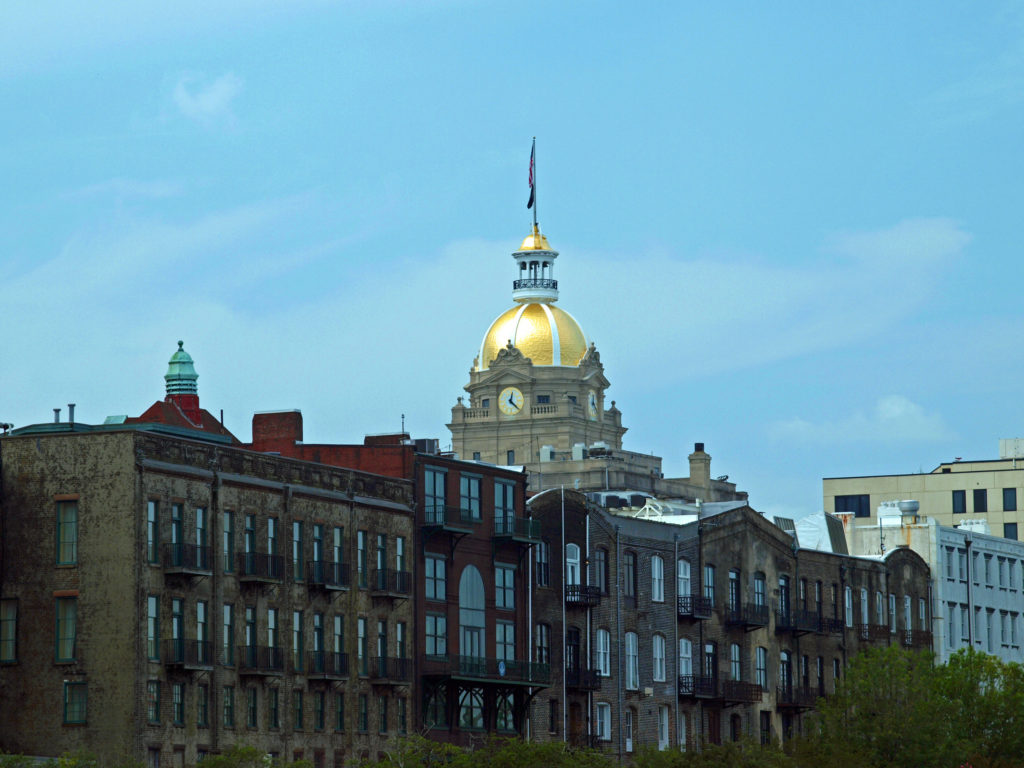
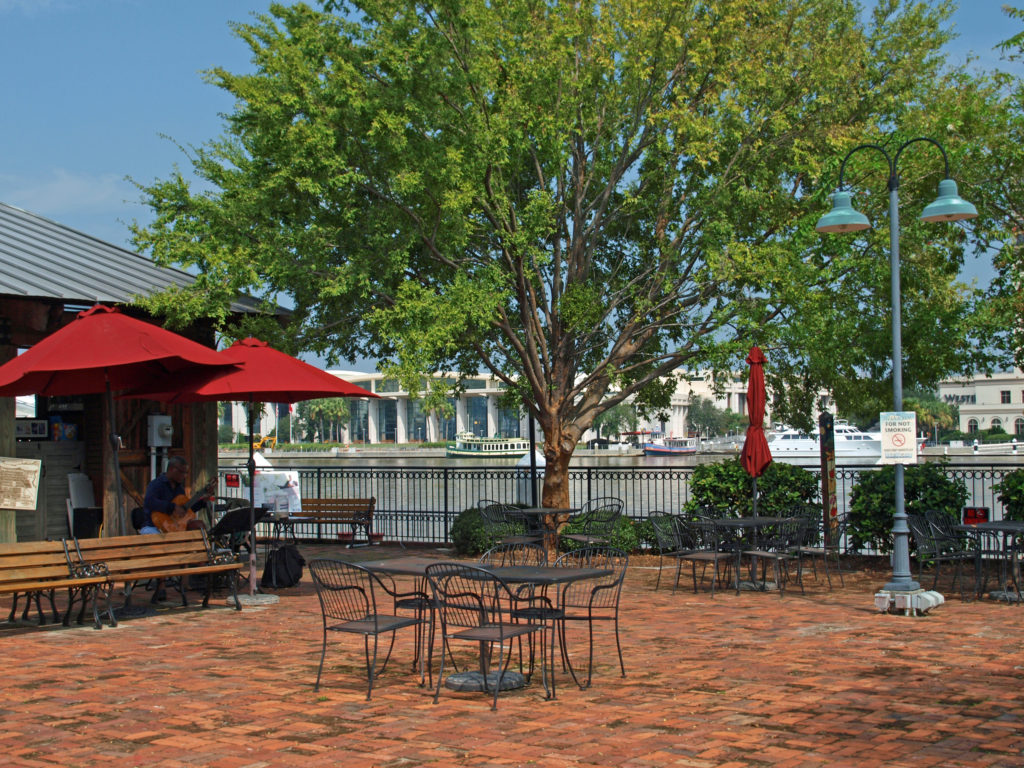 There are no shortage of other places along the river to wet your whistle, including The Warehouse Bar and Grill, Dub’s Public House, The Cotton Exchange Tavern, and a couple of rooftop bars, Top Deck Bar and Rocks On the Roof. And there are more restaurants and bars on Bay Street on the top of the bluff.
There are no shortage of other places along the river to wet your whistle, including The Warehouse Bar and Grill, Dub’s Public House, The Cotton Exchange Tavern, and a couple of rooftop bars, Top Deck Bar and Rocks On the Roof. And there are more restaurants and bars on Bay Street on the top of the bluff.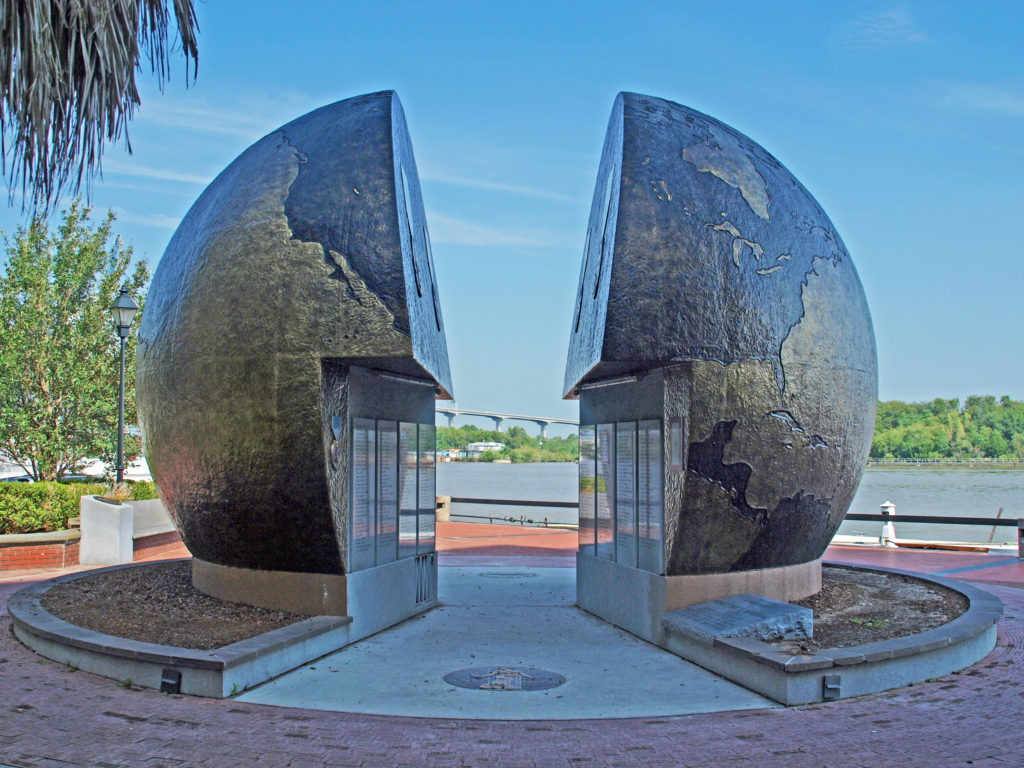
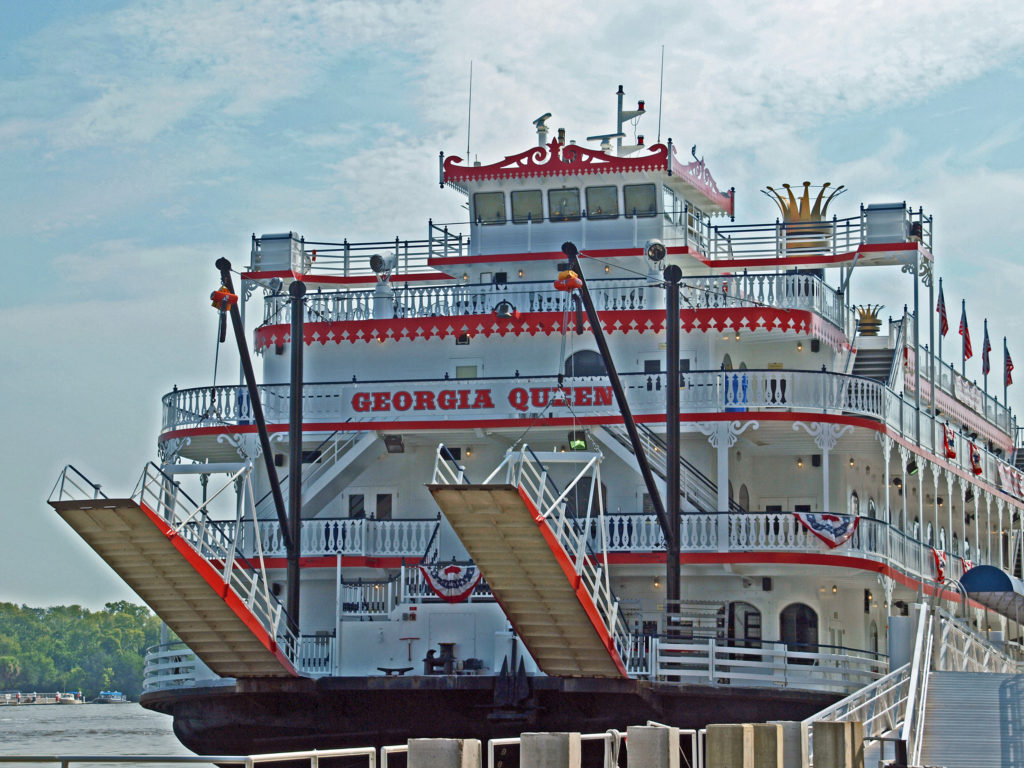
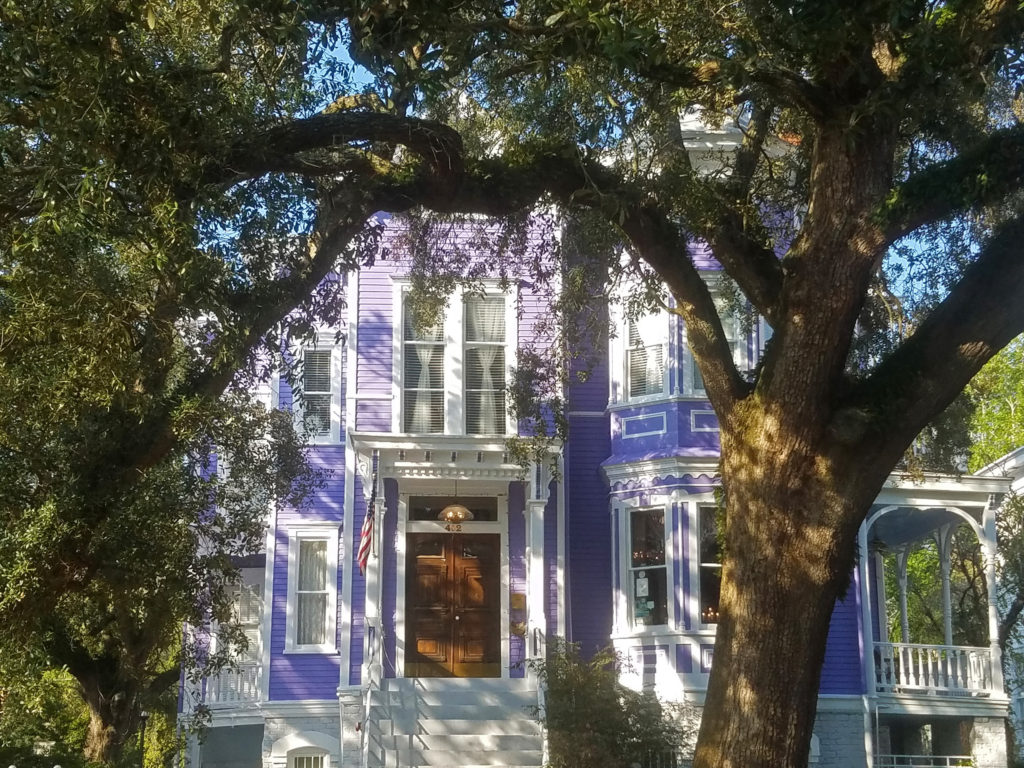
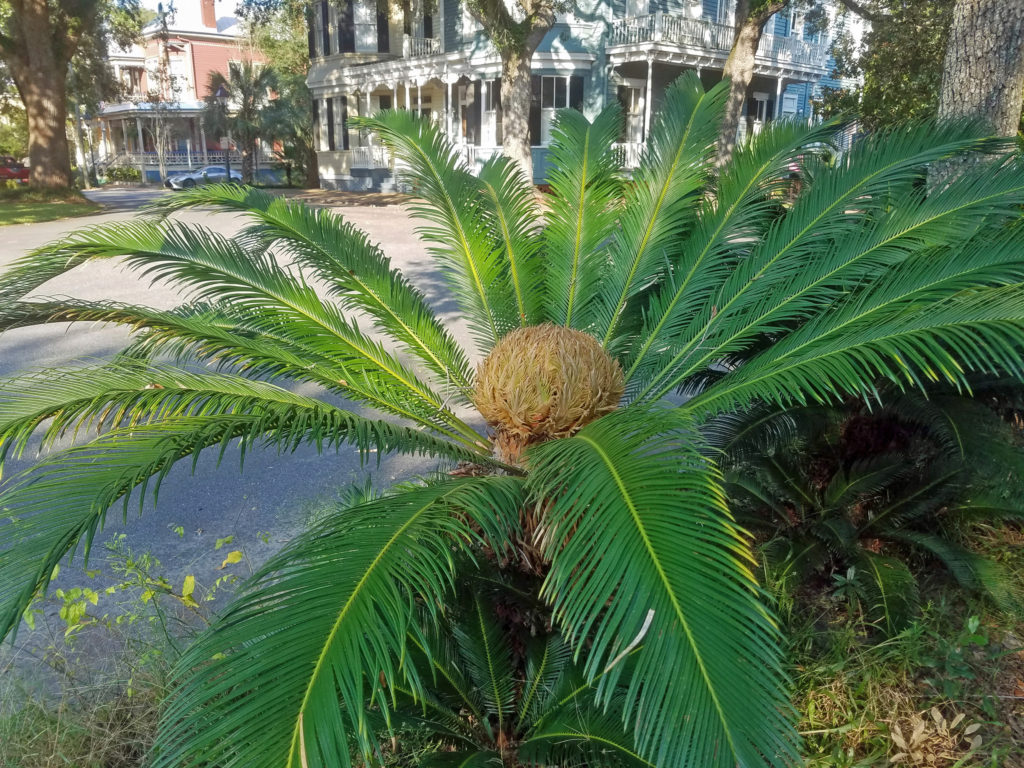 There’s much to see and do in Savannah that time didn’t allow. We had to skip many things. We checked out only a couple of the city’s art galleries, for example, and didn’t make it to other nearby destinations such as
There’s much to see and do in Savannah that time didn’t allow. We had to skip many things. We checked out only a couple of the city’s art galleries, for example, and didn’t make it to other nearby destinations such as 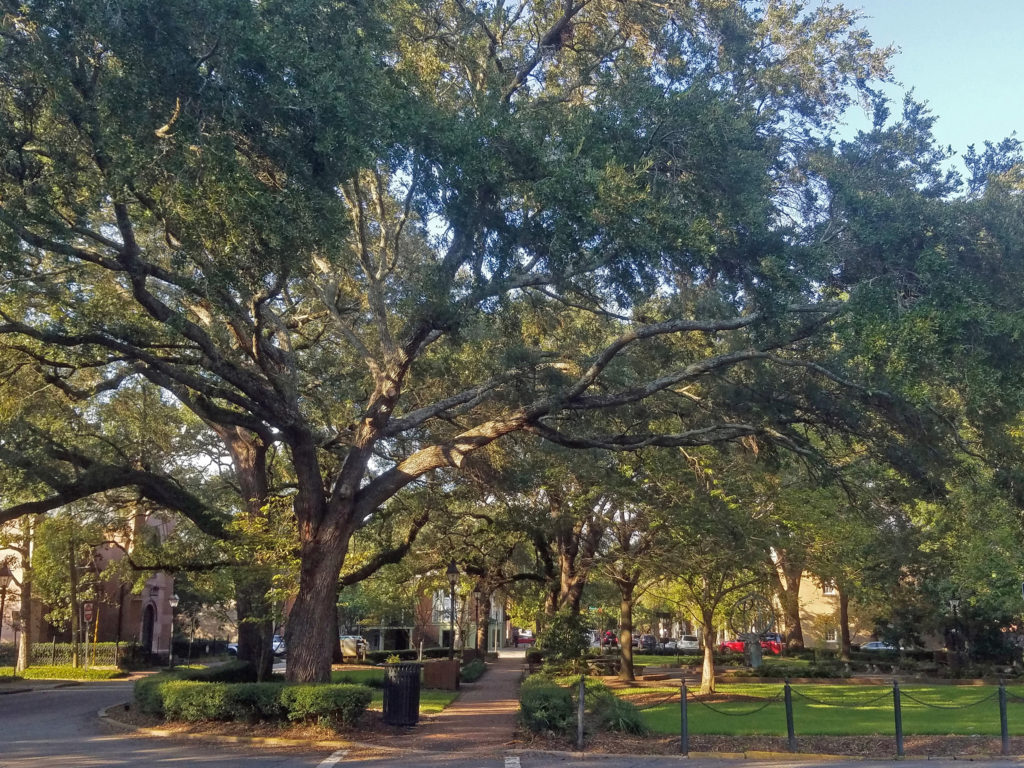
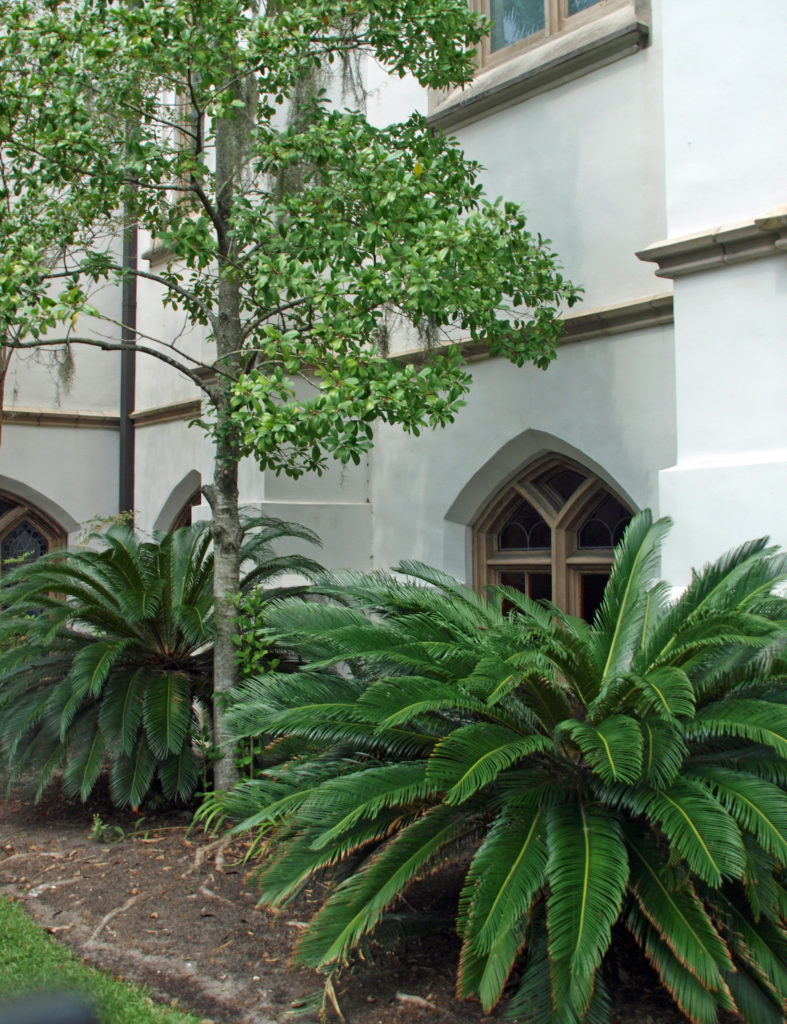 Originally posted January 24, 2020. Updated and re-posted April 15, 2023.
Originally posted January 24, 2020. Updated and re-posted April 15, 2023.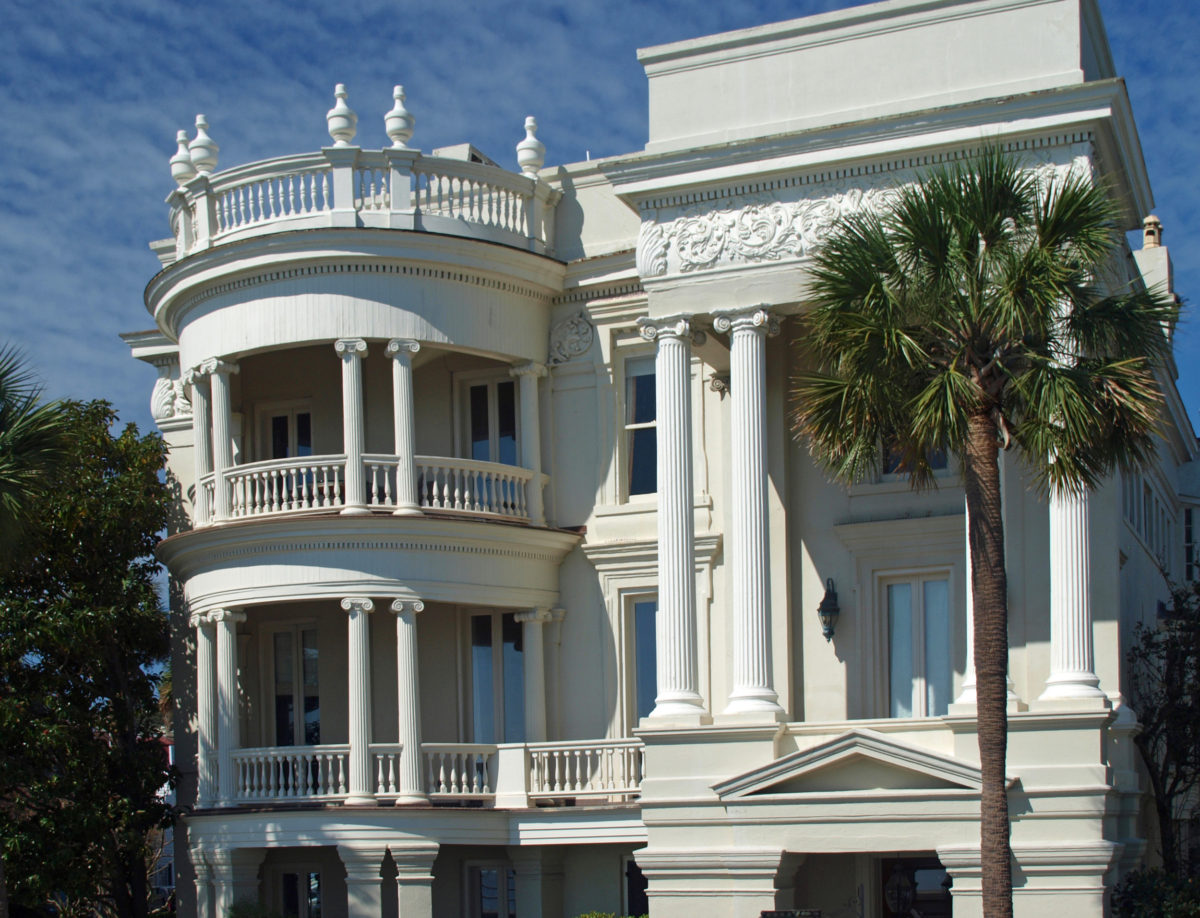
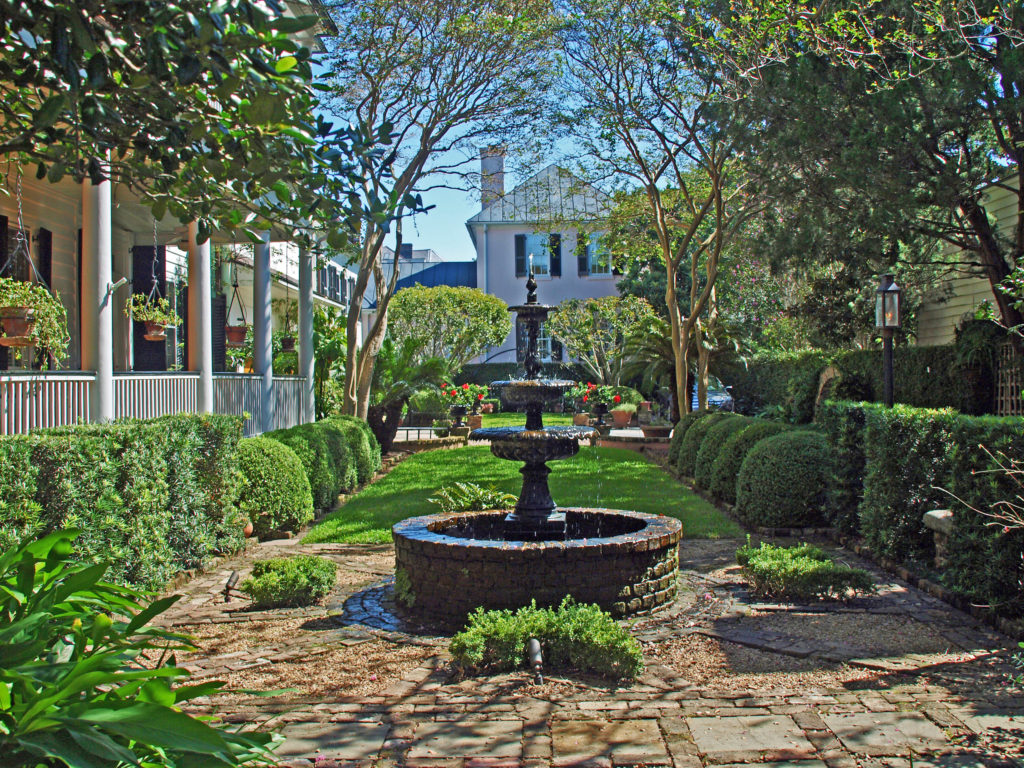
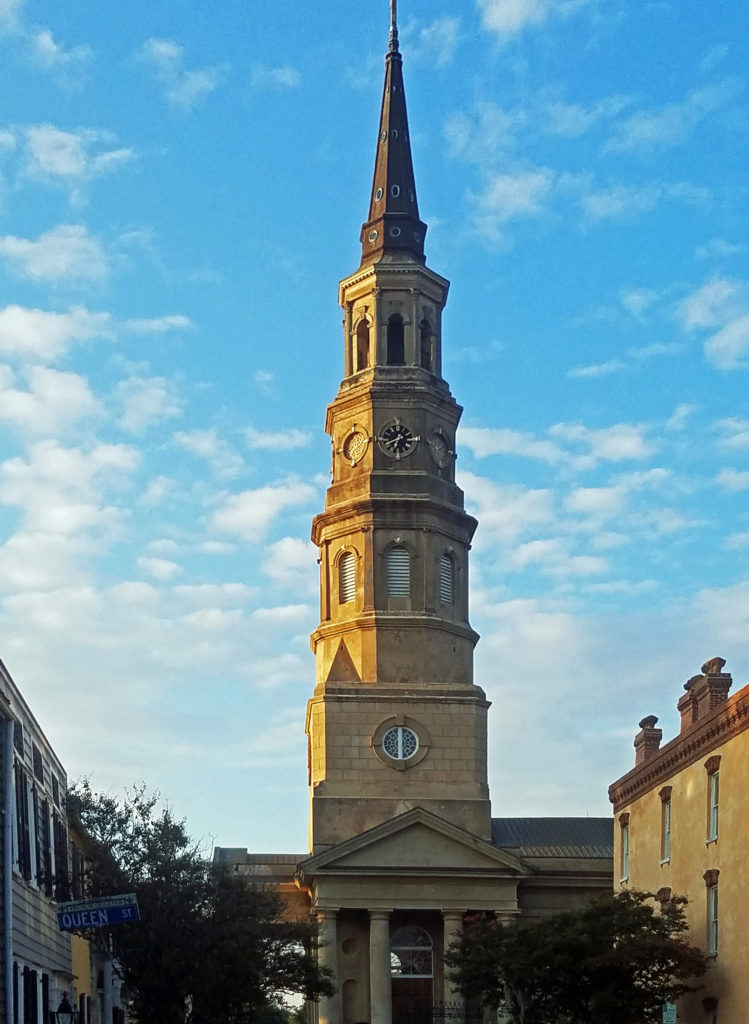
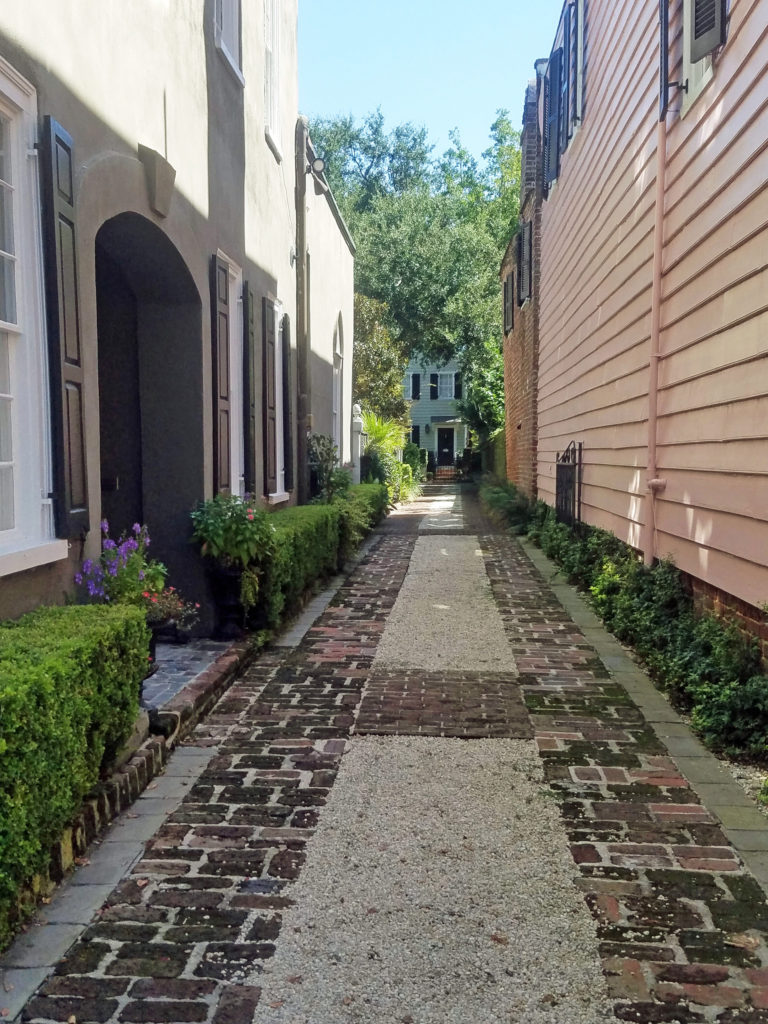
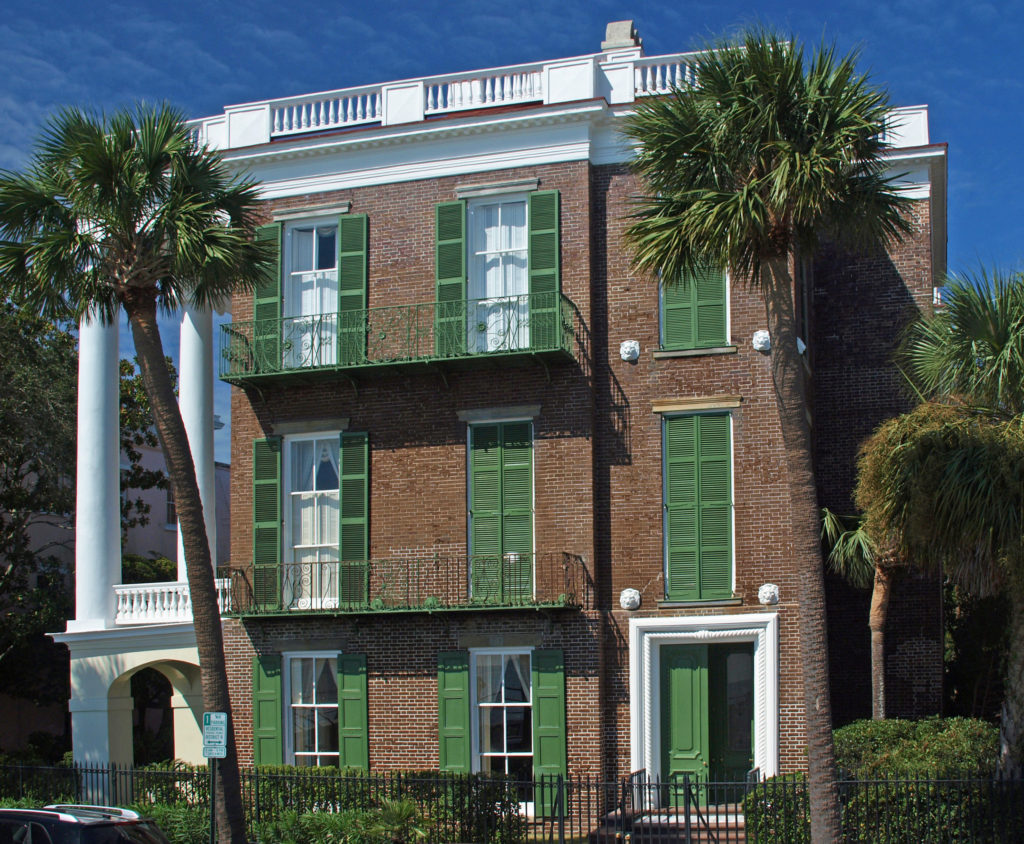
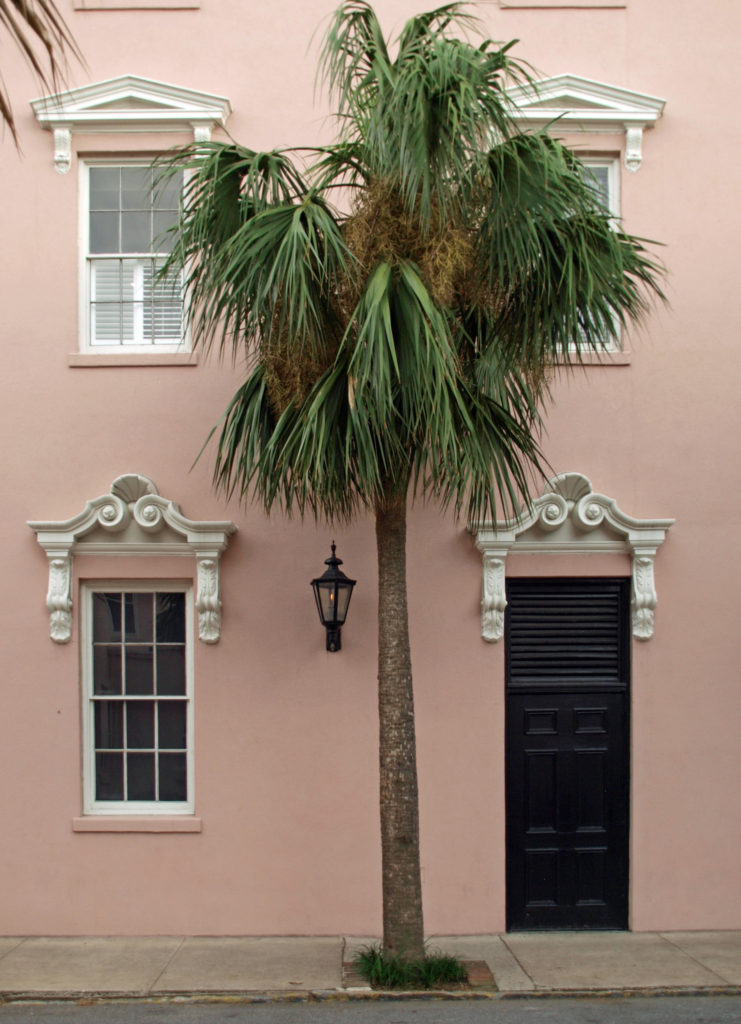
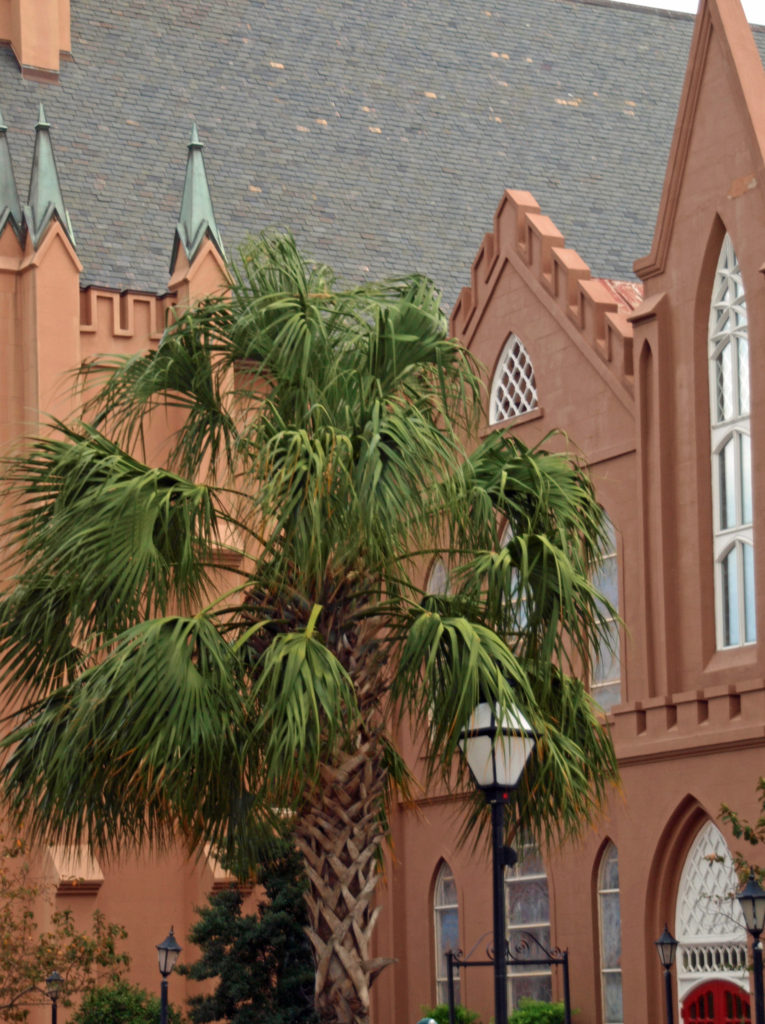
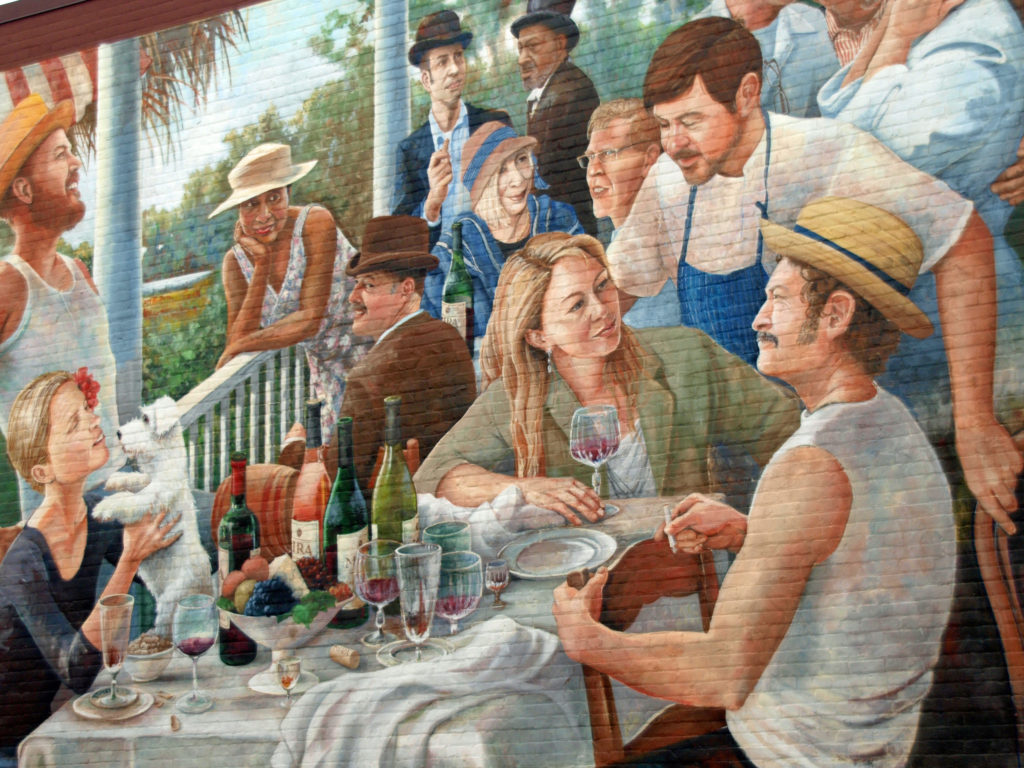
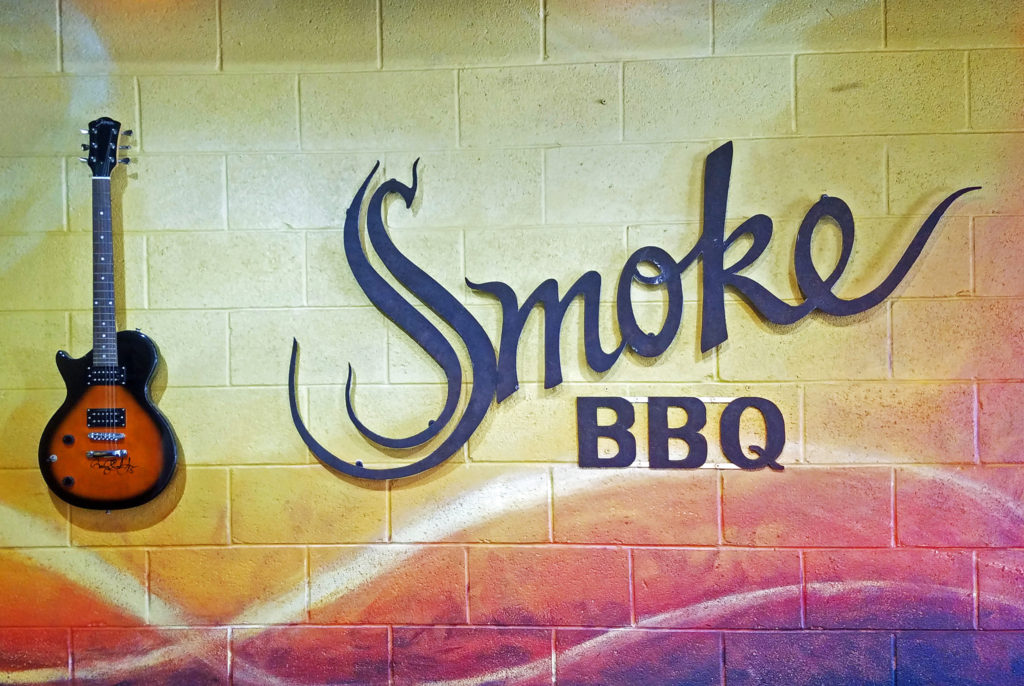
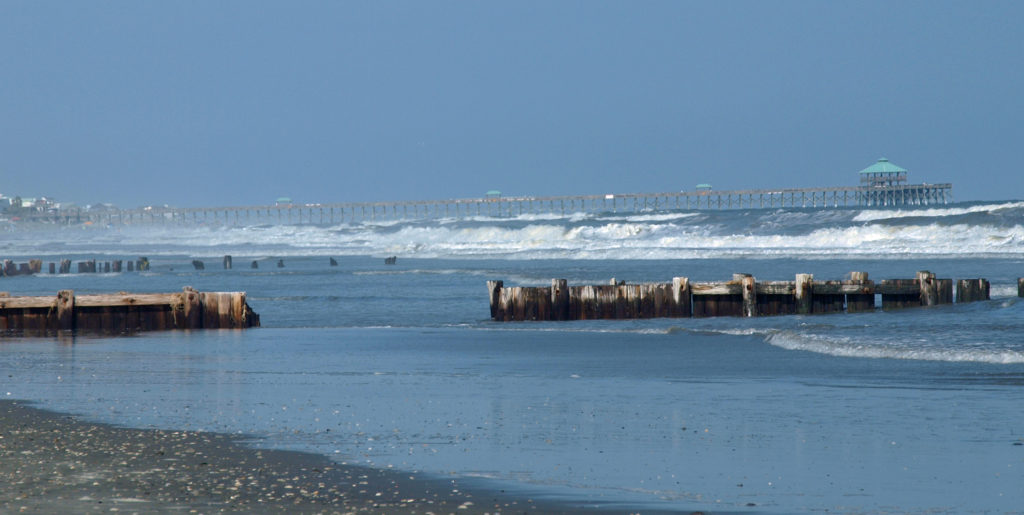
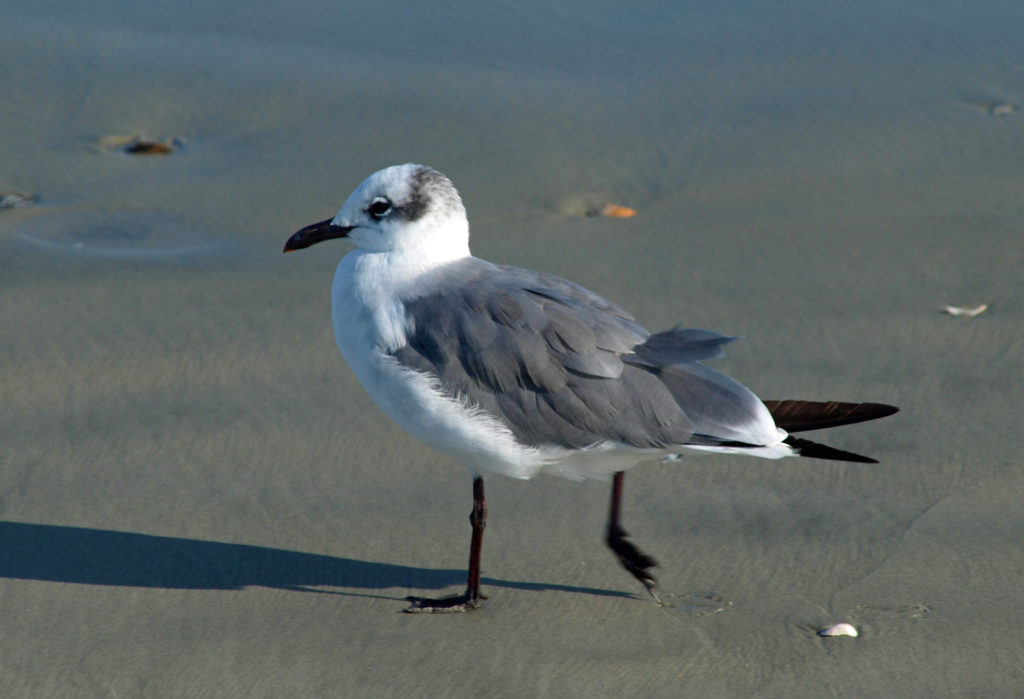
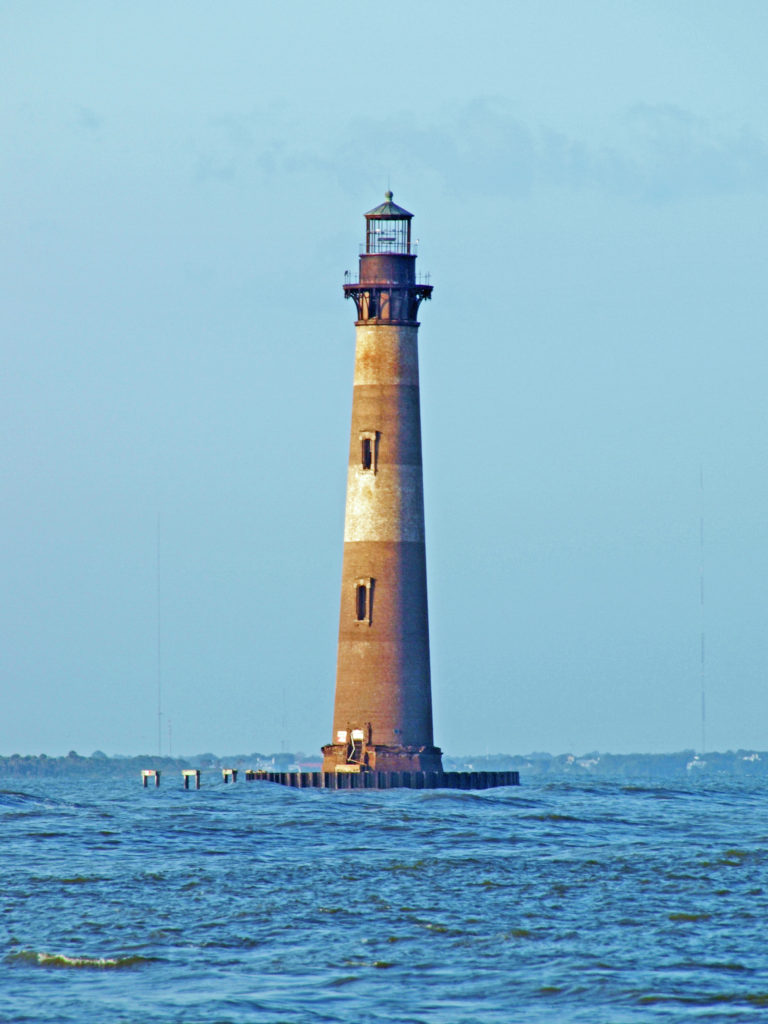
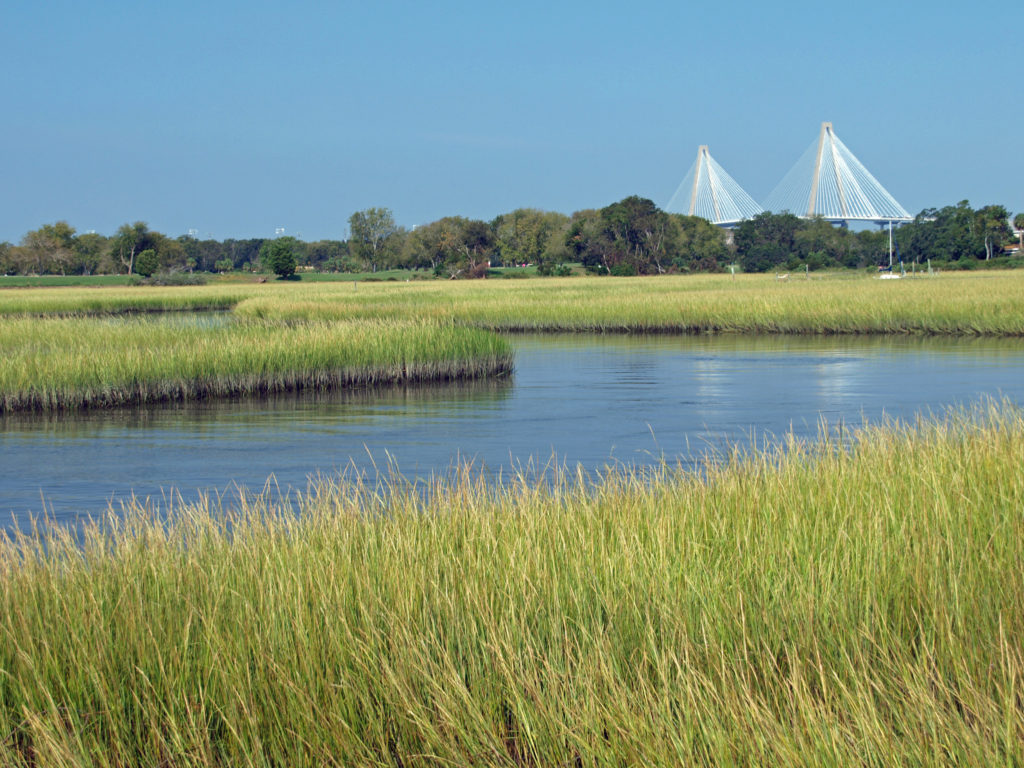
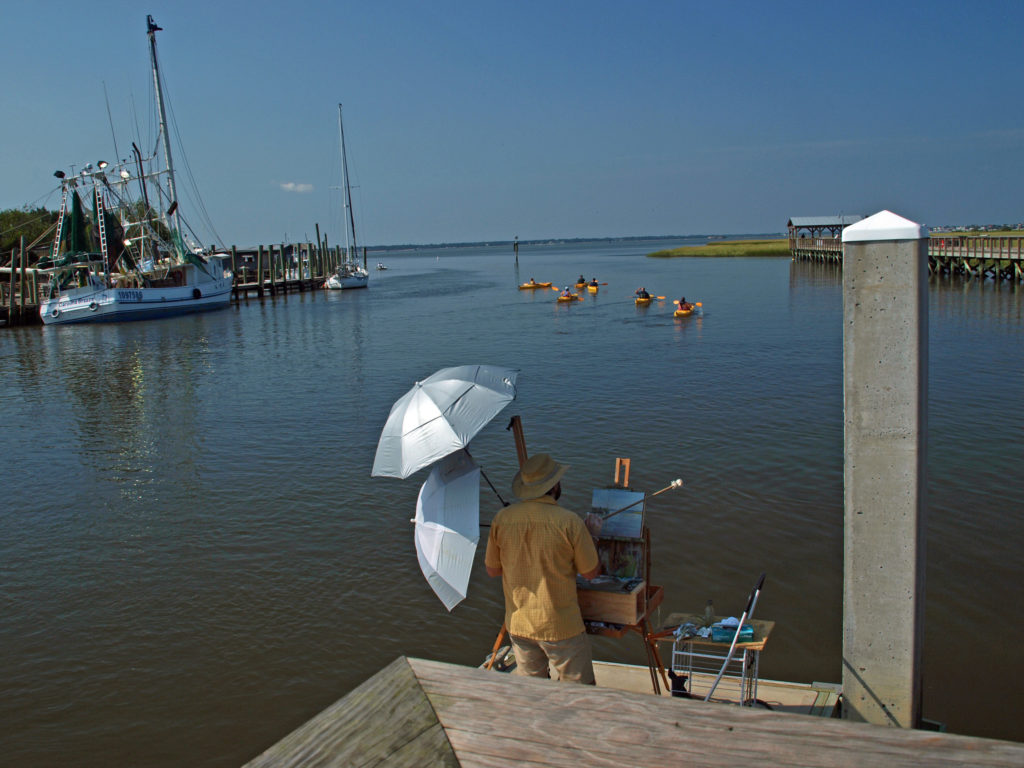
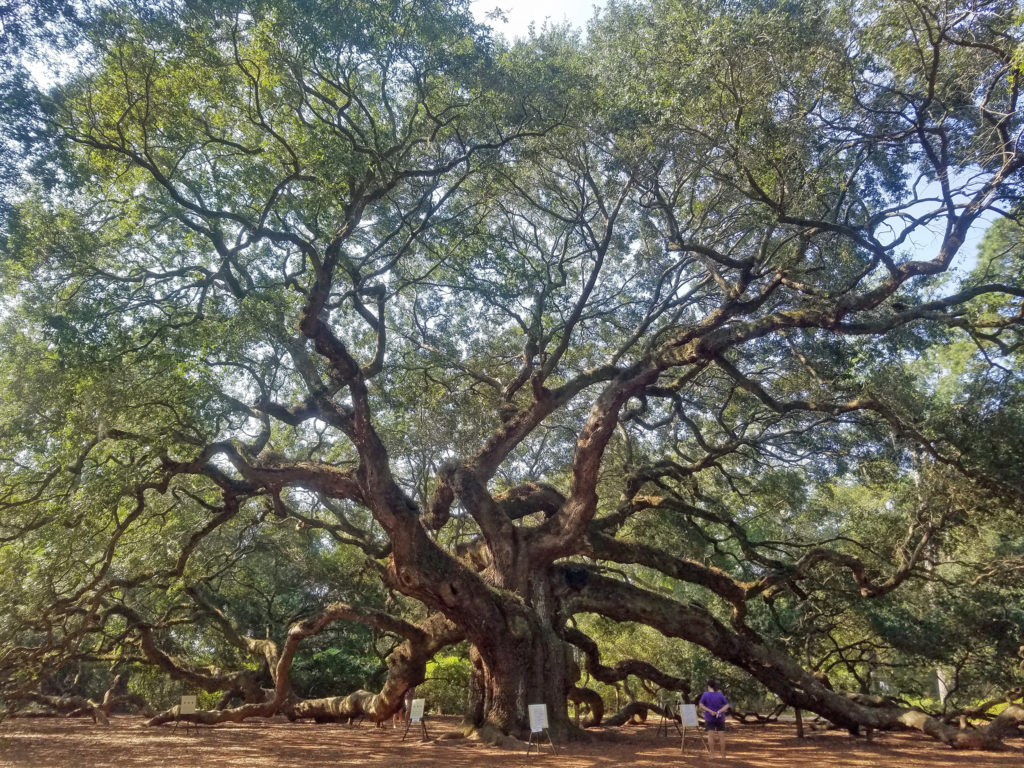
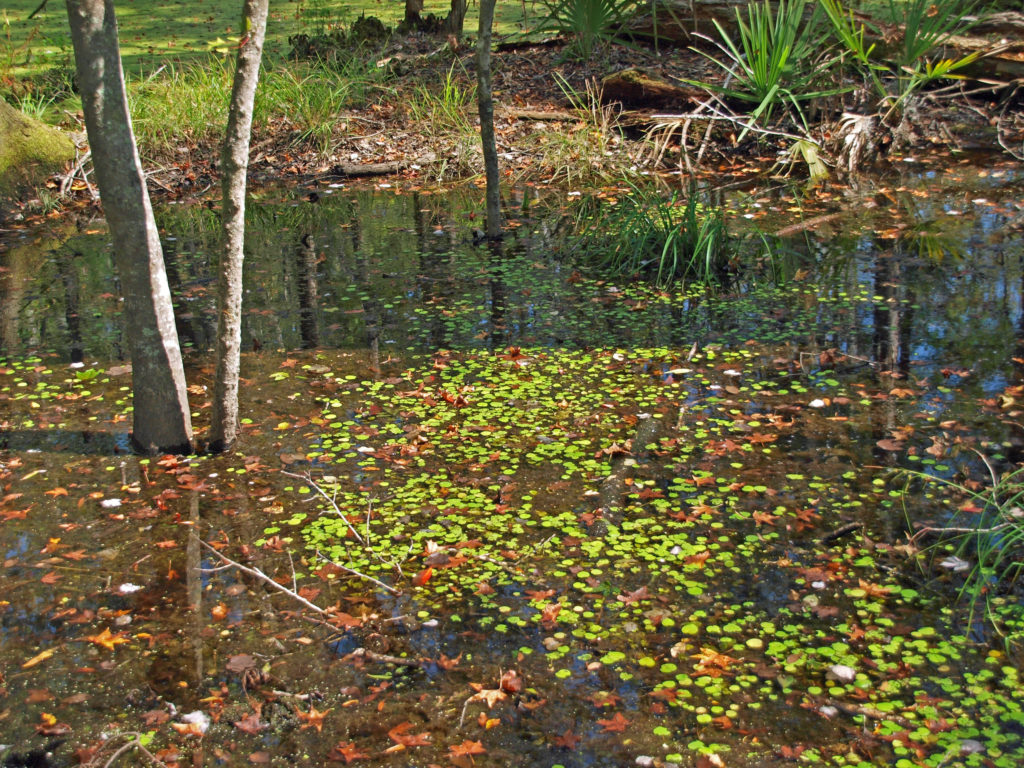
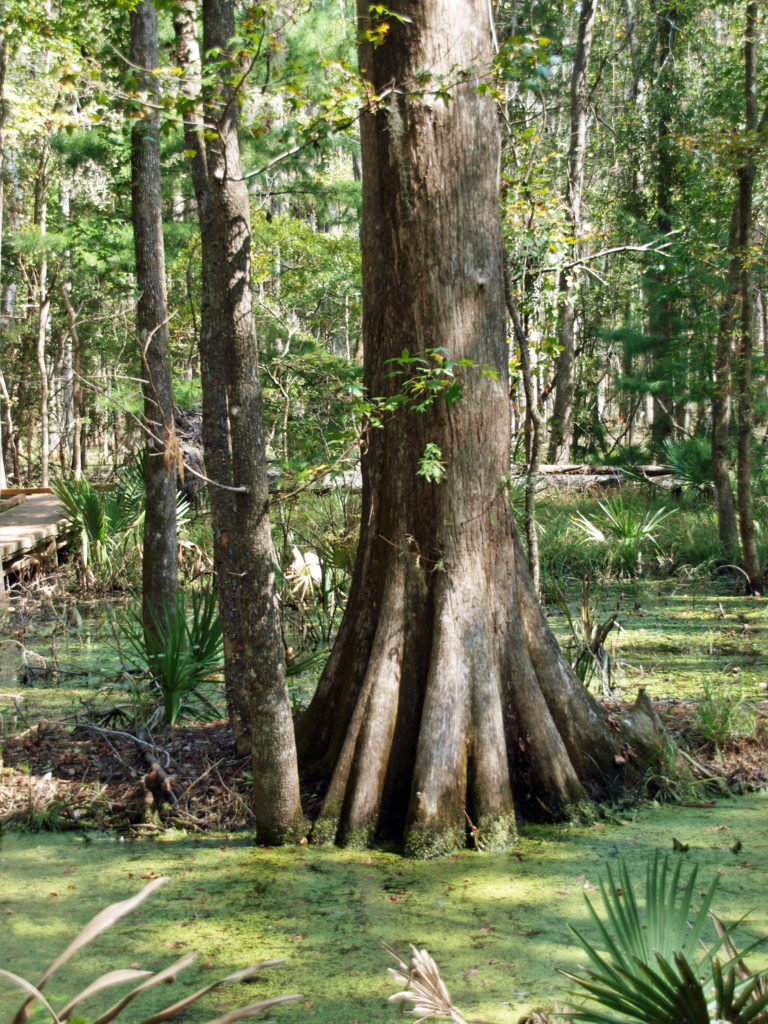
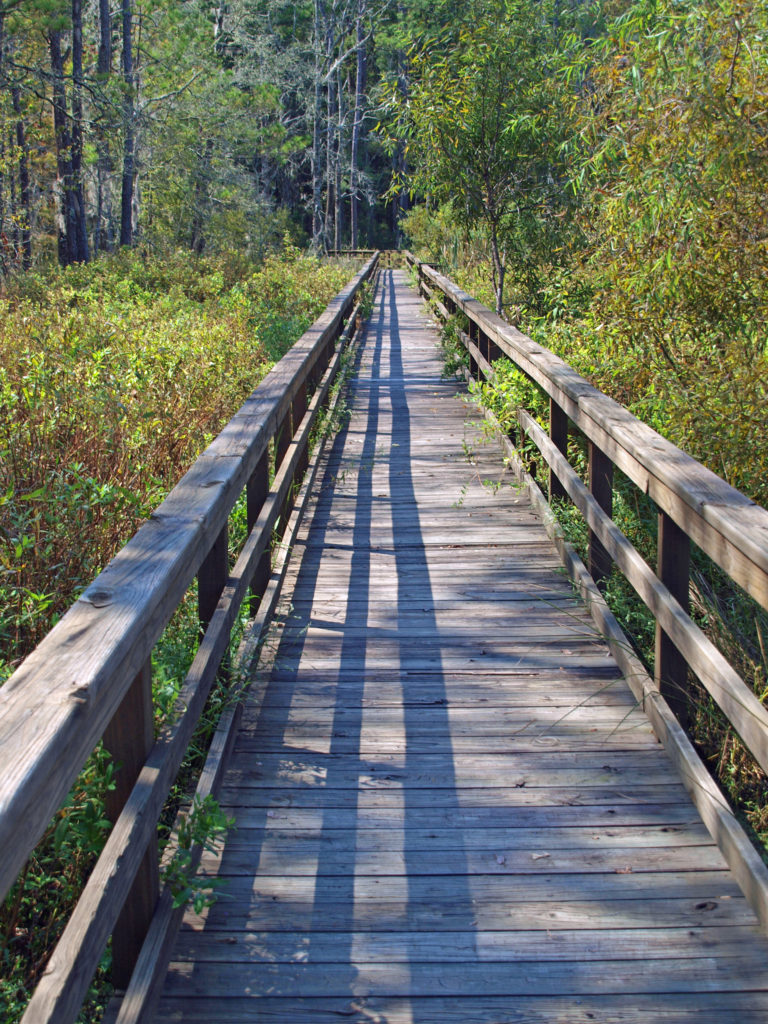
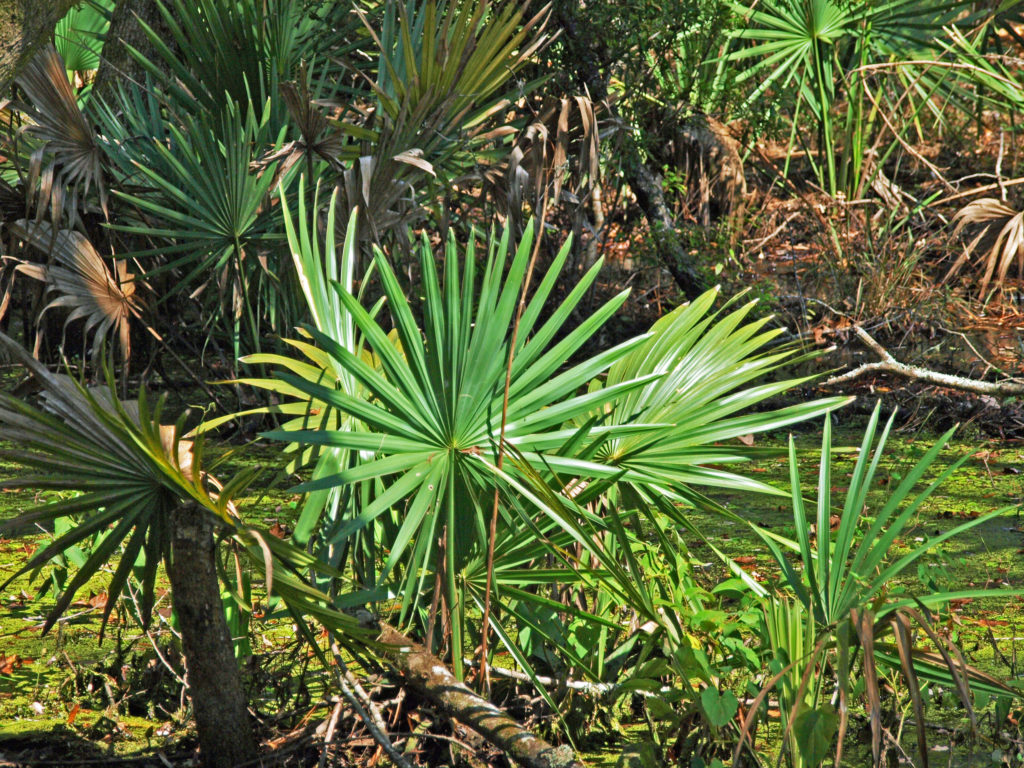
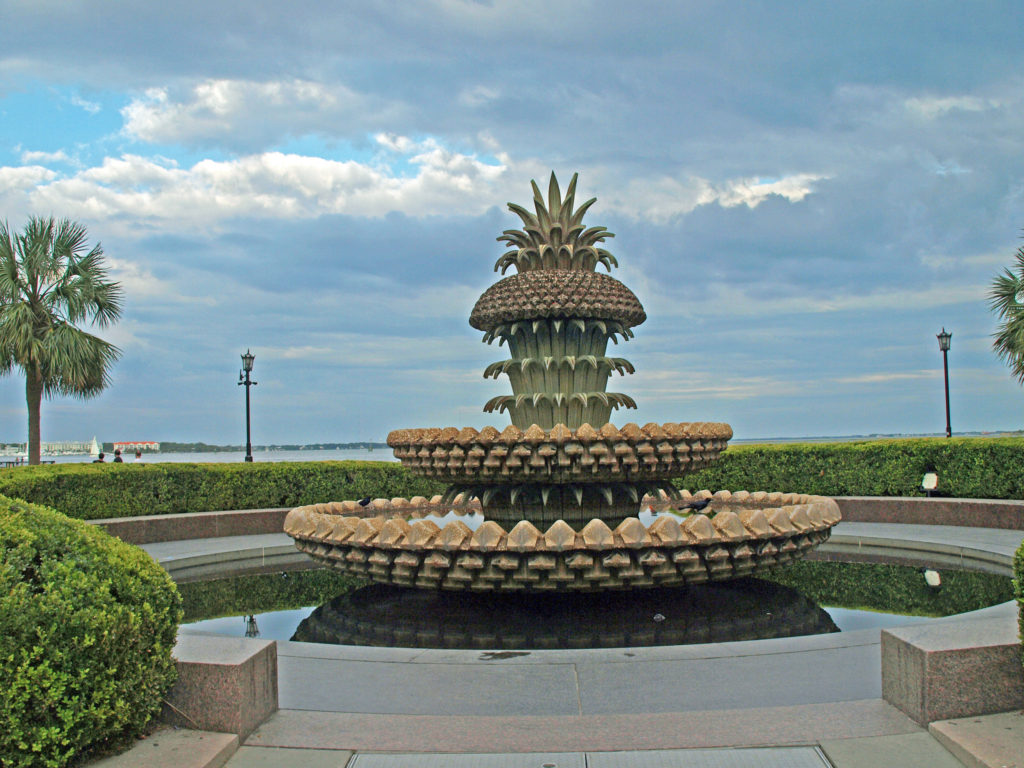 We had a great time exploring Charleston. It’s really a beautiful and charming place. But to really see all it has to offer, you need to plan for more than a three-day visit. For more information, check out the
We had a great time exploring Charleston. It’s really a beautiful and charming place. But to really see all it has to offer, you need to plan for more than a three-day visit. For more information, check out the 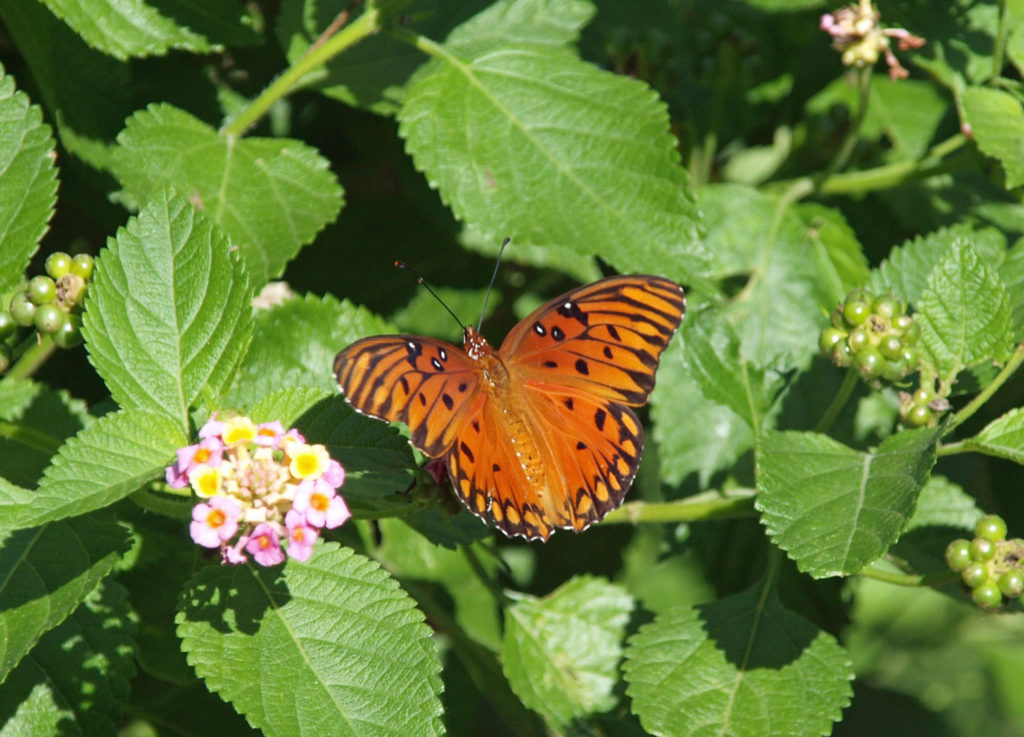 Originally posted Jan. 20, 2020. Updated and re-posted April 9, 2023.
Originally posted Jan. 20, 2020. Updated and re-posted April 9, 2023.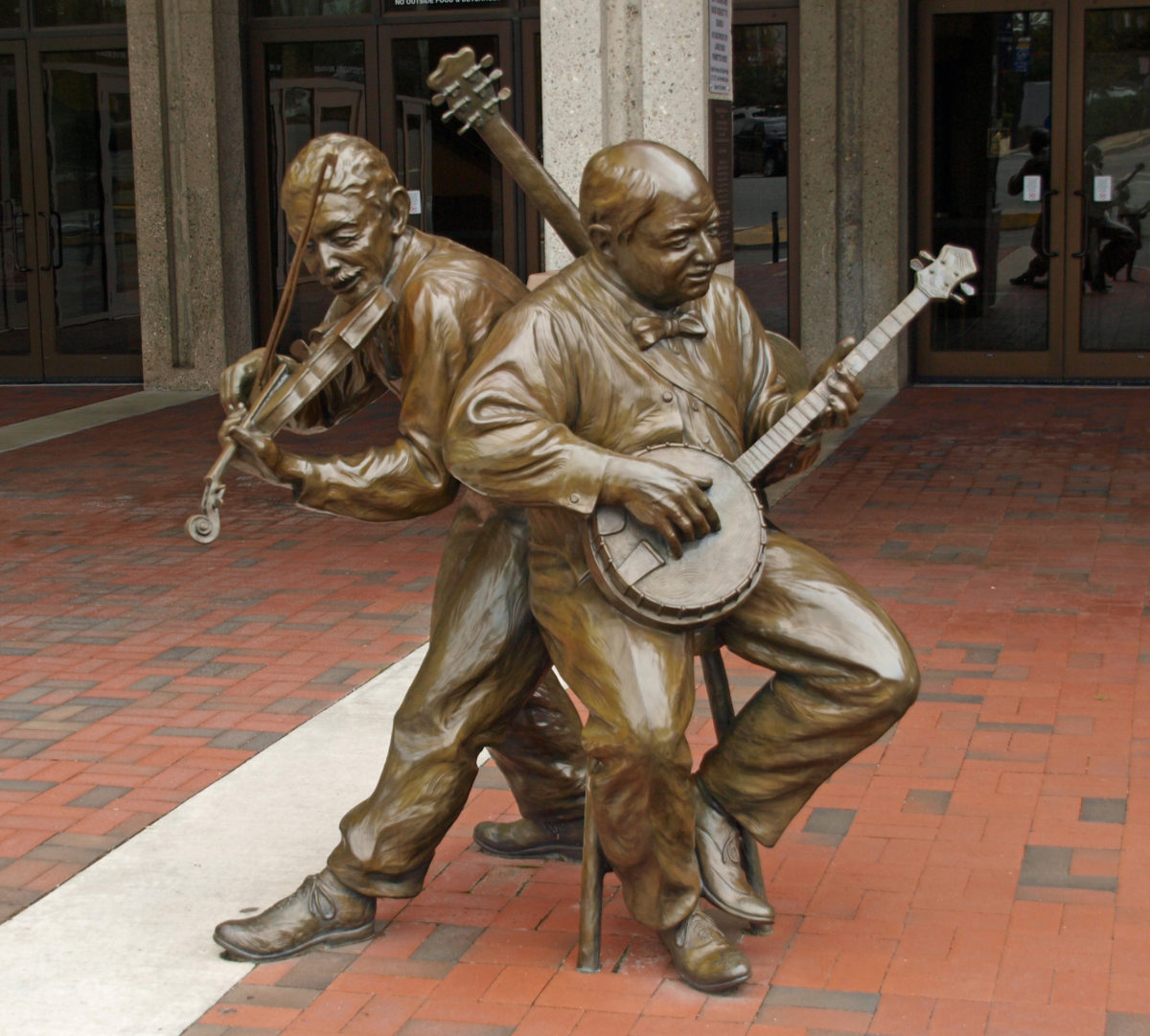
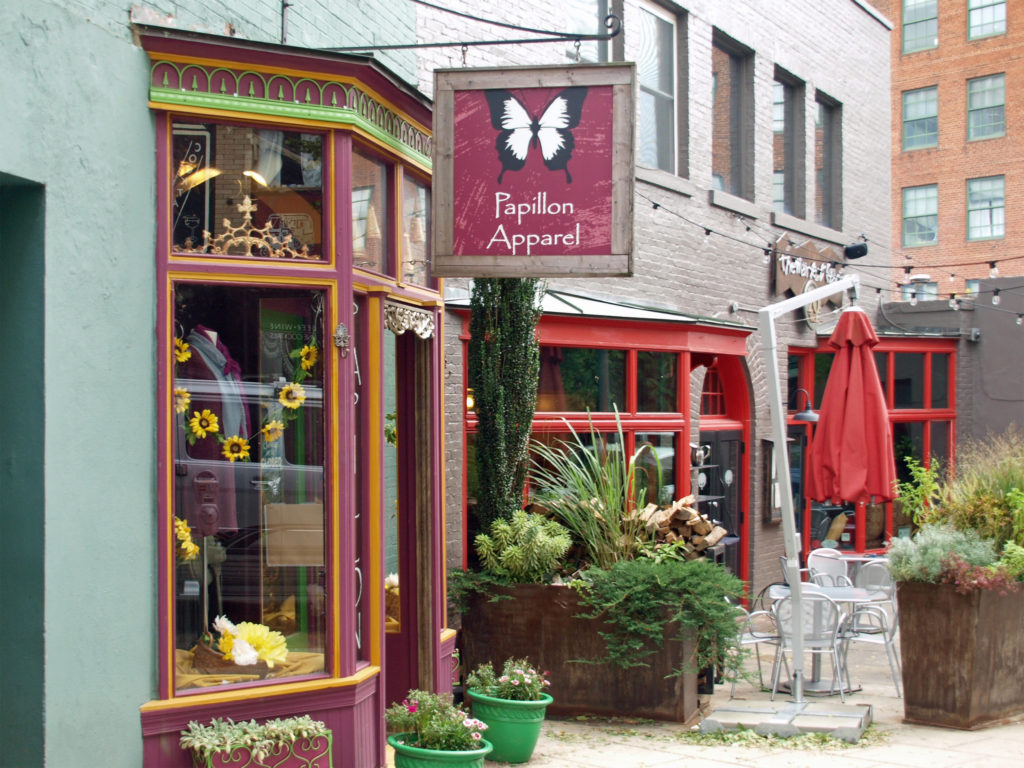
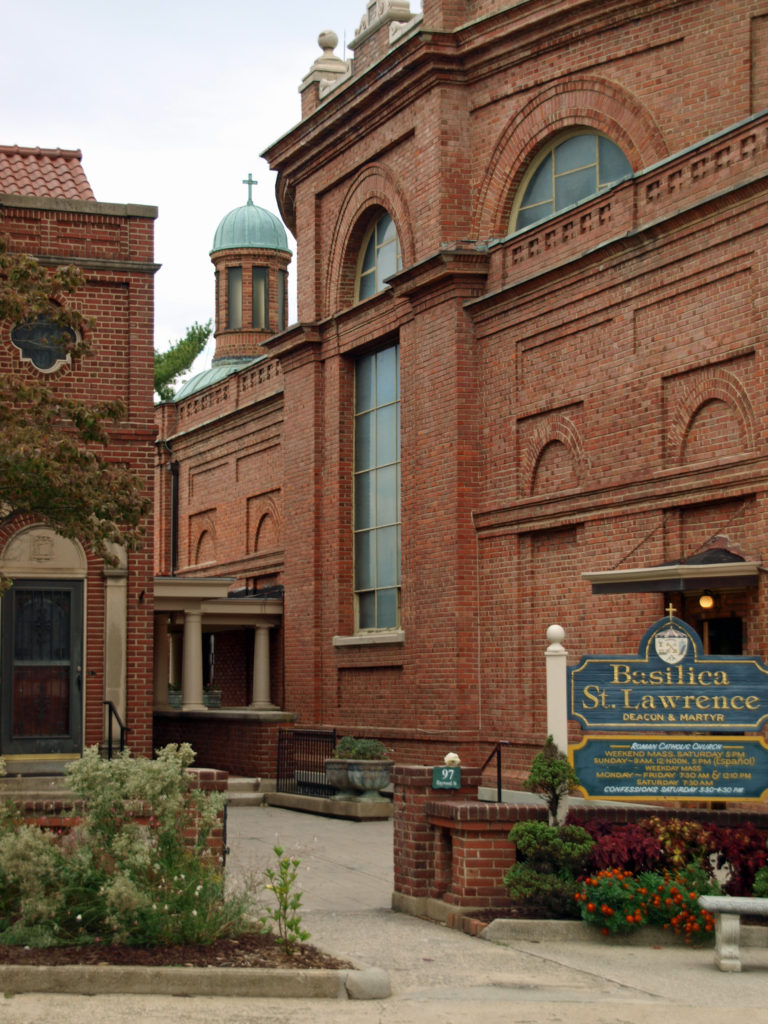
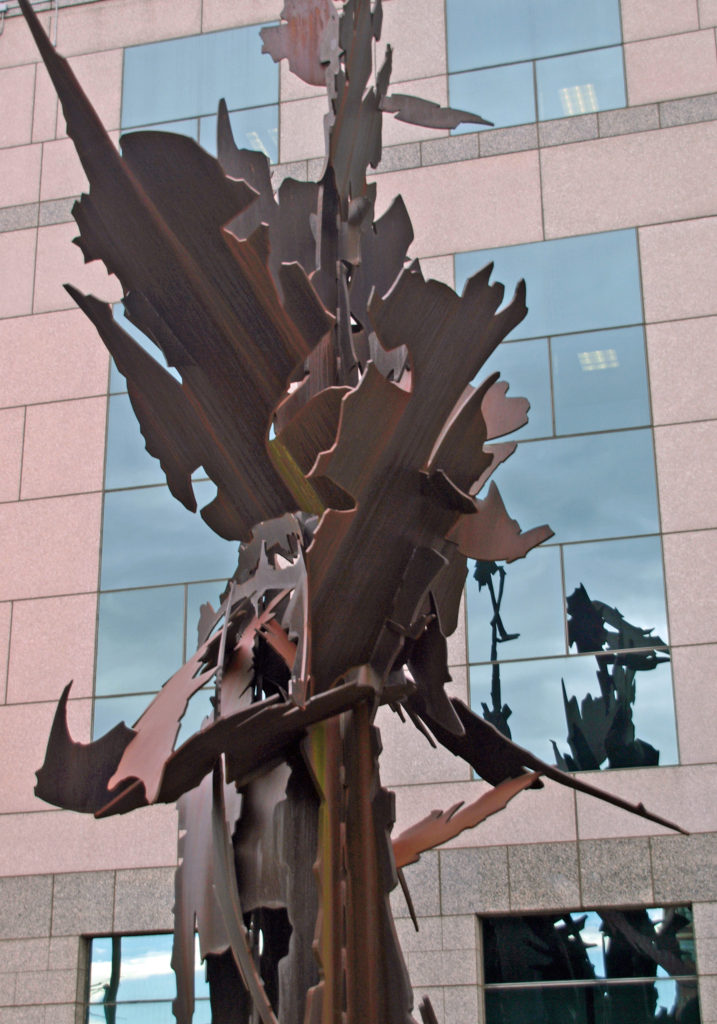
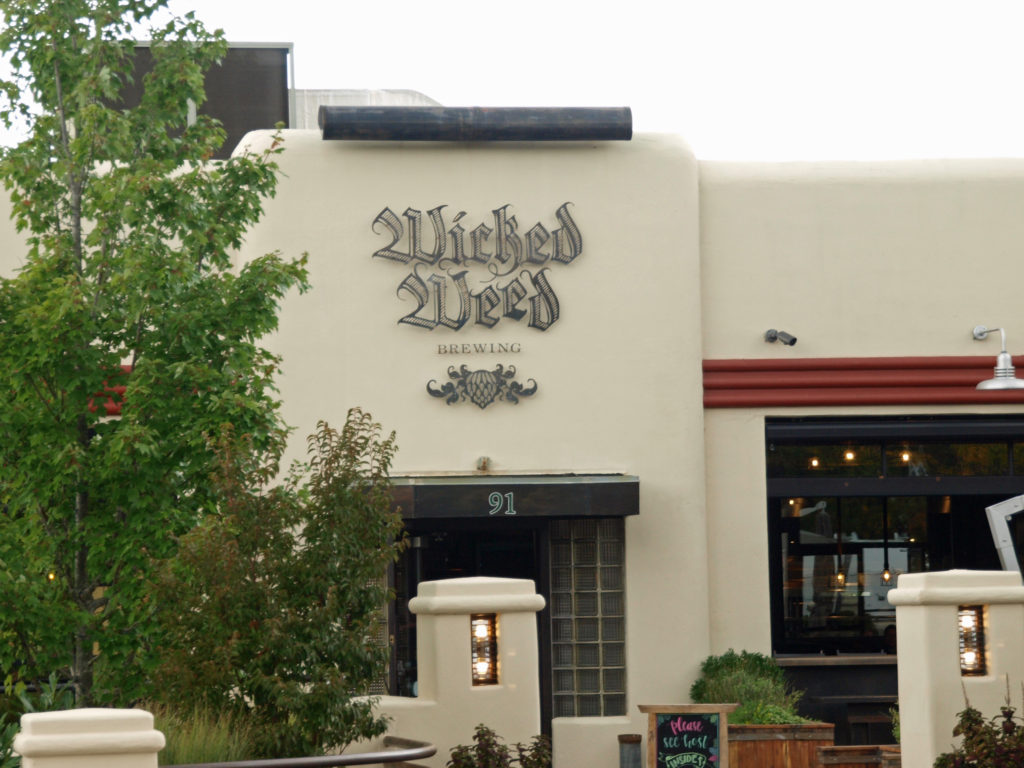
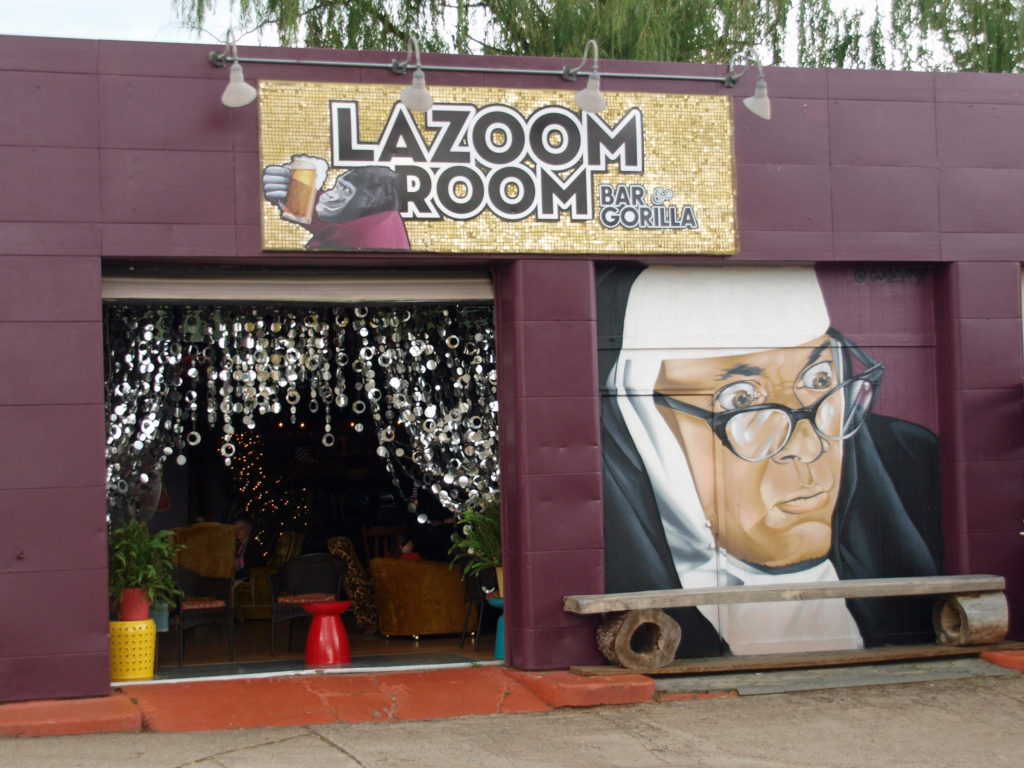
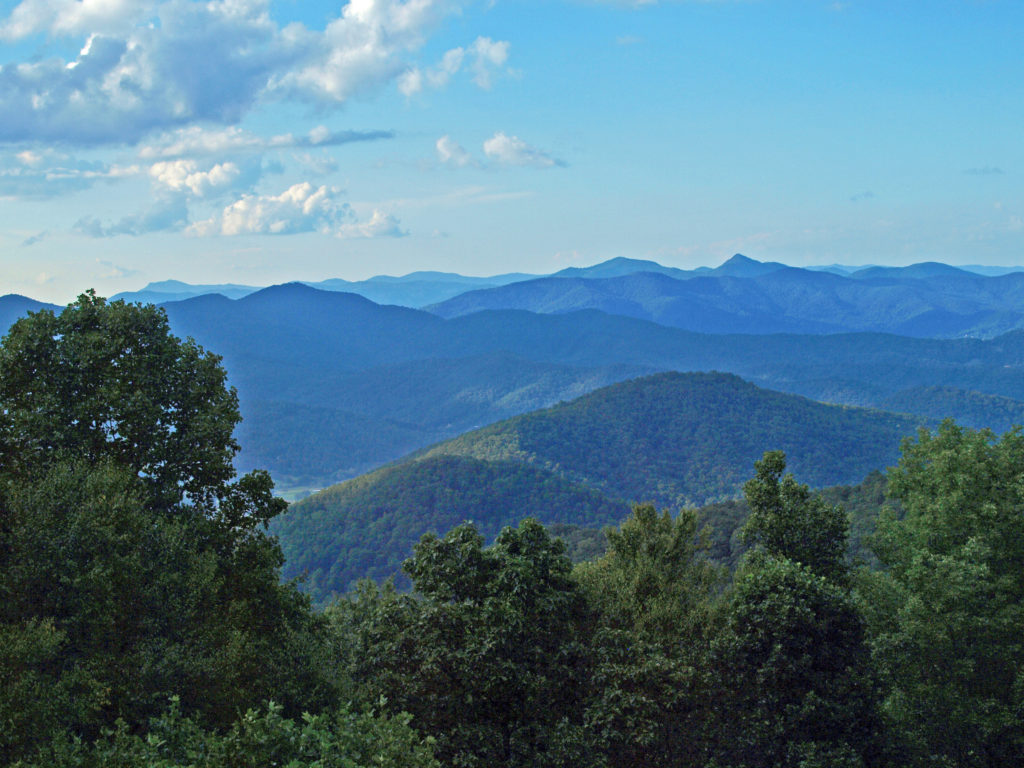
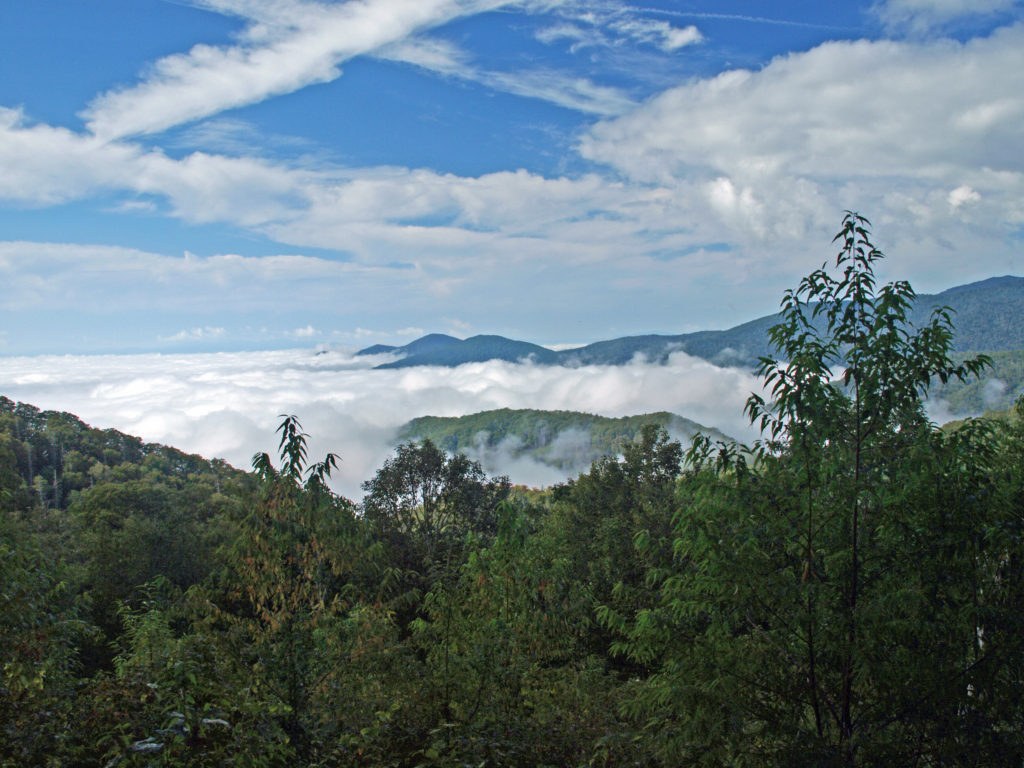
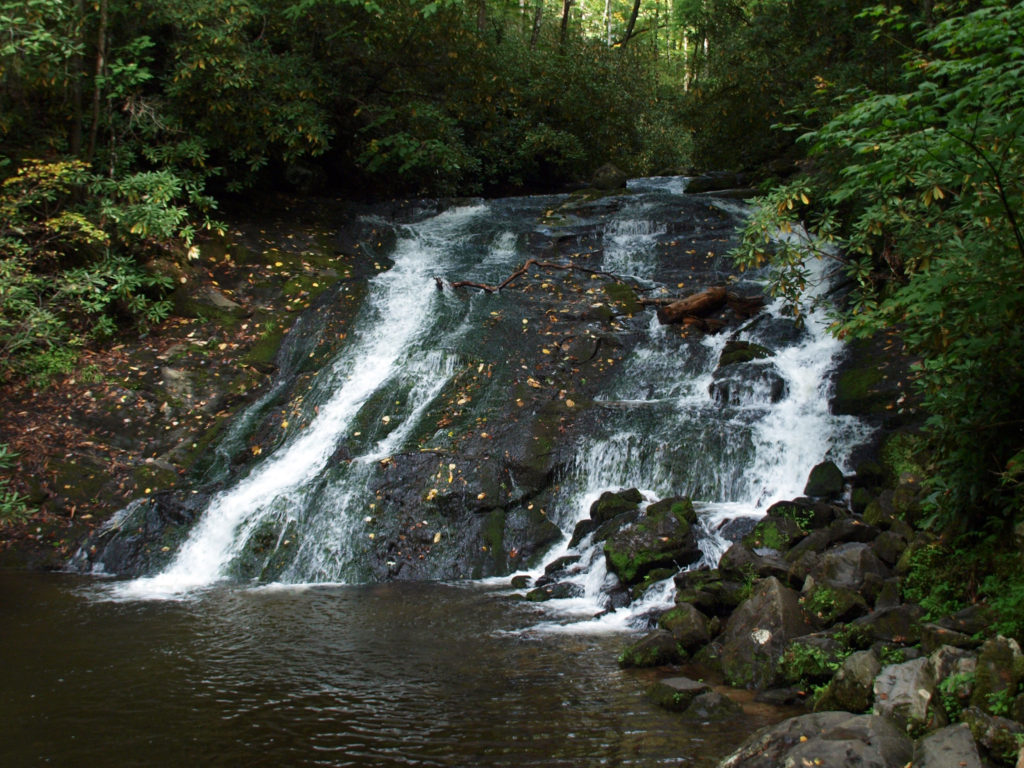
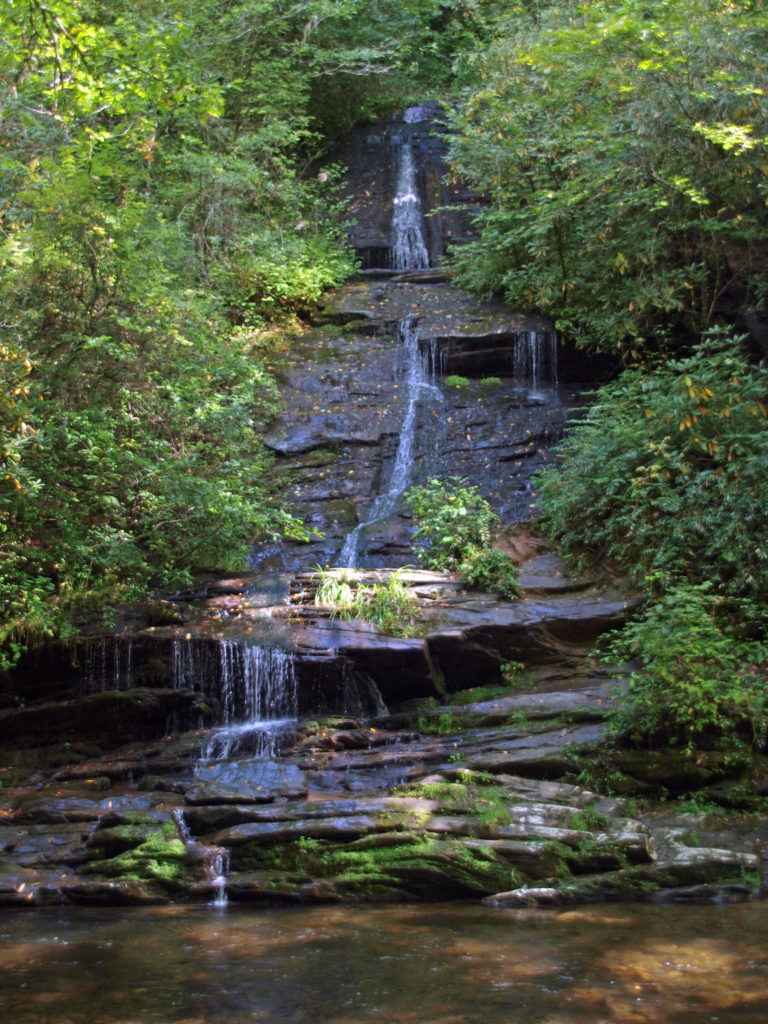
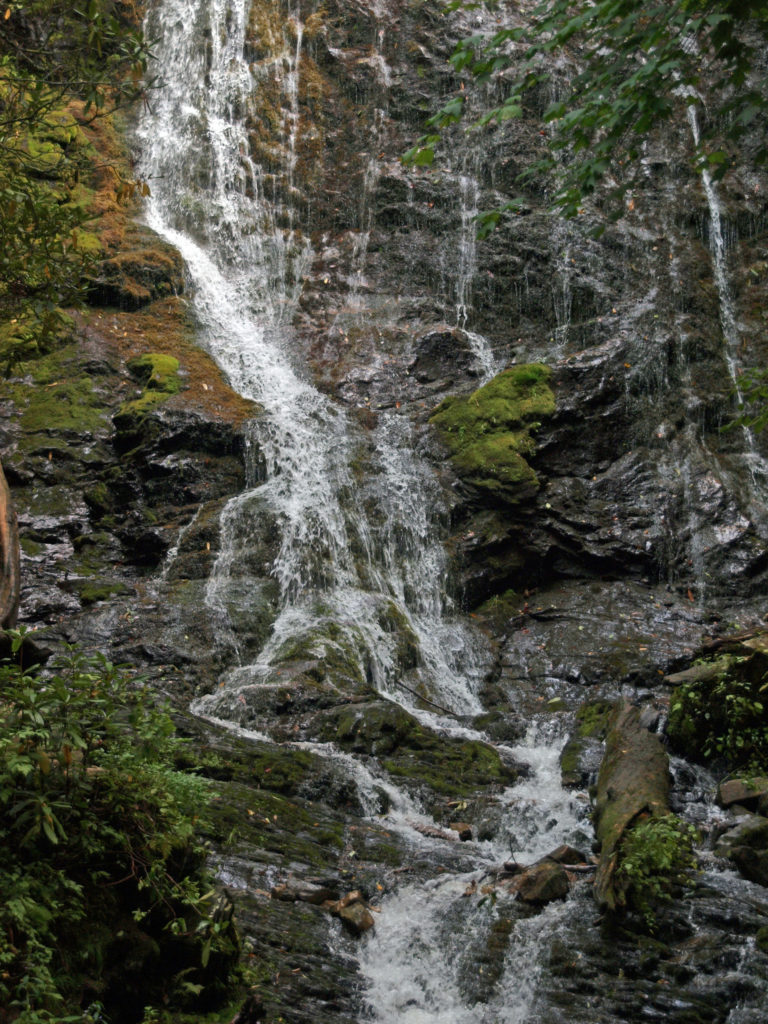
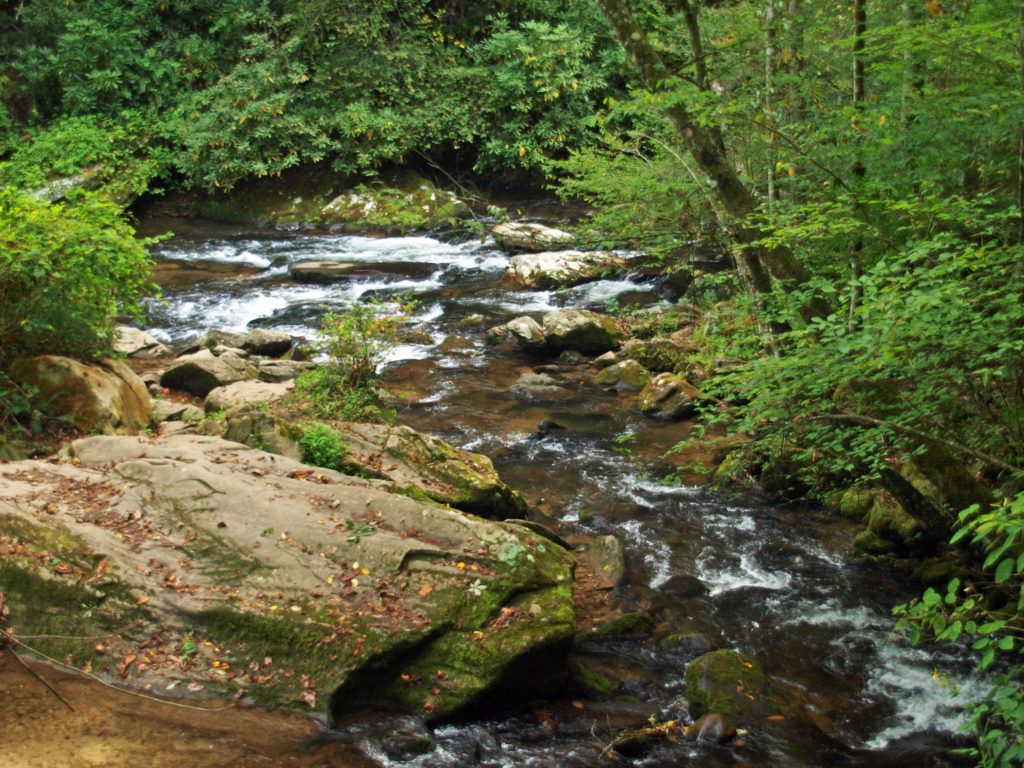 We spent most of the rest of the day hiking to a number of the park’s many waterfalls. The Smokies have a different, softer feel to them than the mountains of the Western U.S., but they have their own appeal. We were there a little too early in the season to catch much in the way of fall colors, but there were hints of how beautiful it would be in a few weeks.
We spent most of the rest of the day hiking to a number of the park’s many waterfalls. The Smokies have a different, softer feel to them than the mountains of the Western U.S., but they have their own appeal. We were there a little too early in the season to catch much in the way of fall colors, but there were hints of how beautiful it would be in a few weeks.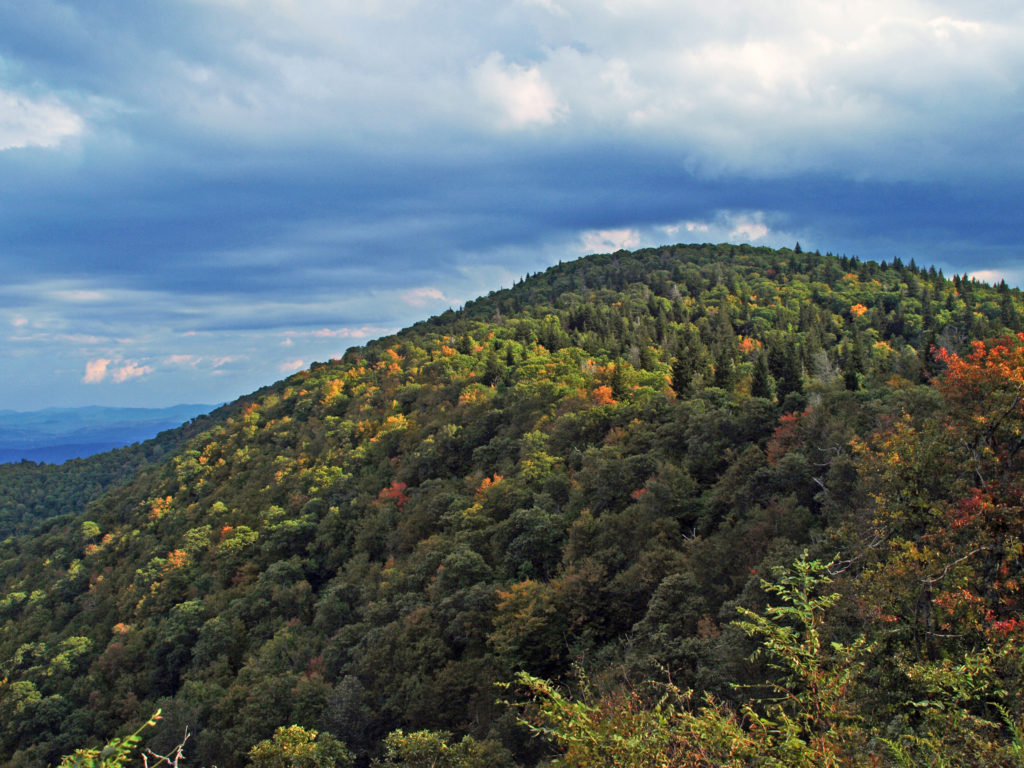
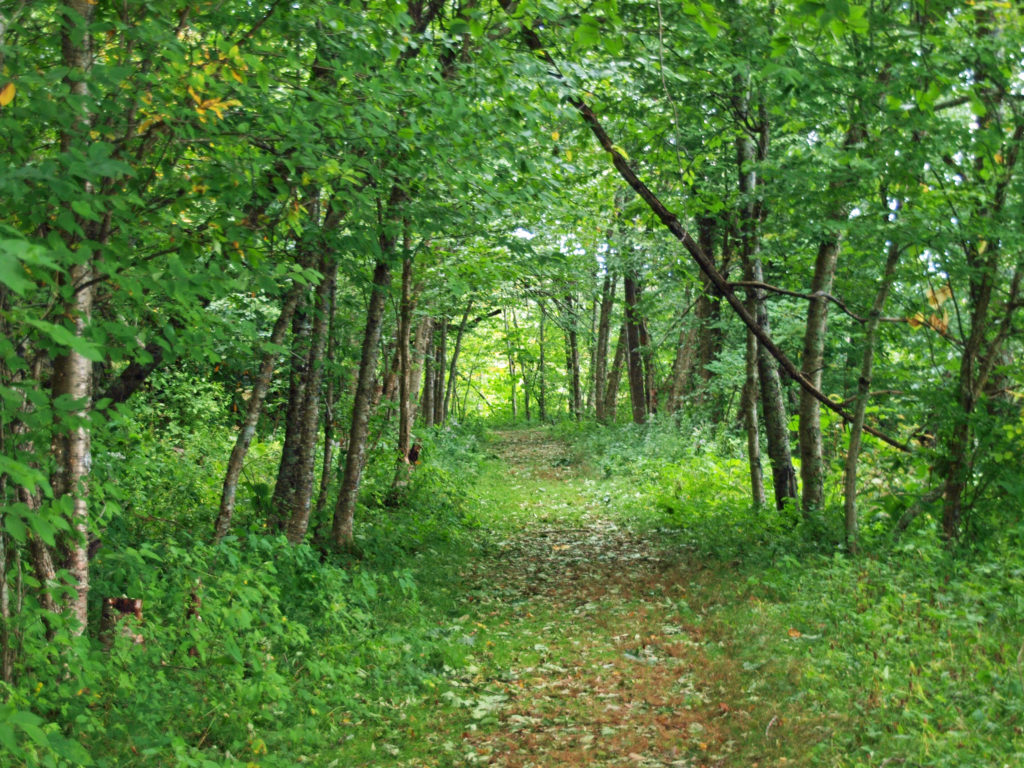
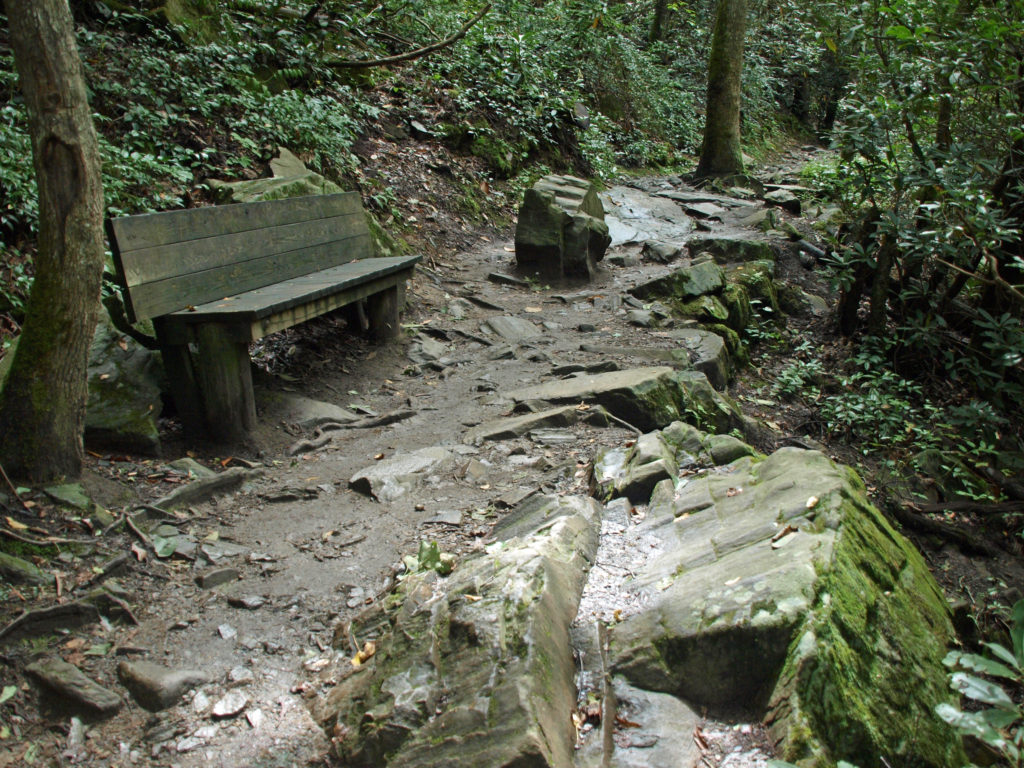
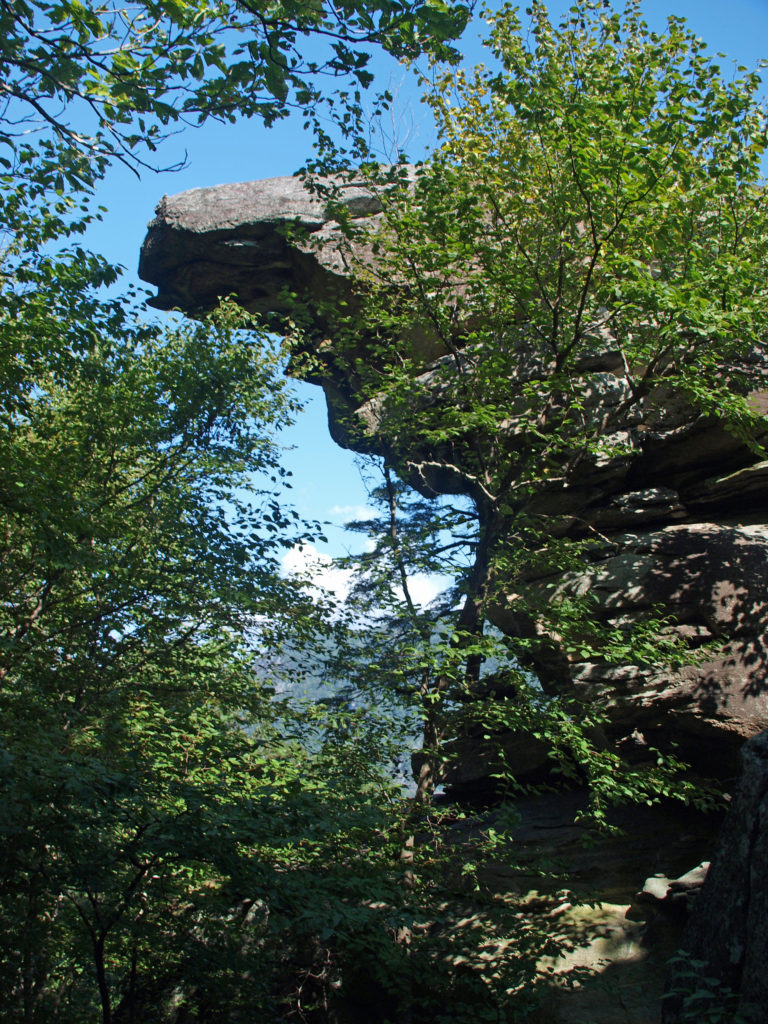
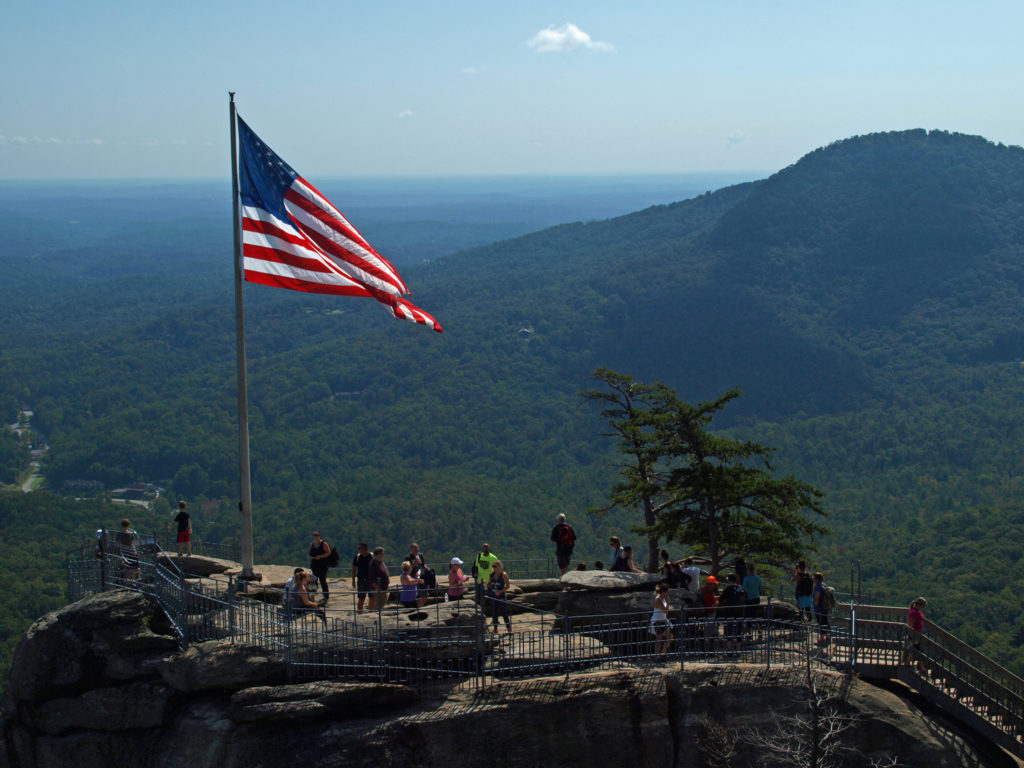
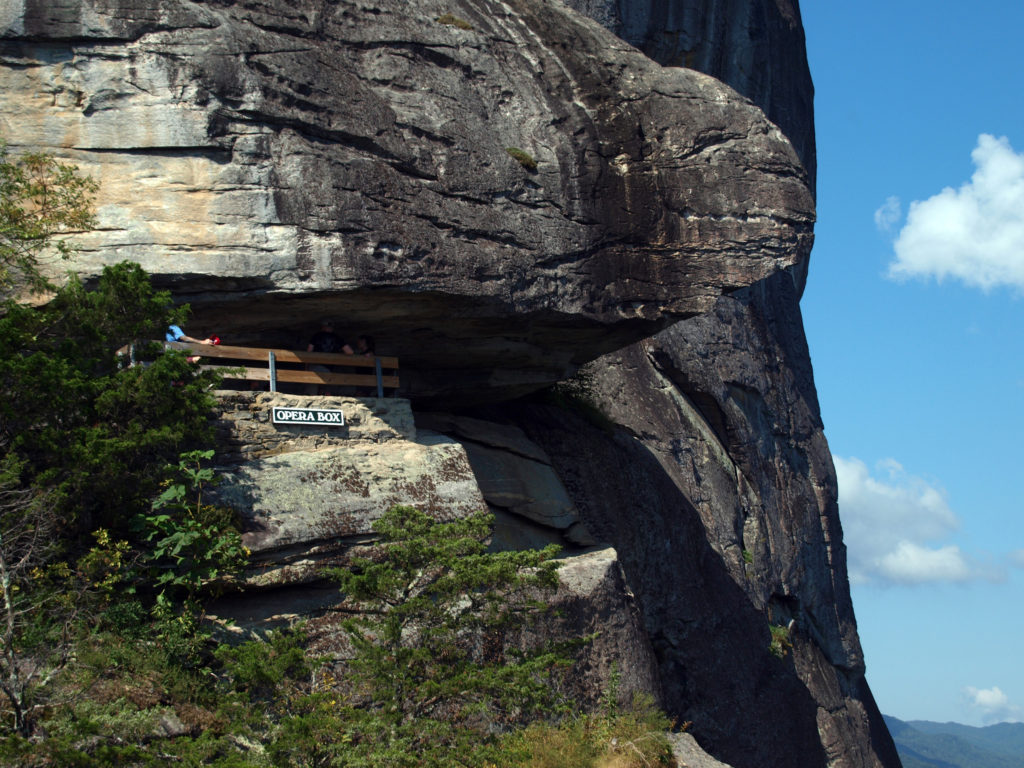
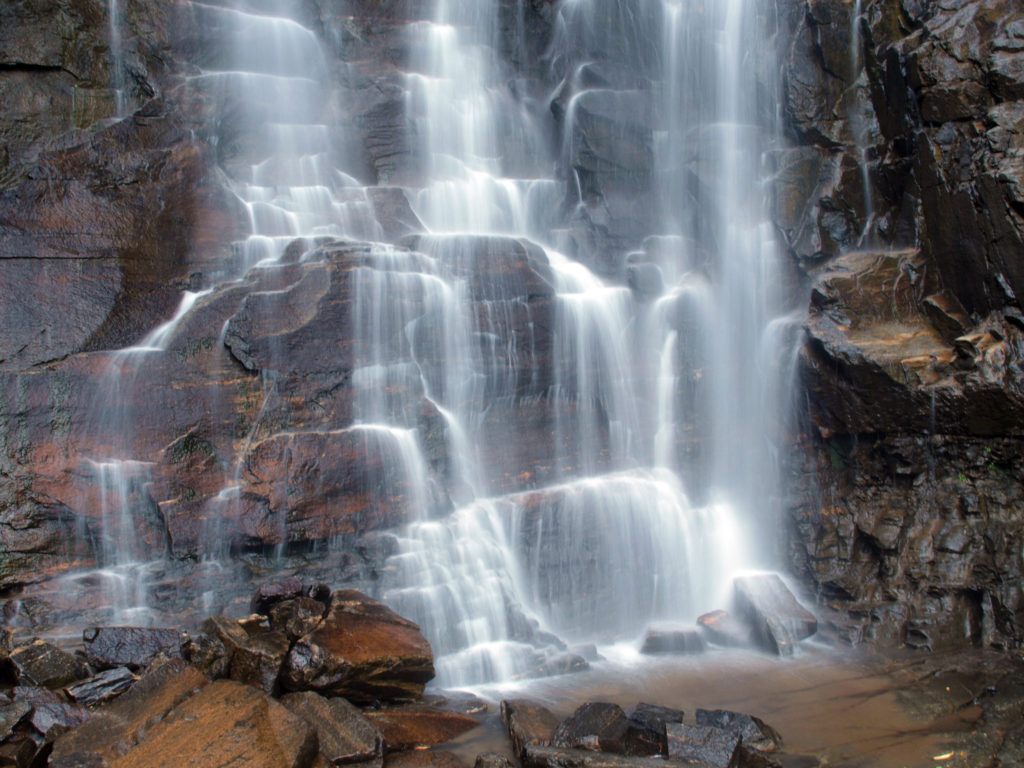
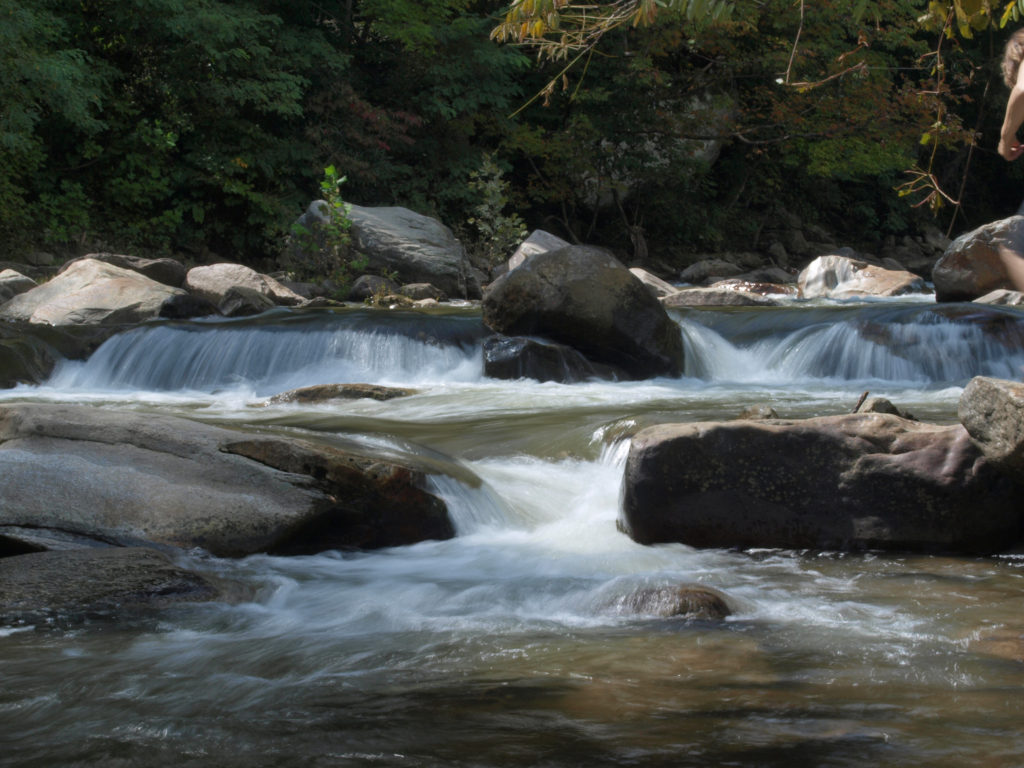
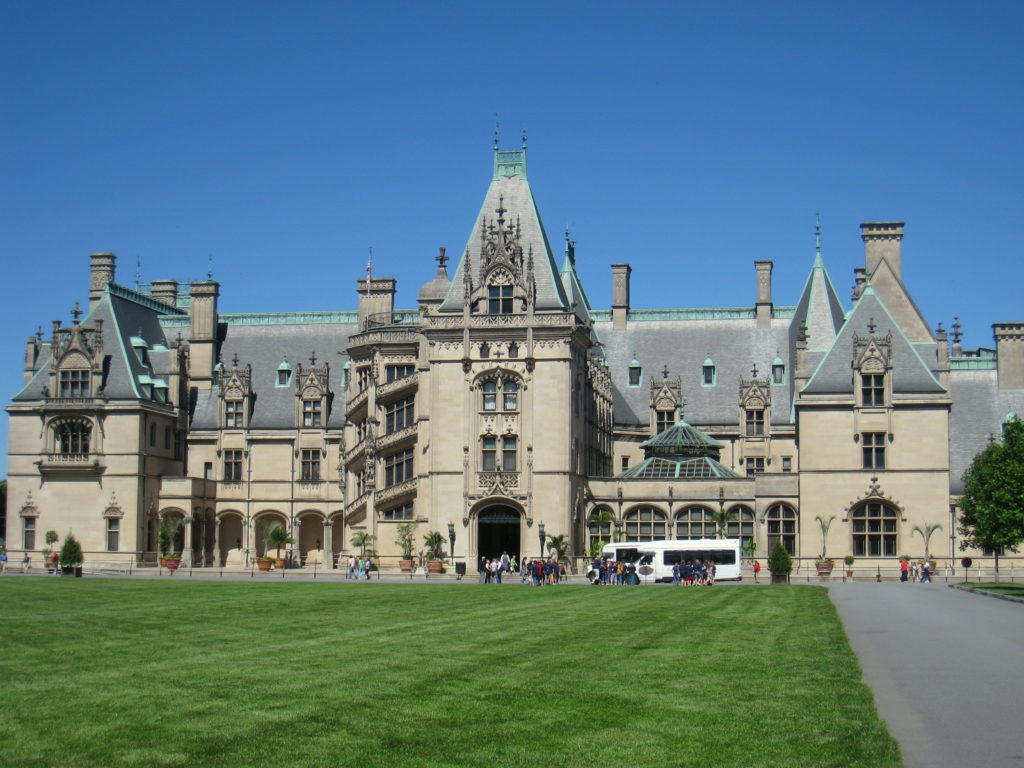
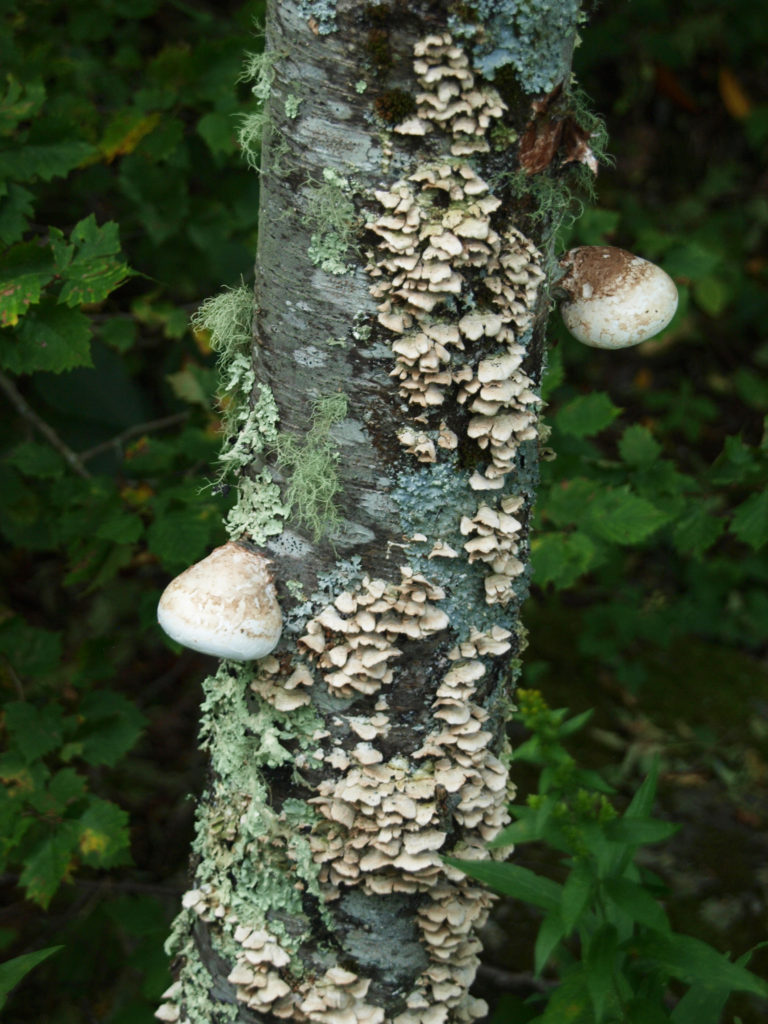
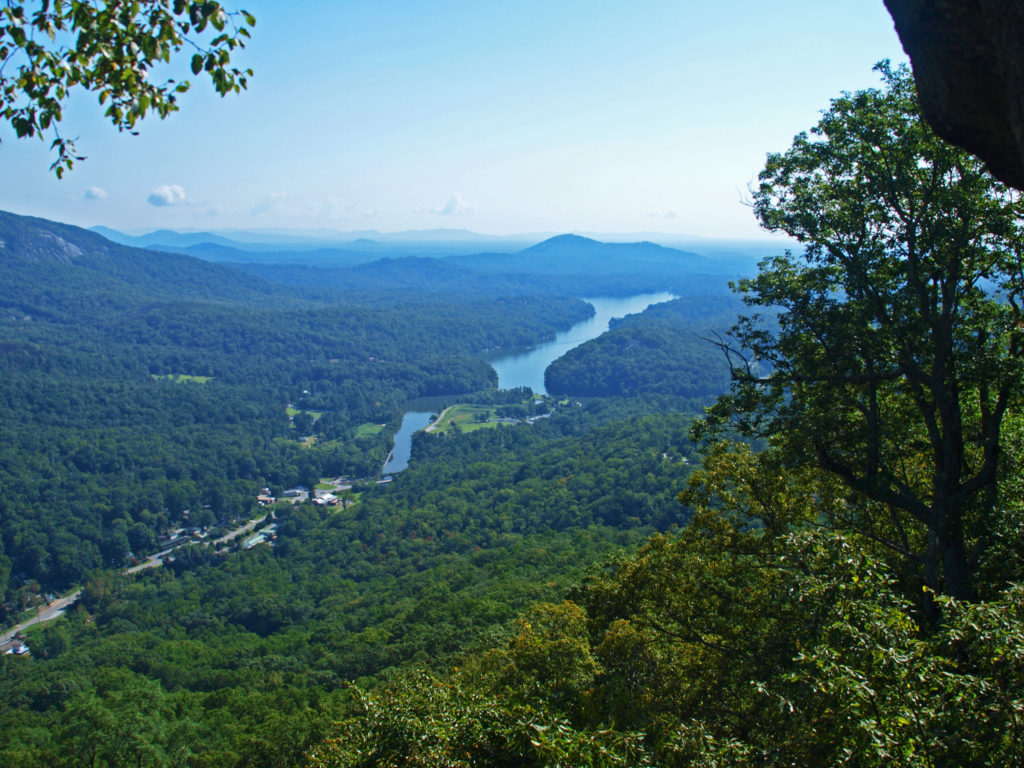 After visiting Asheville, we visited two charming Old South cities: Charleston, SC, and Savannah, Georgia. Check out our posts on Charleston
After visiting Asheville, we visited two charming Old South cities: Charleston, SC, and Savannah, Georgia. Check out our posts on Charleston 